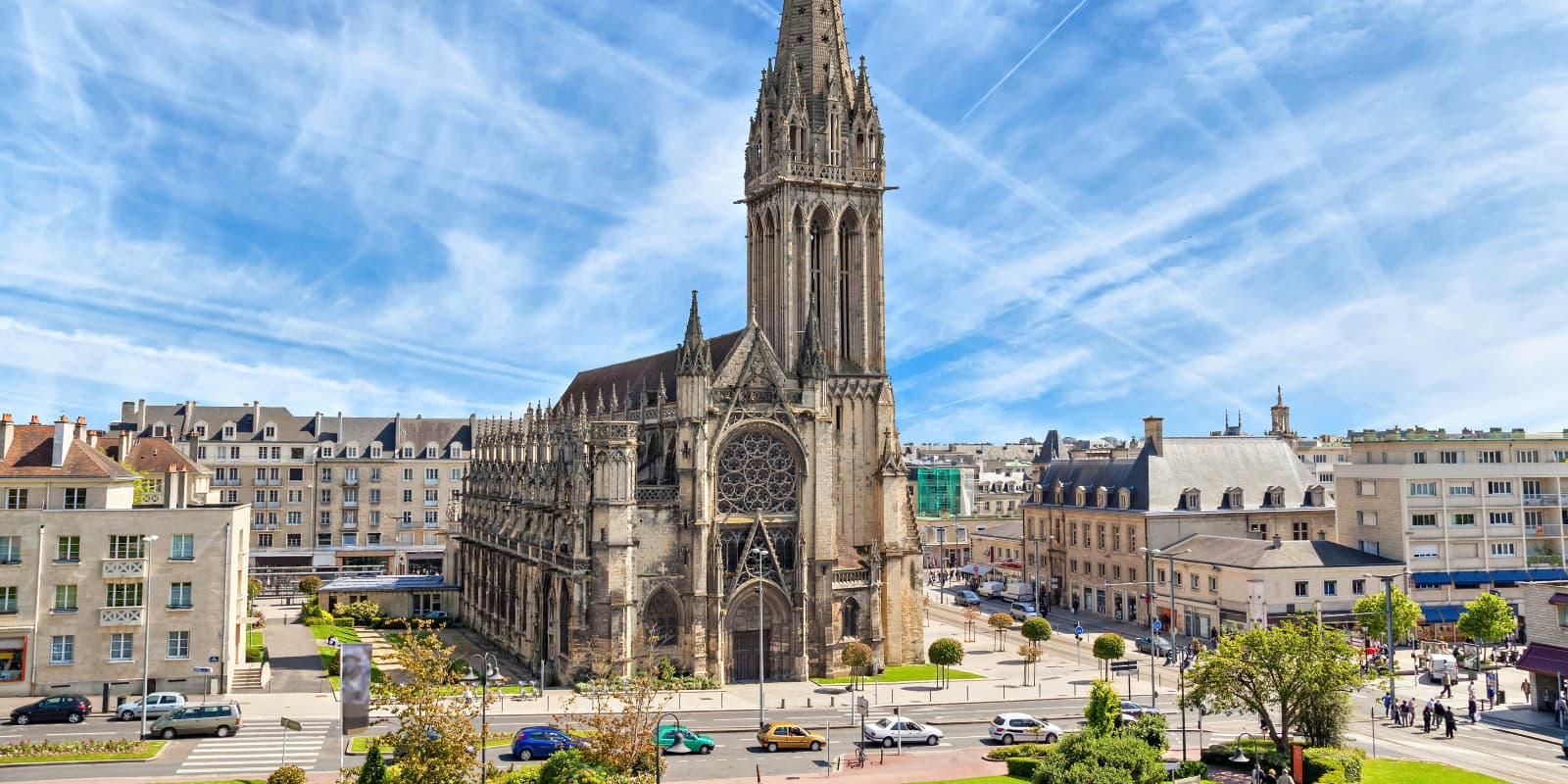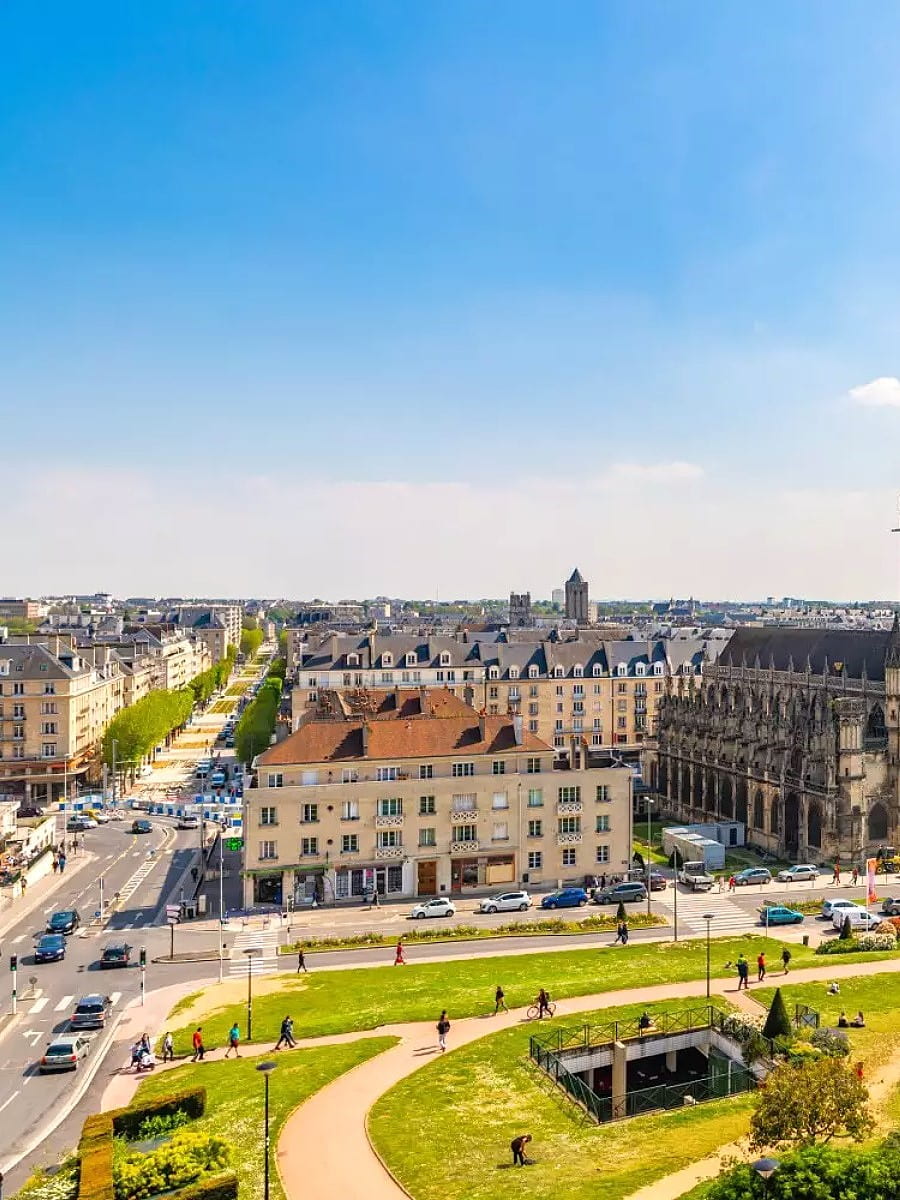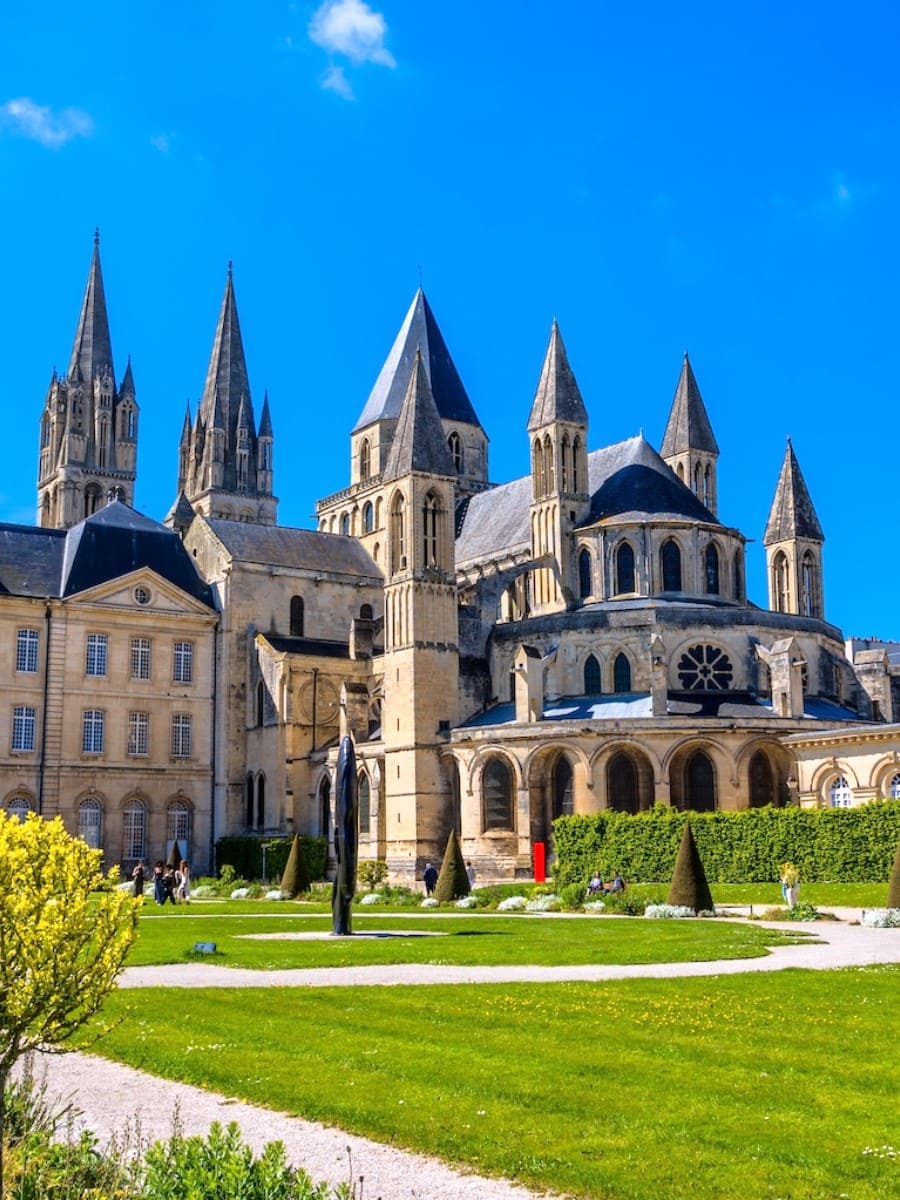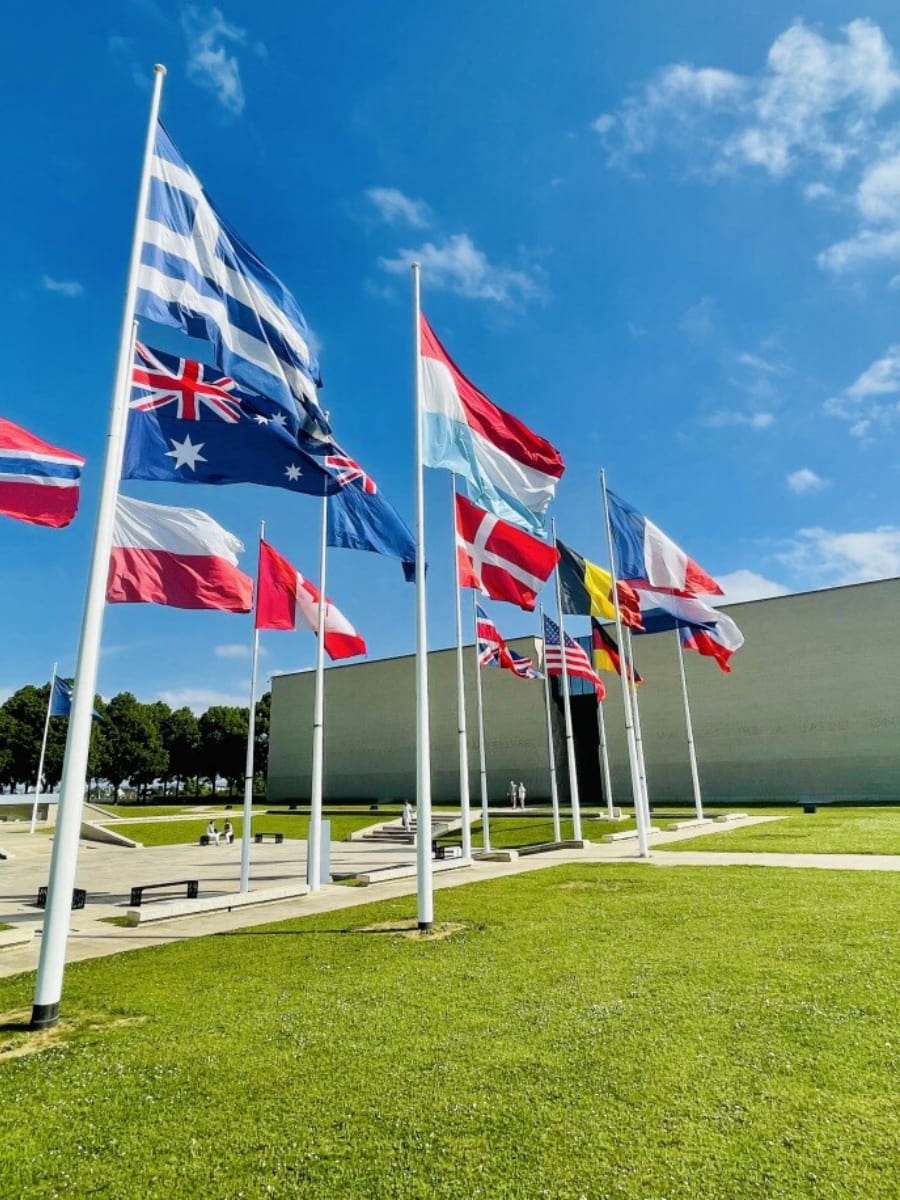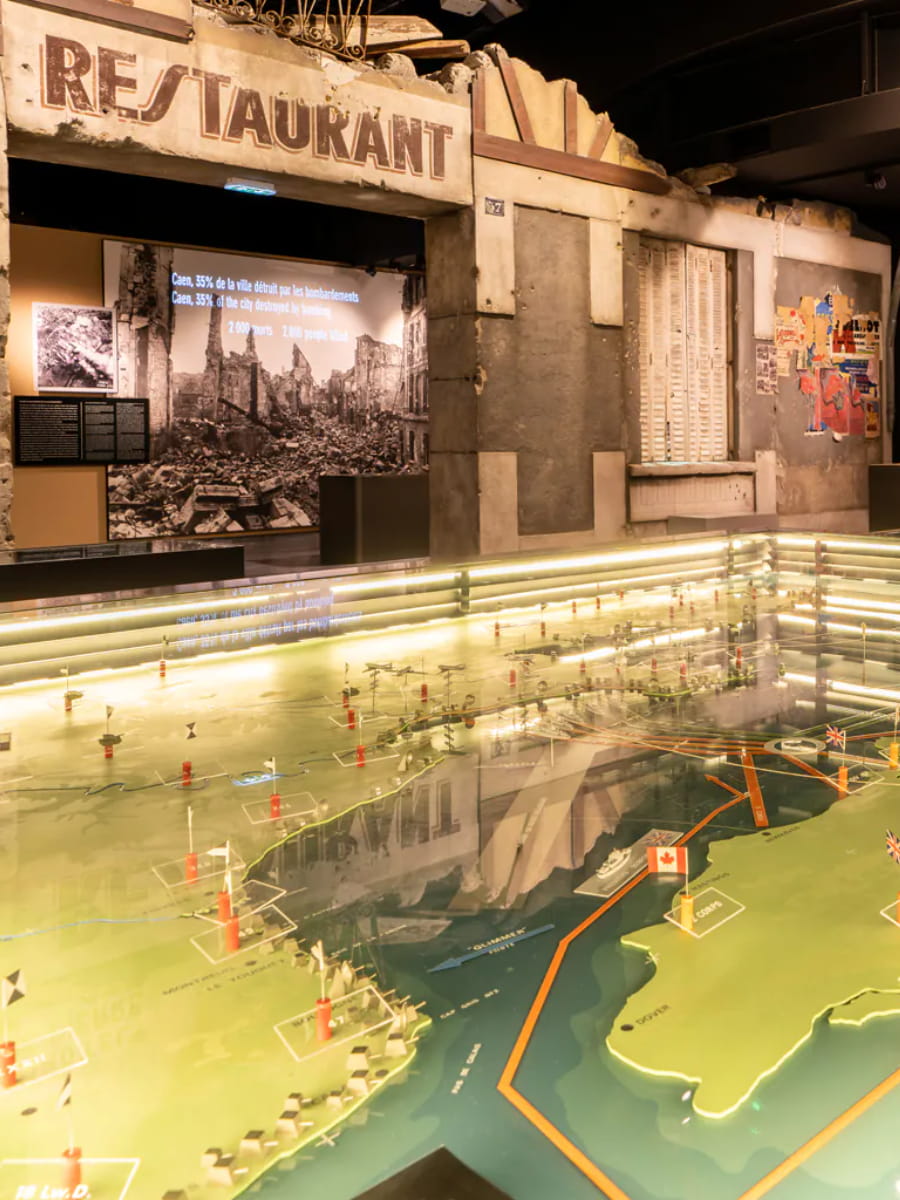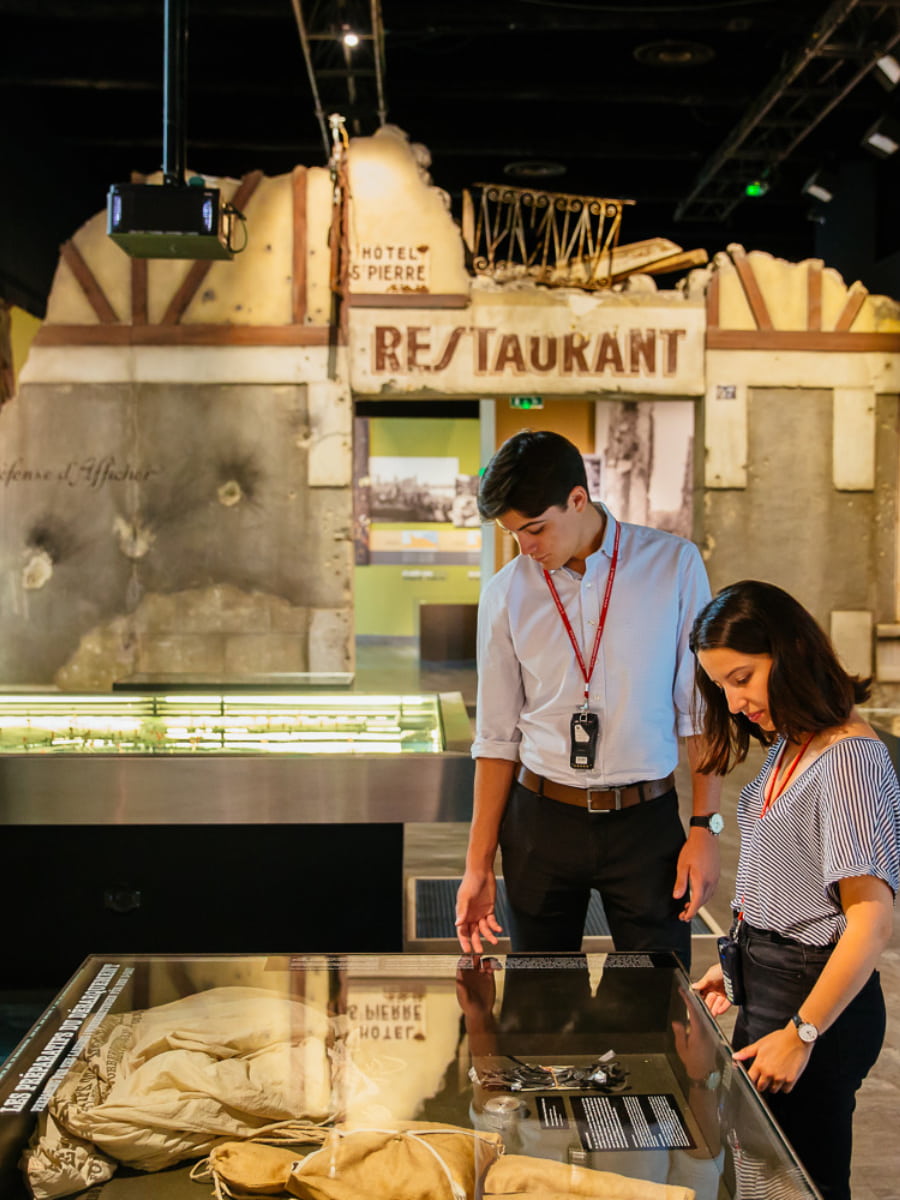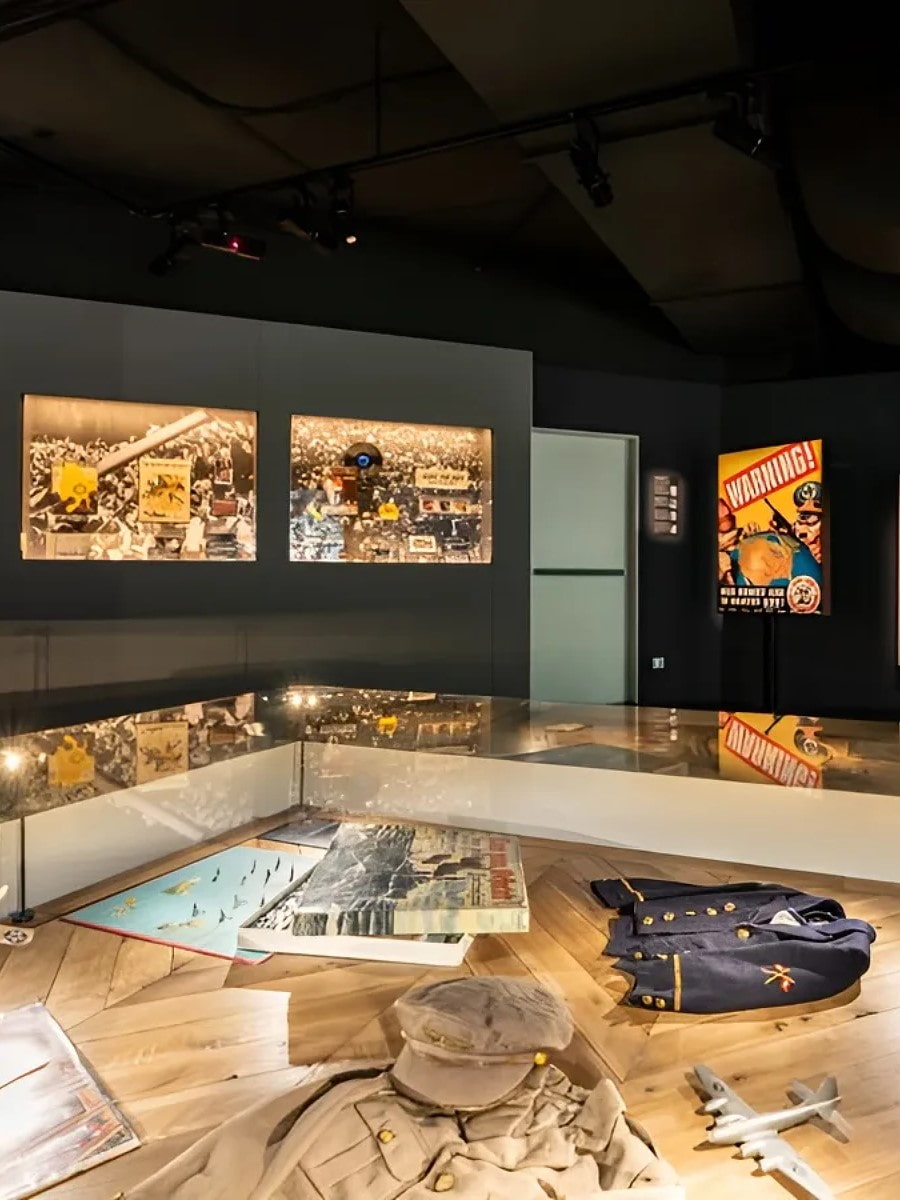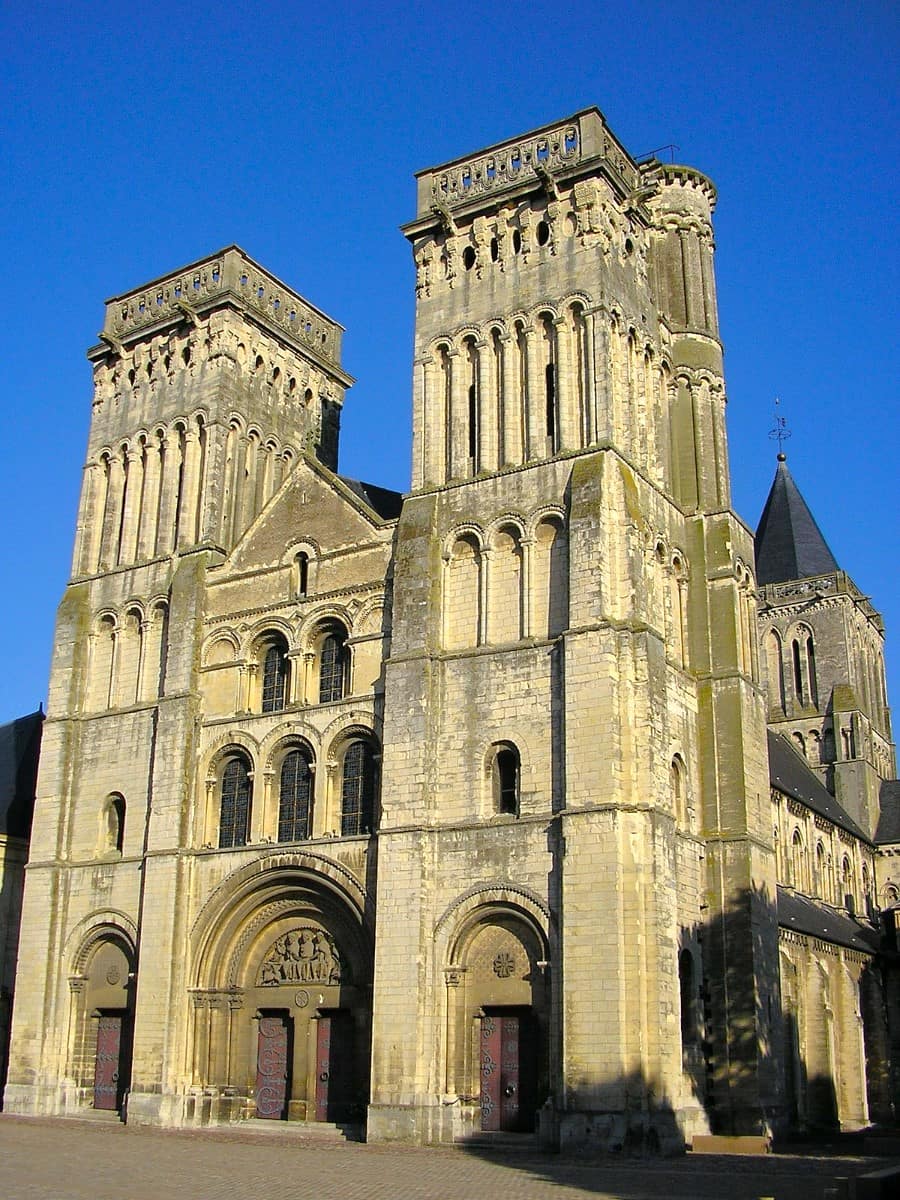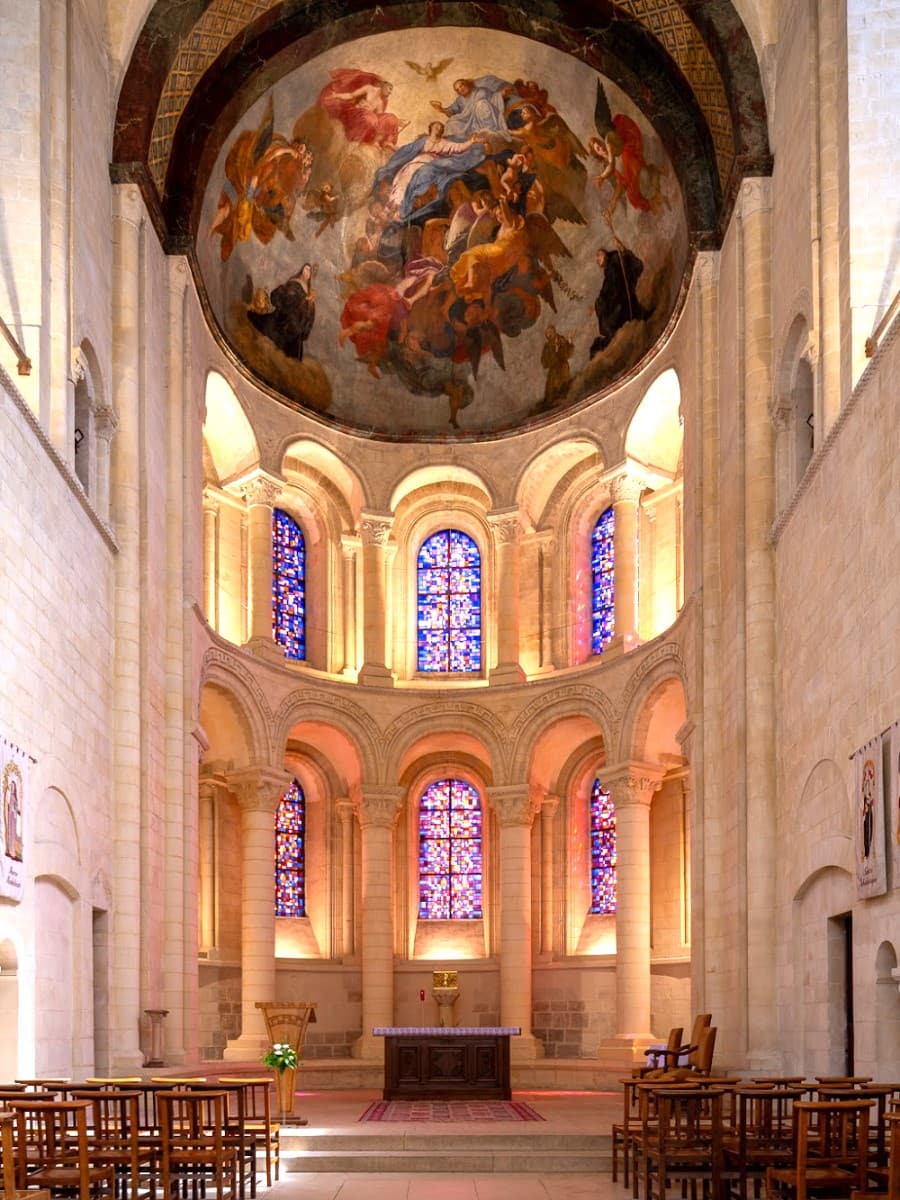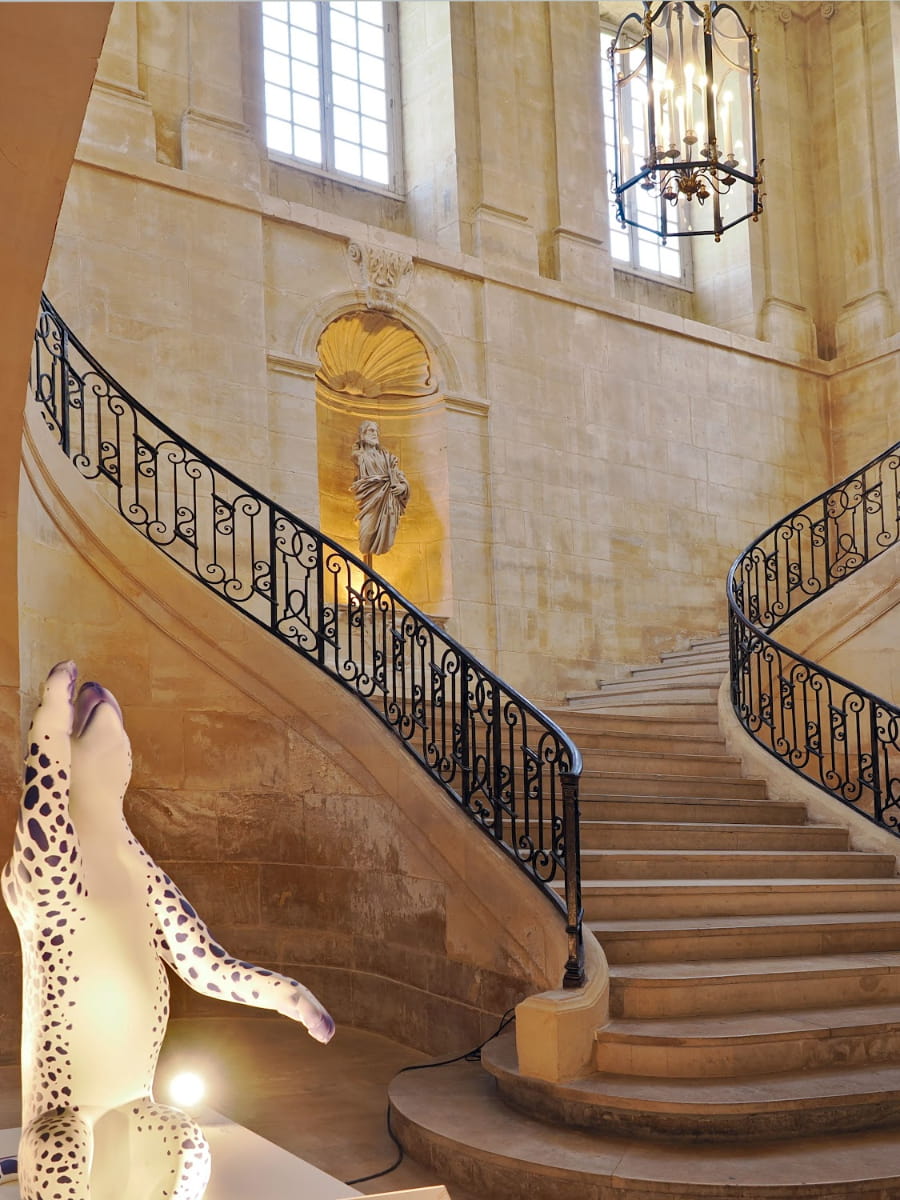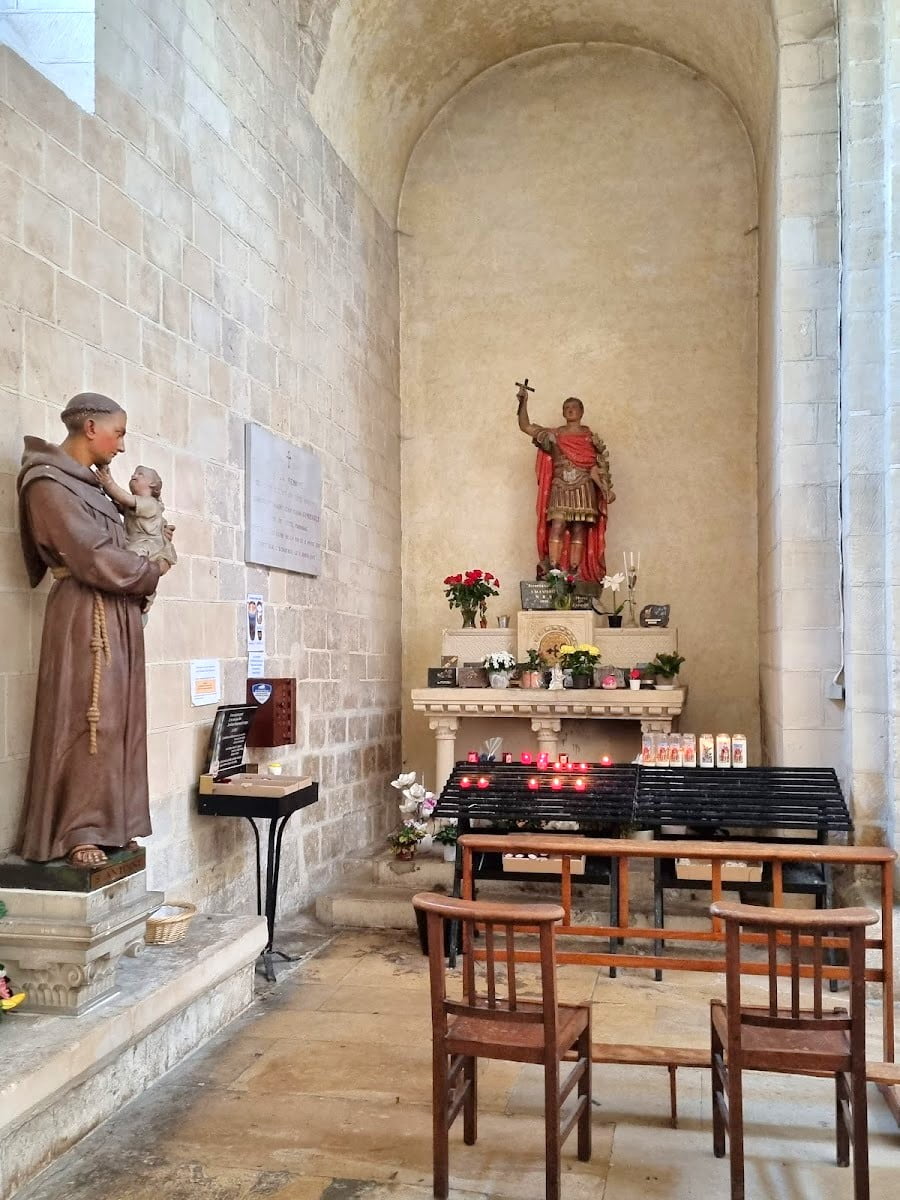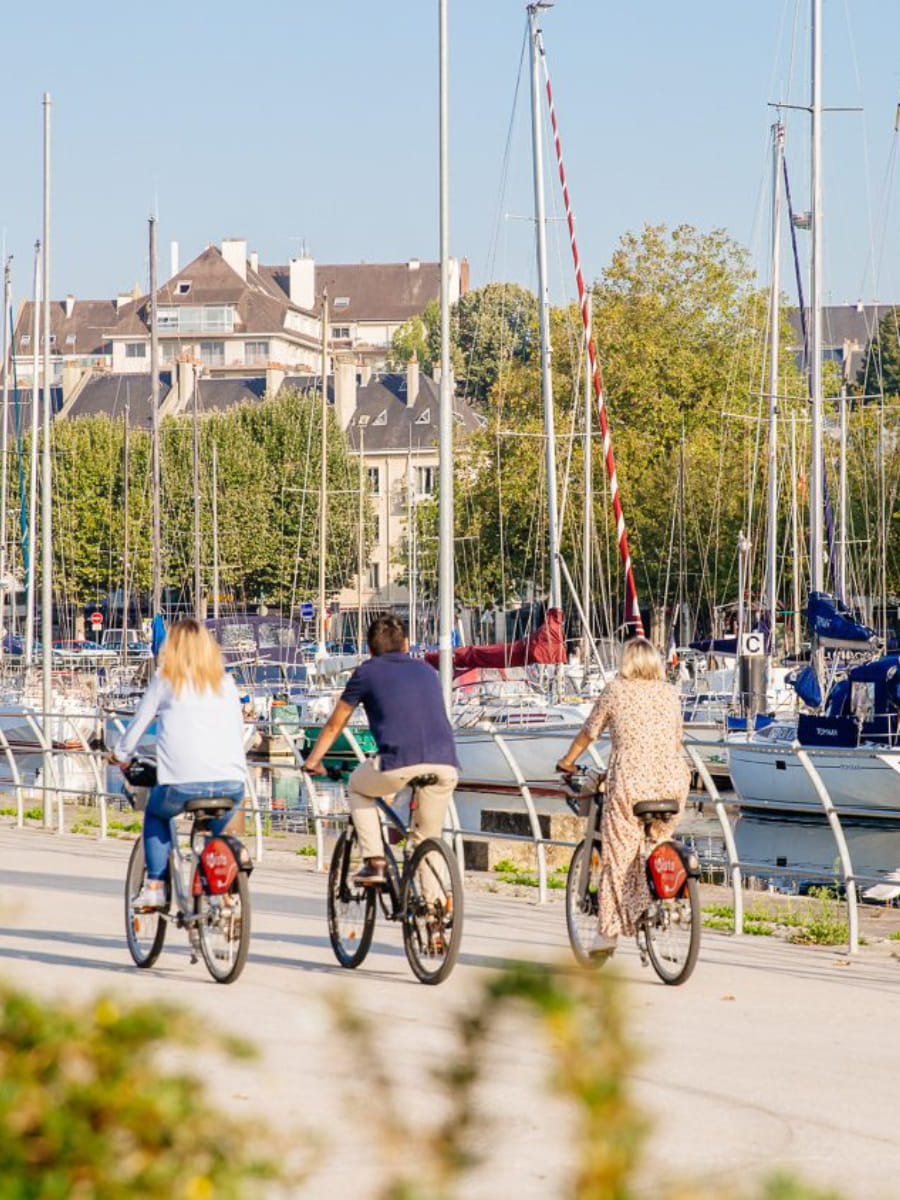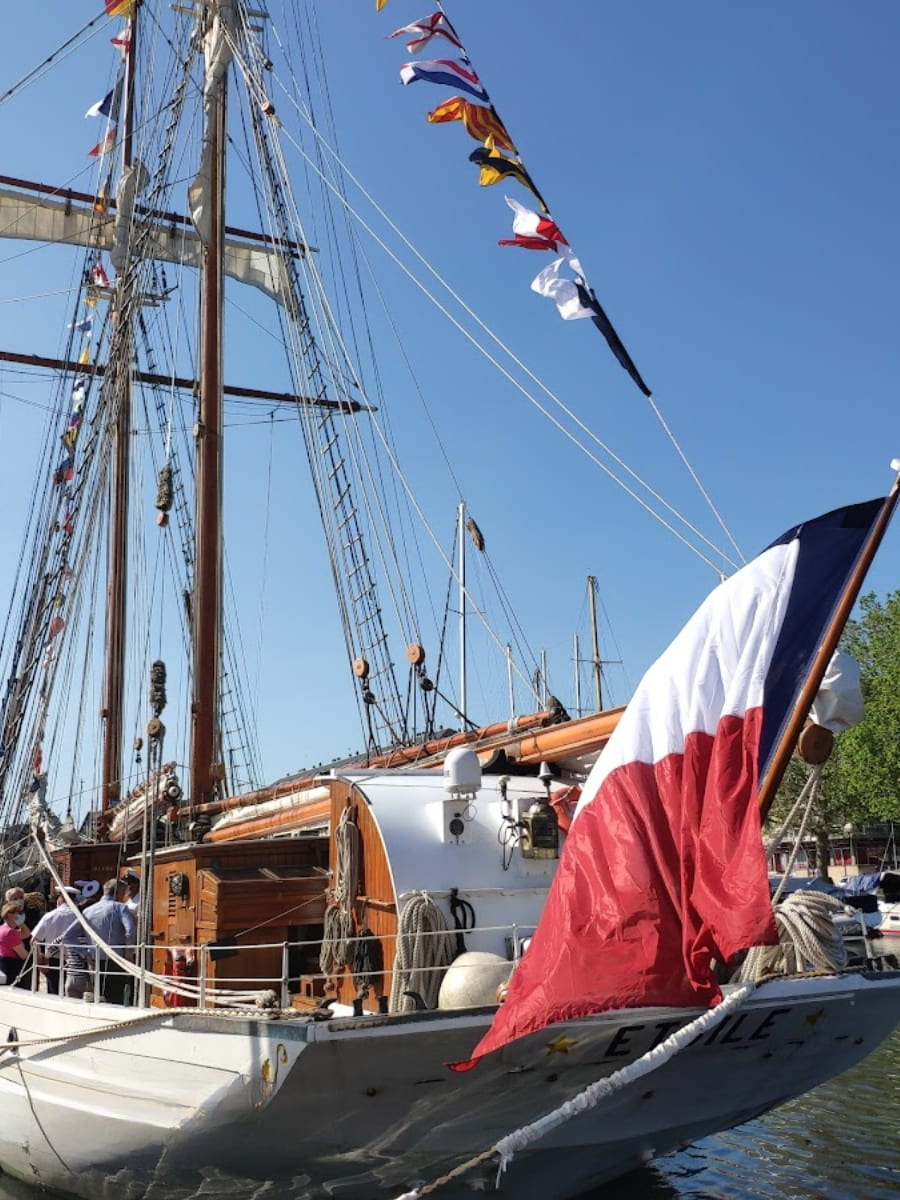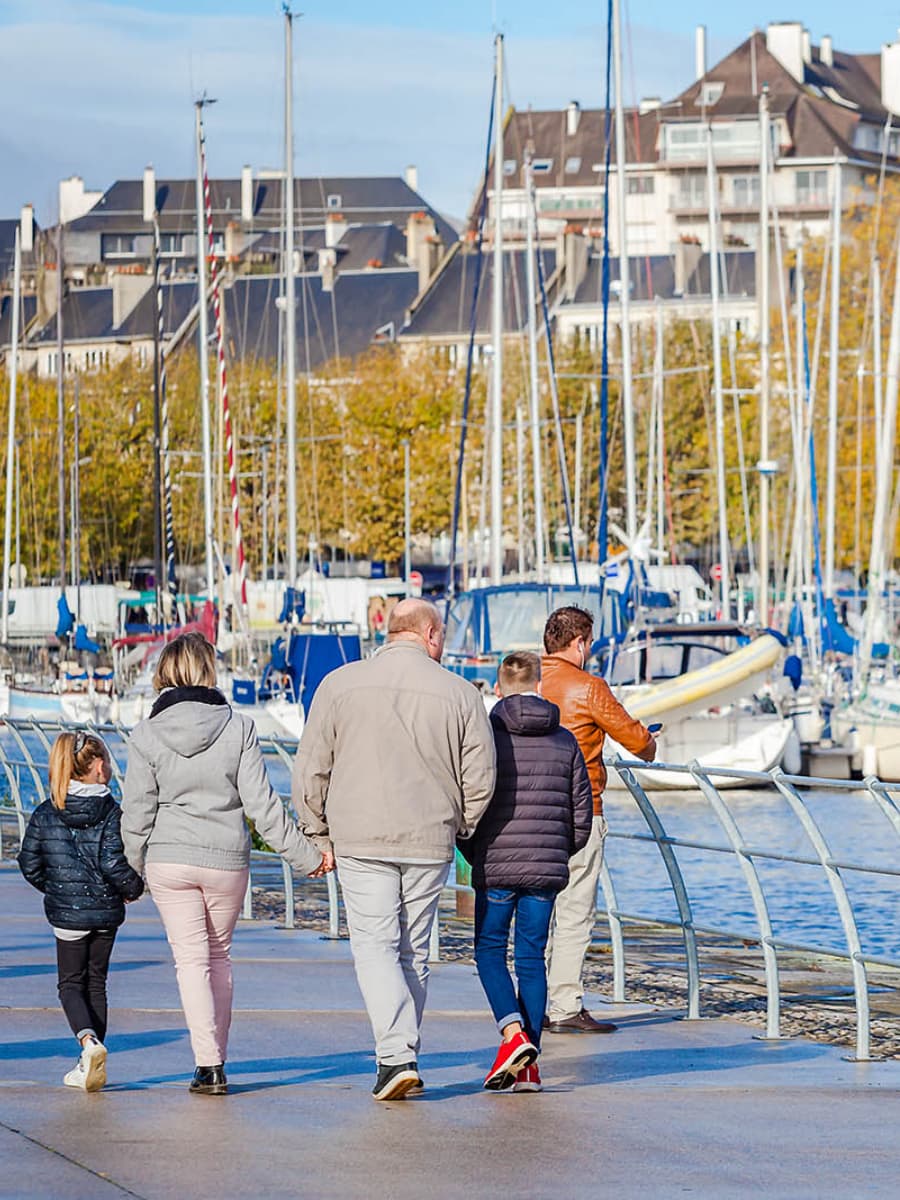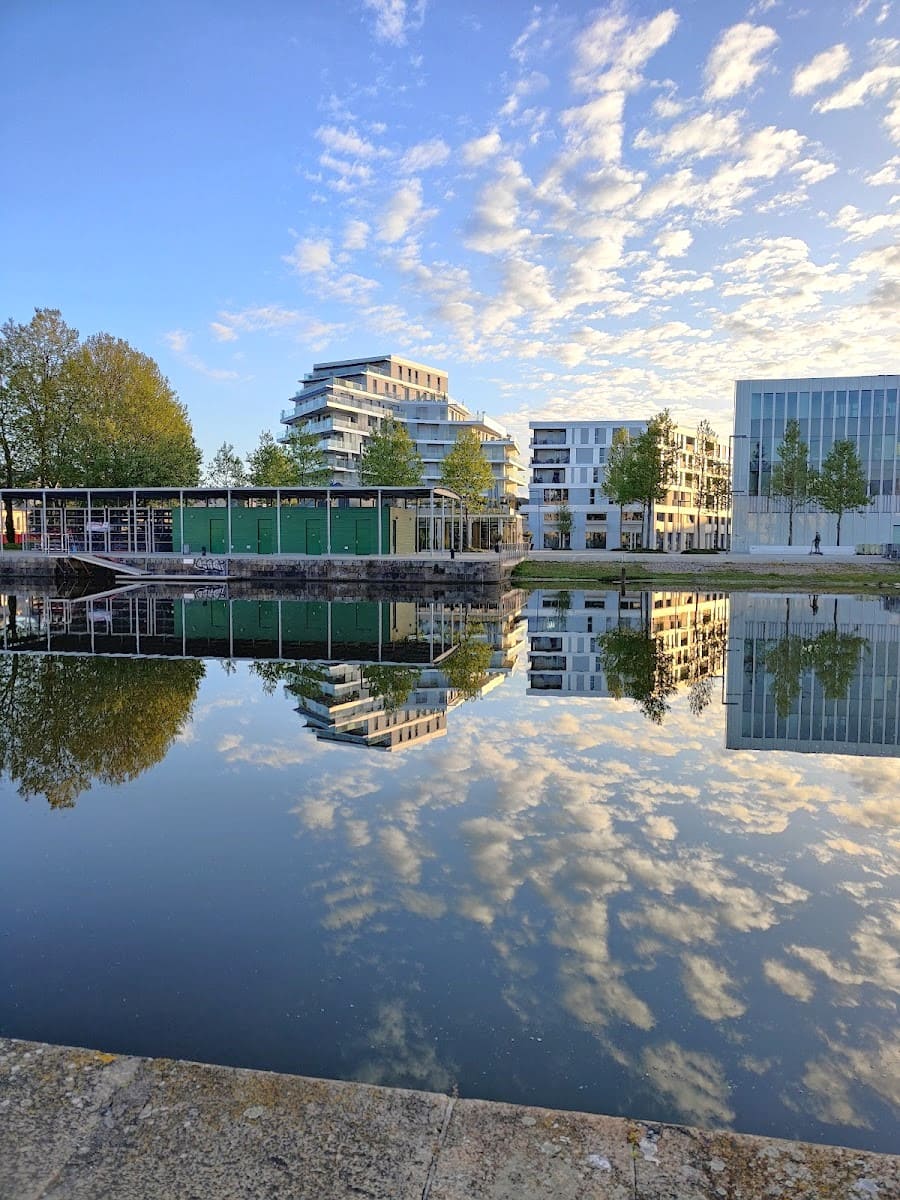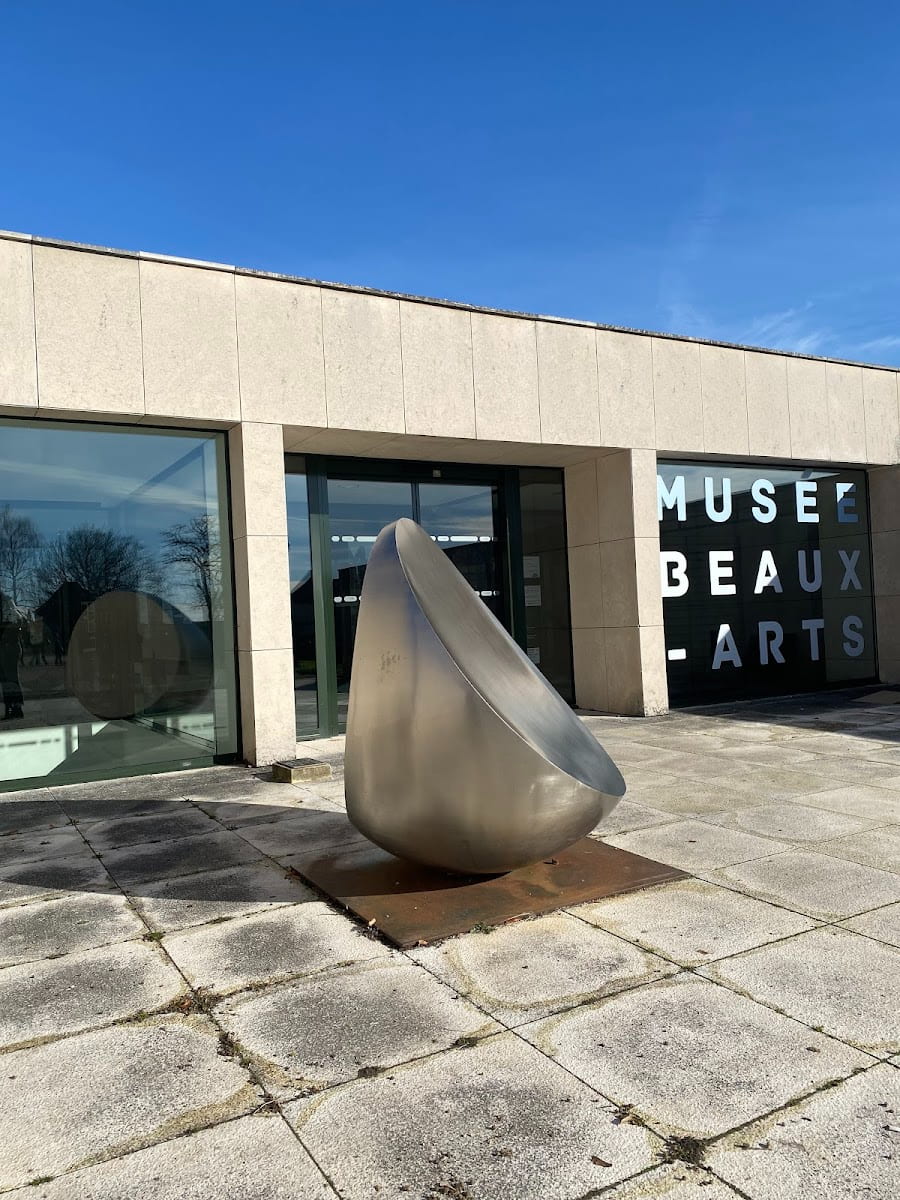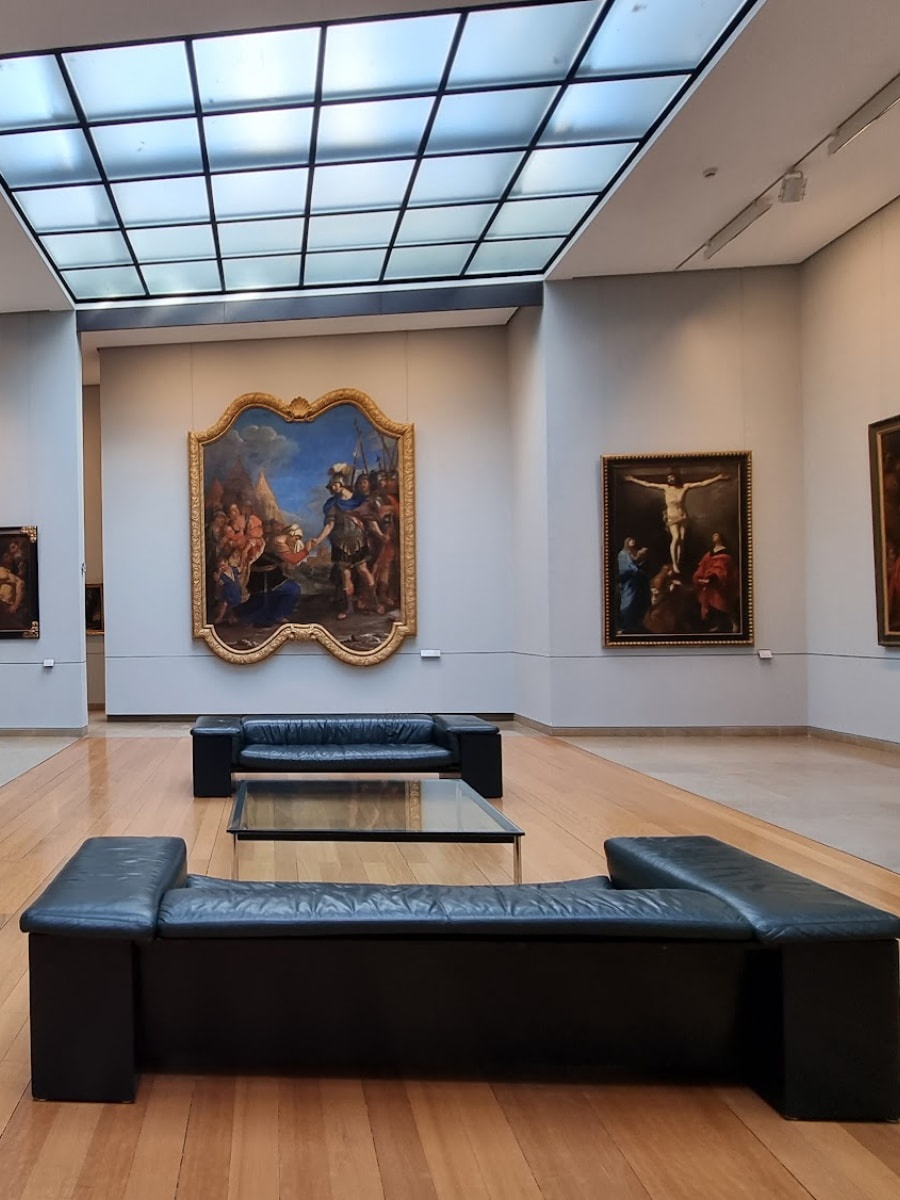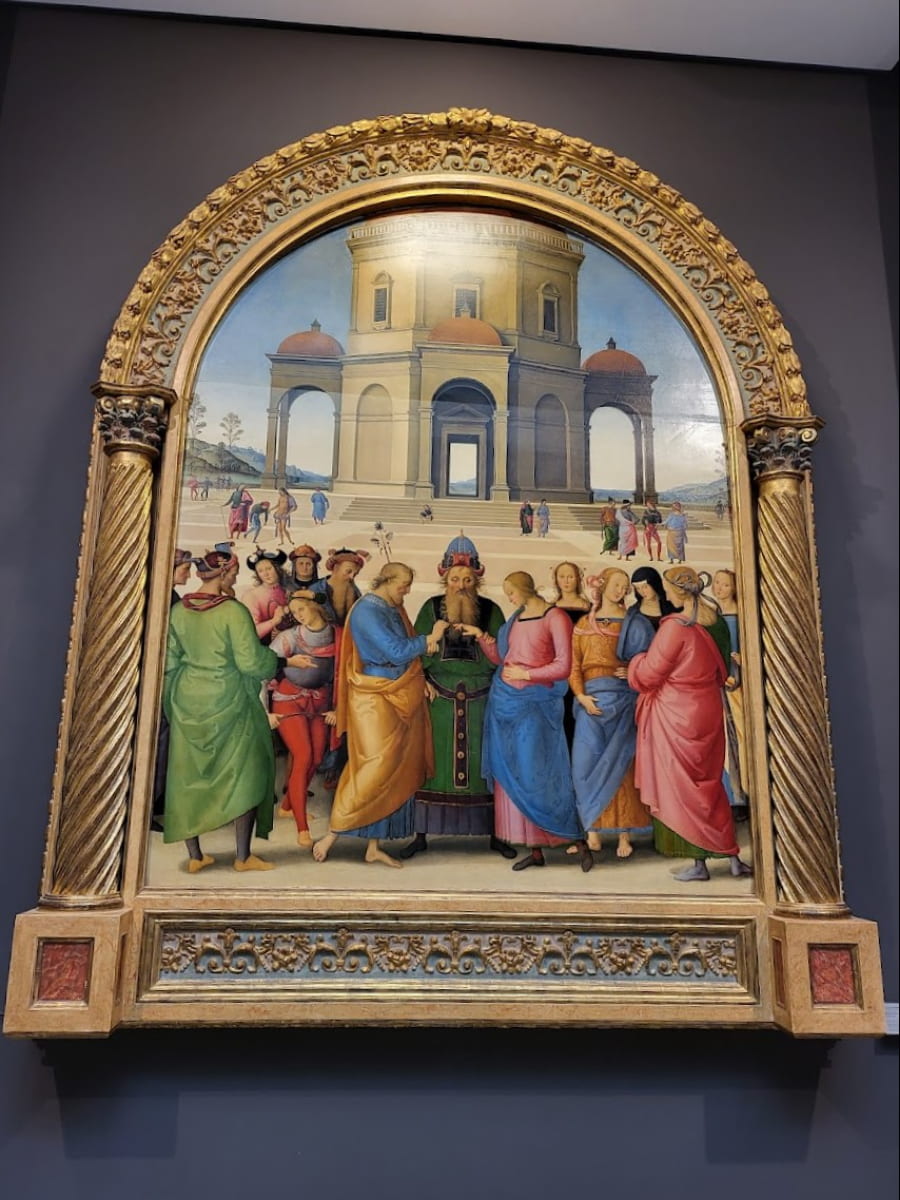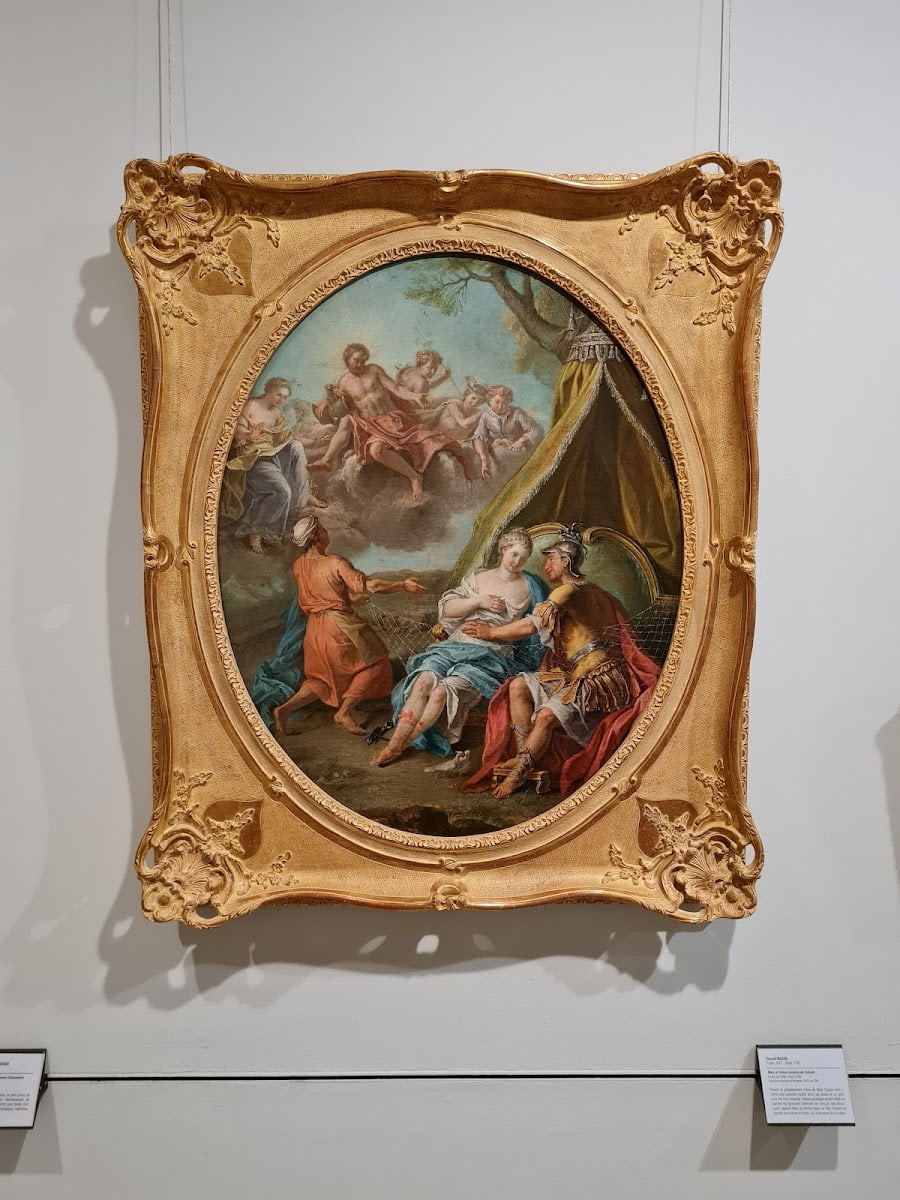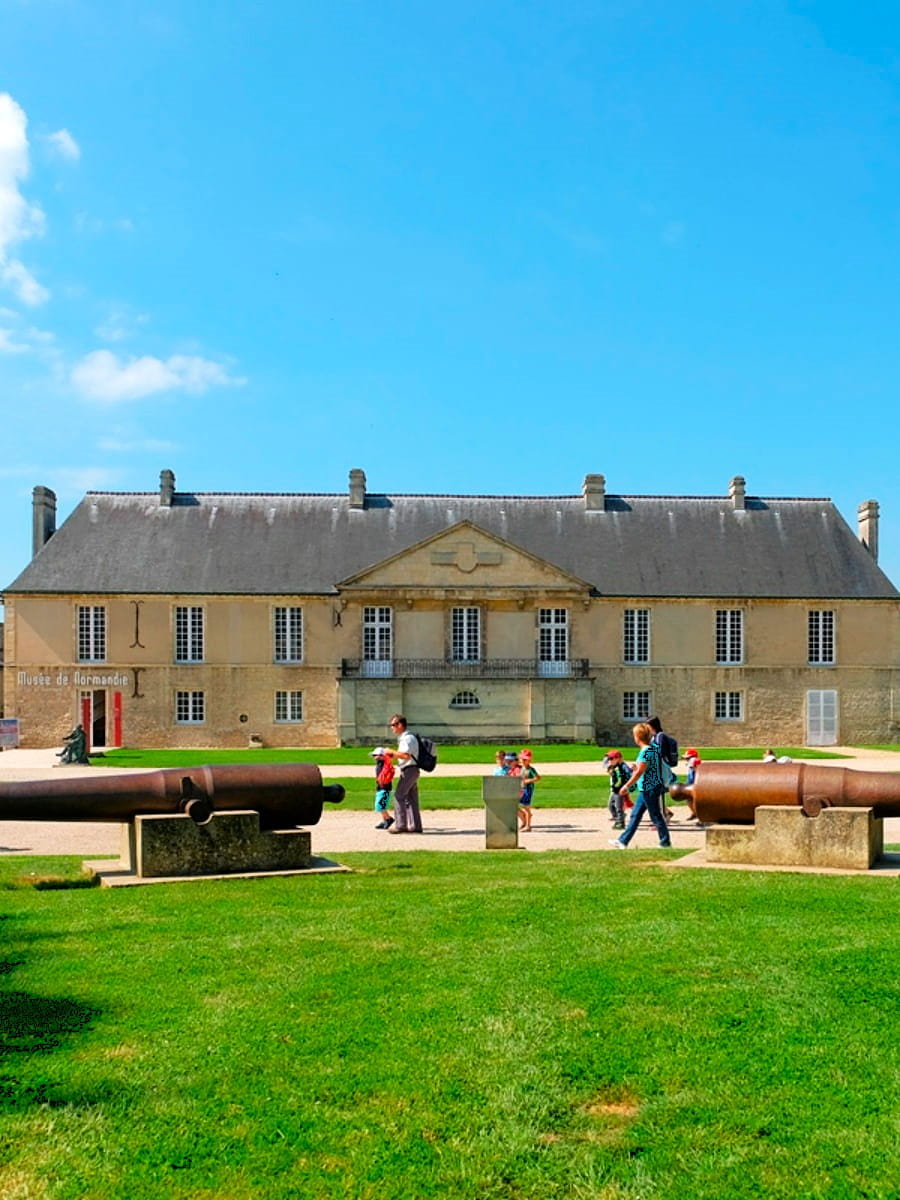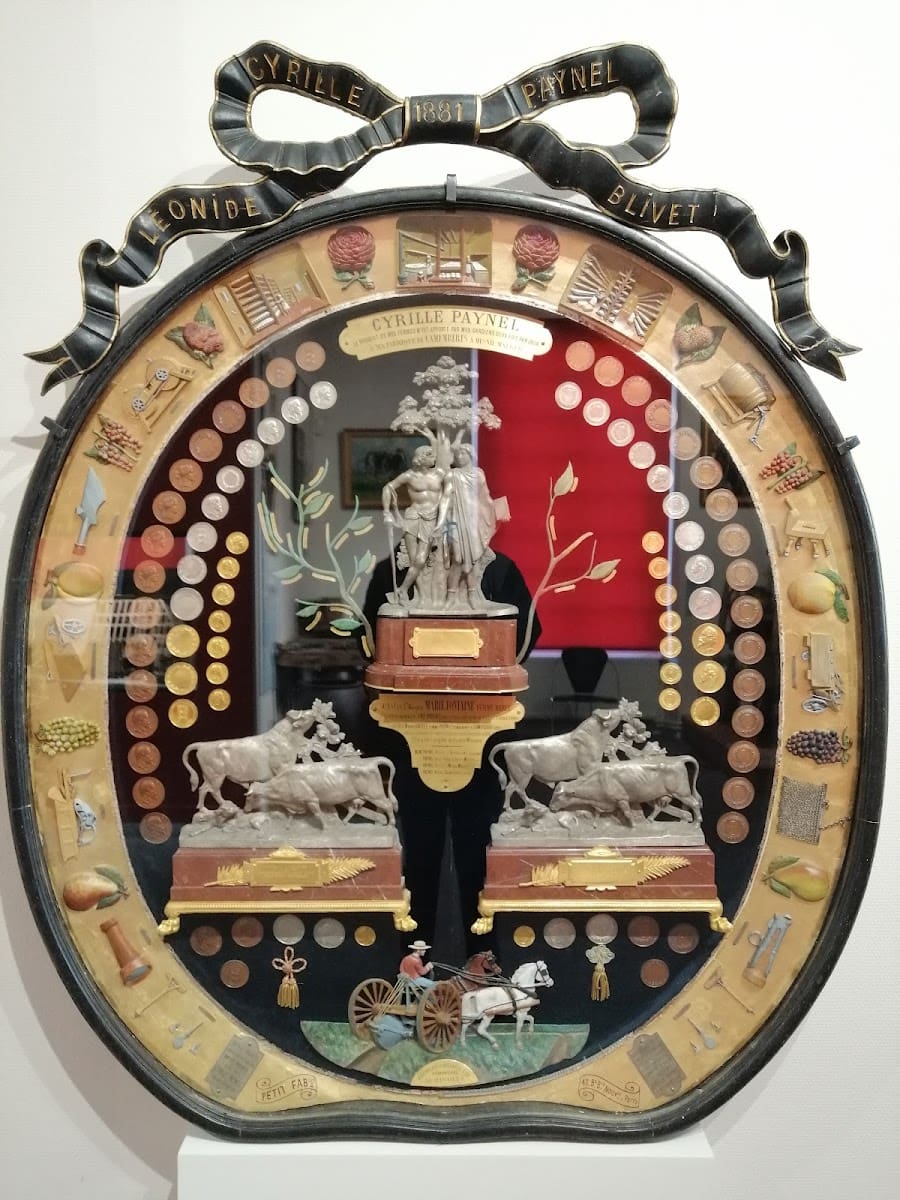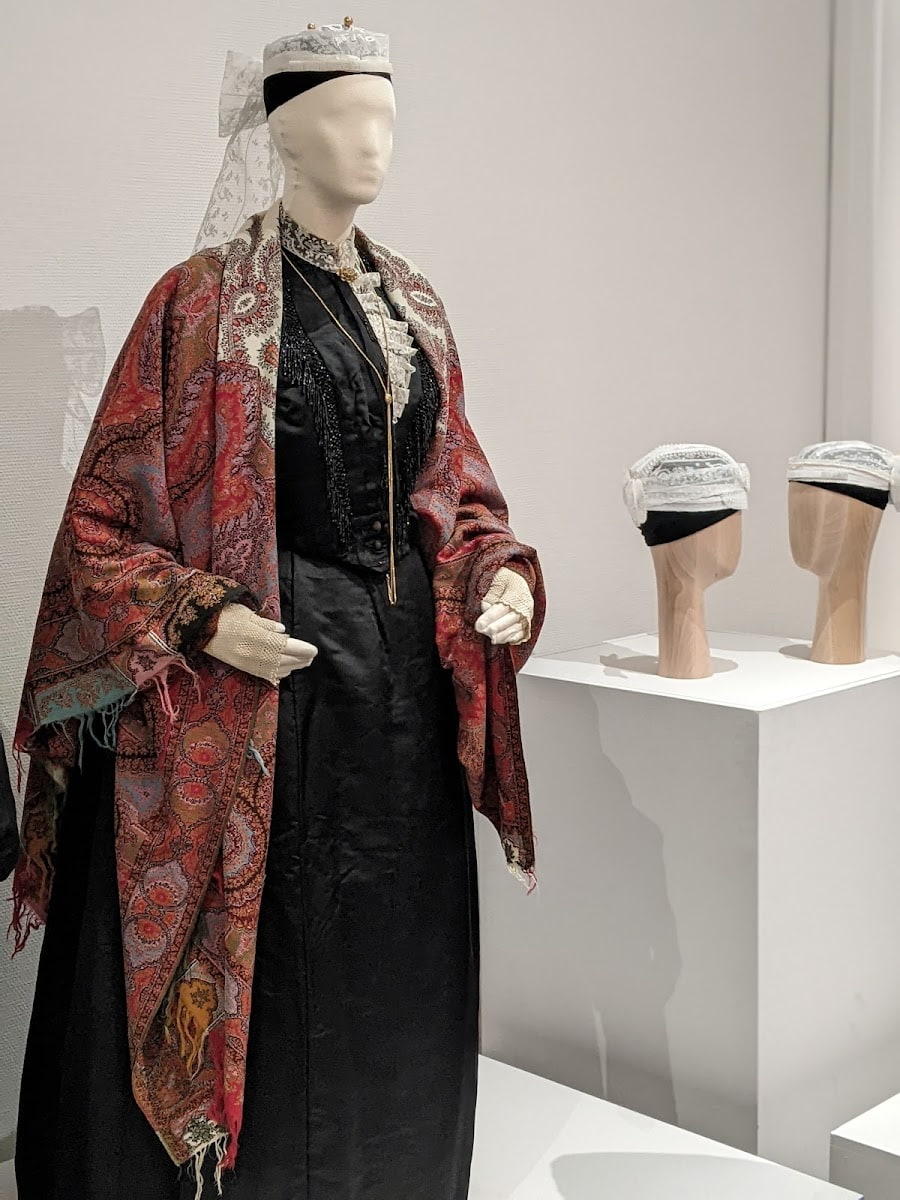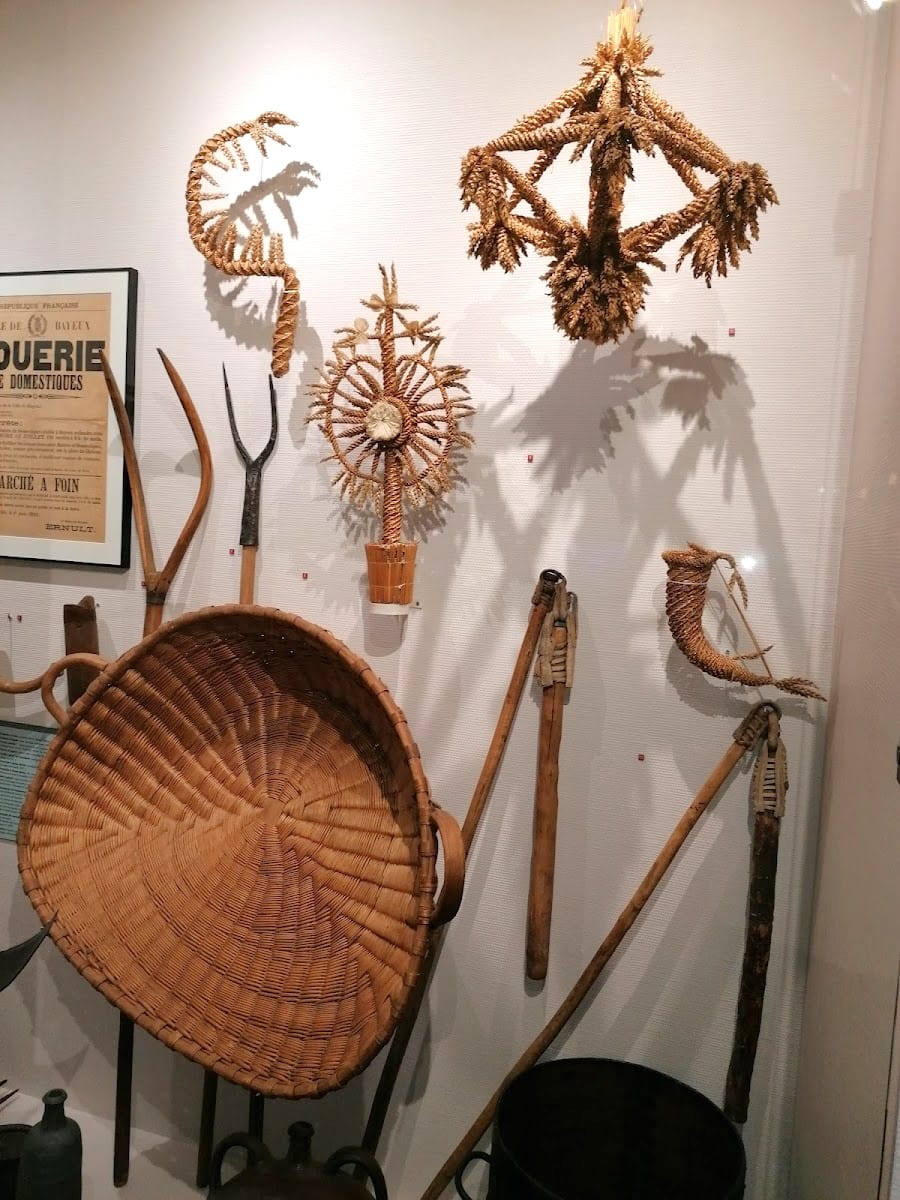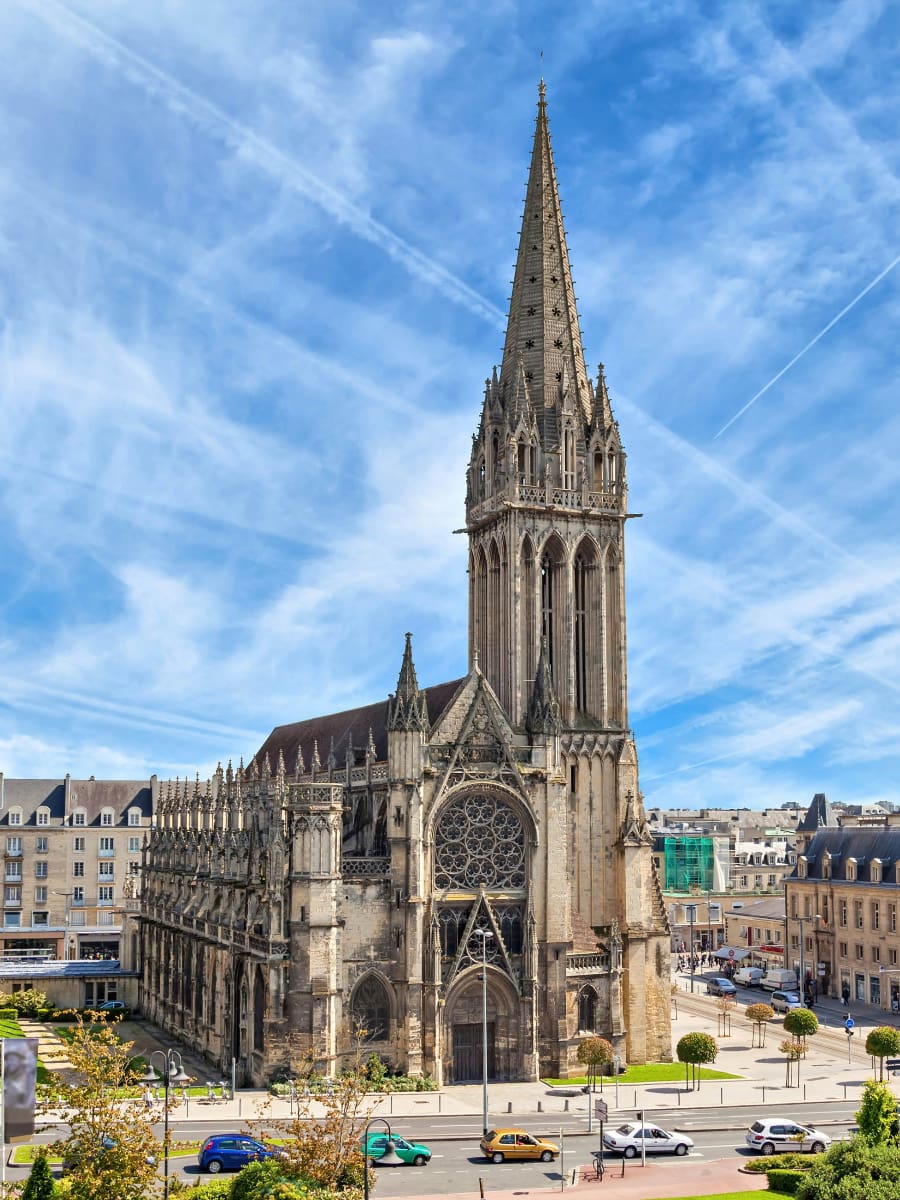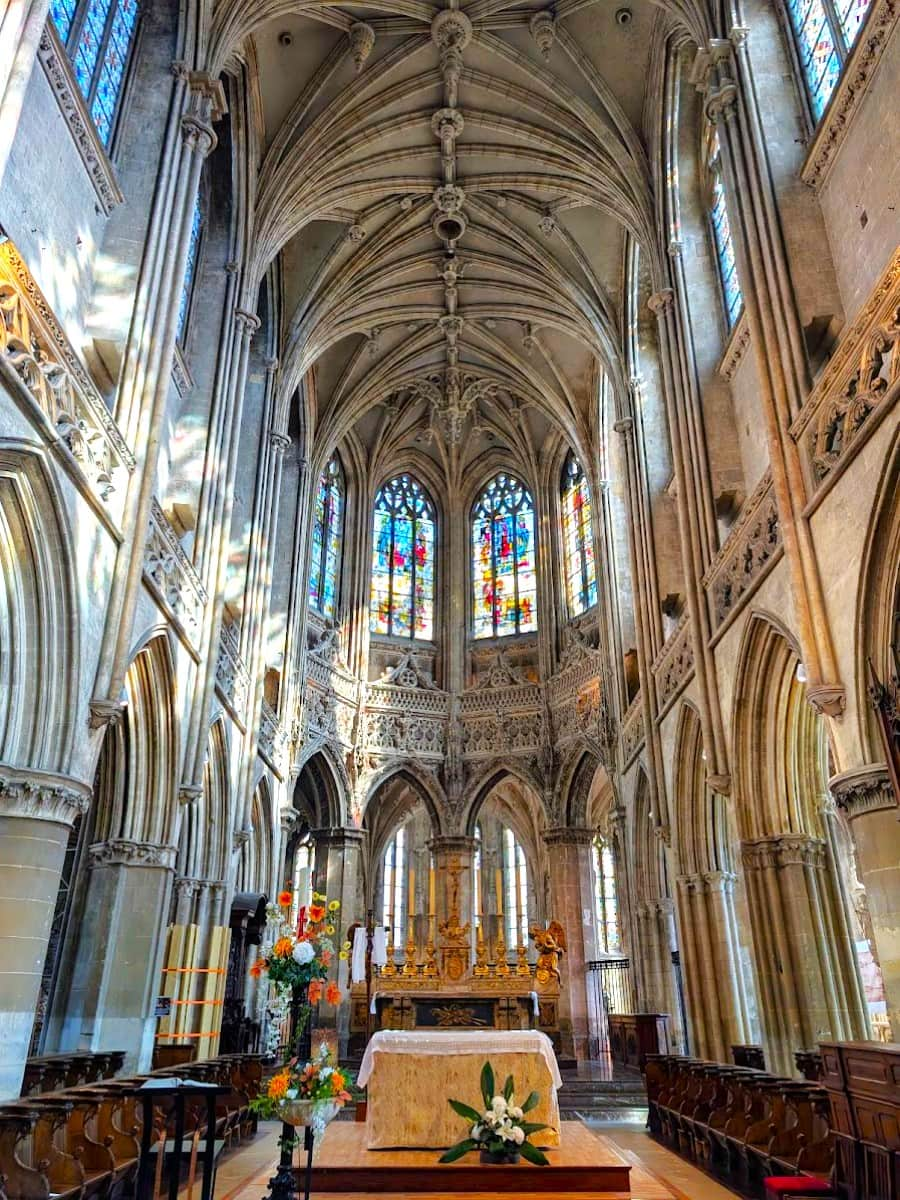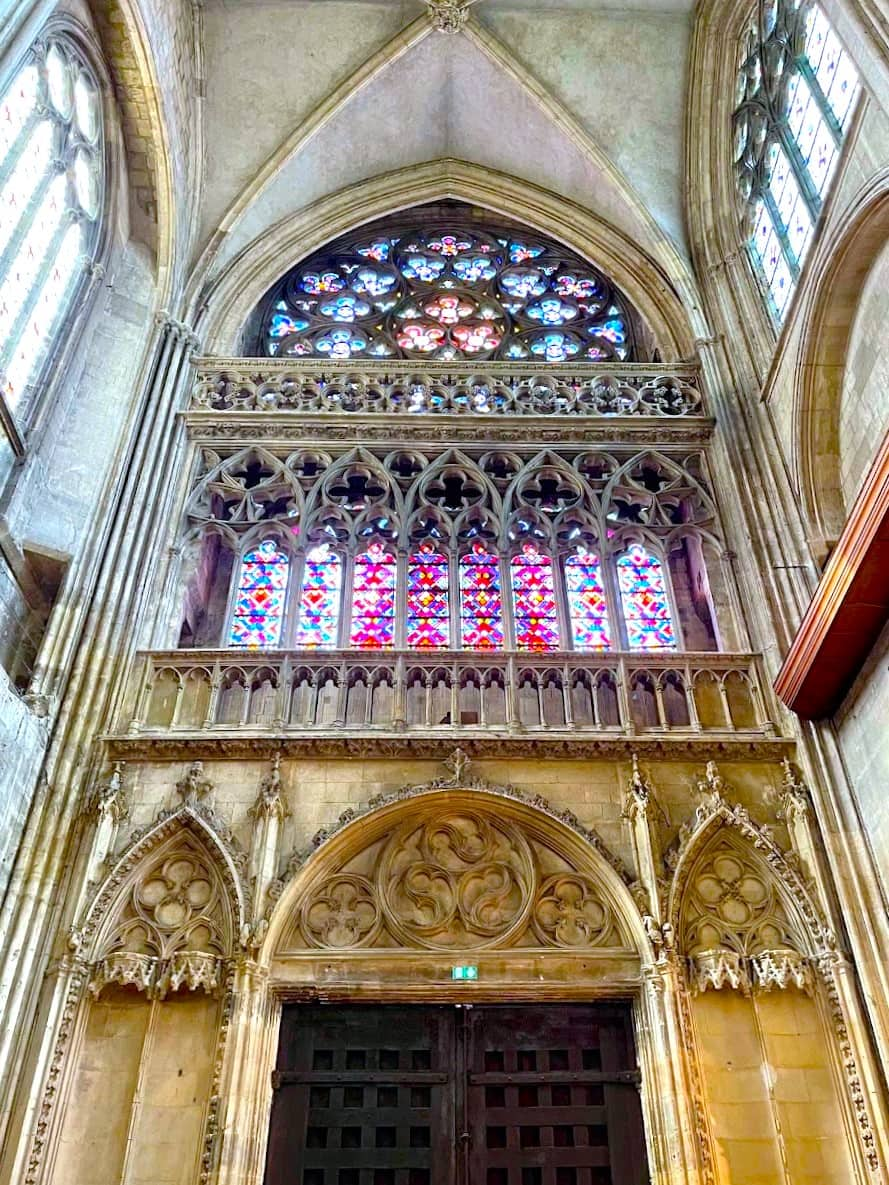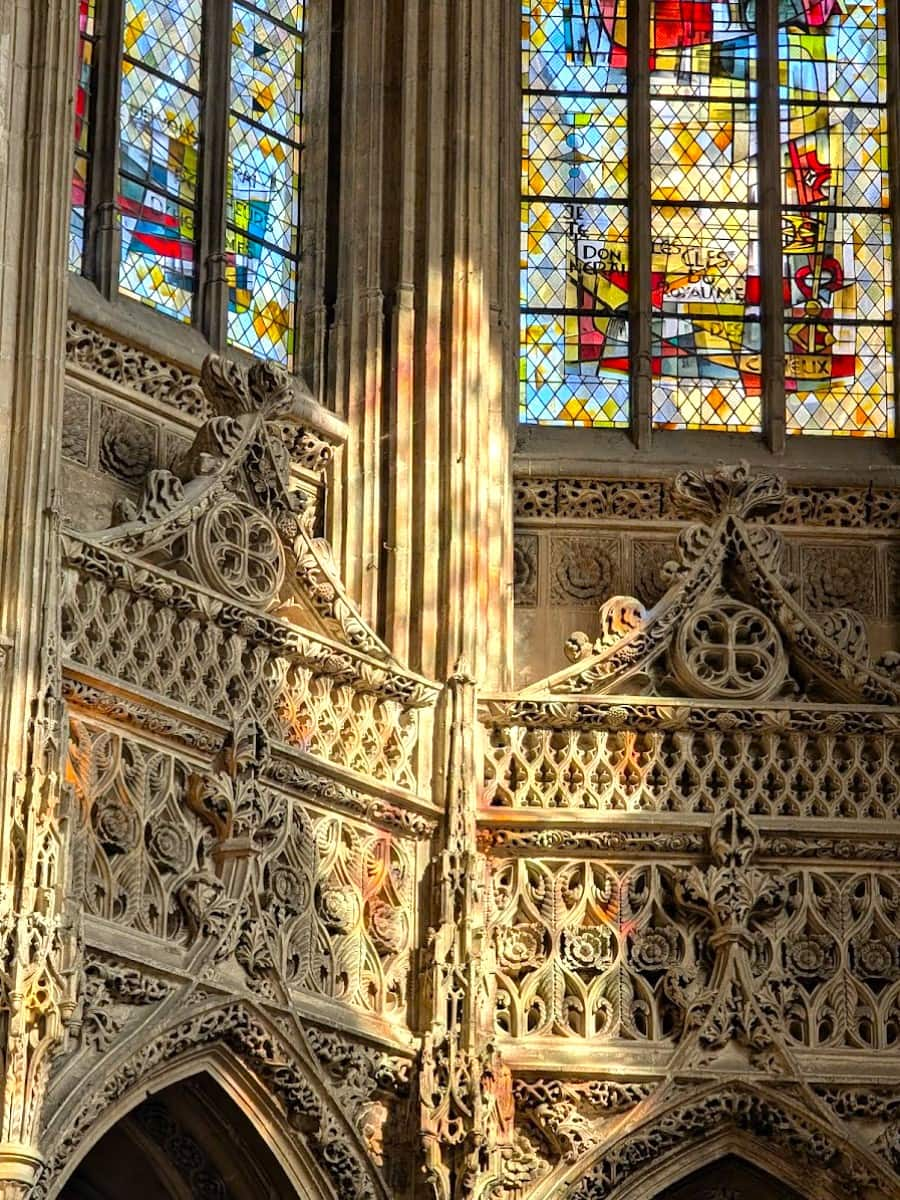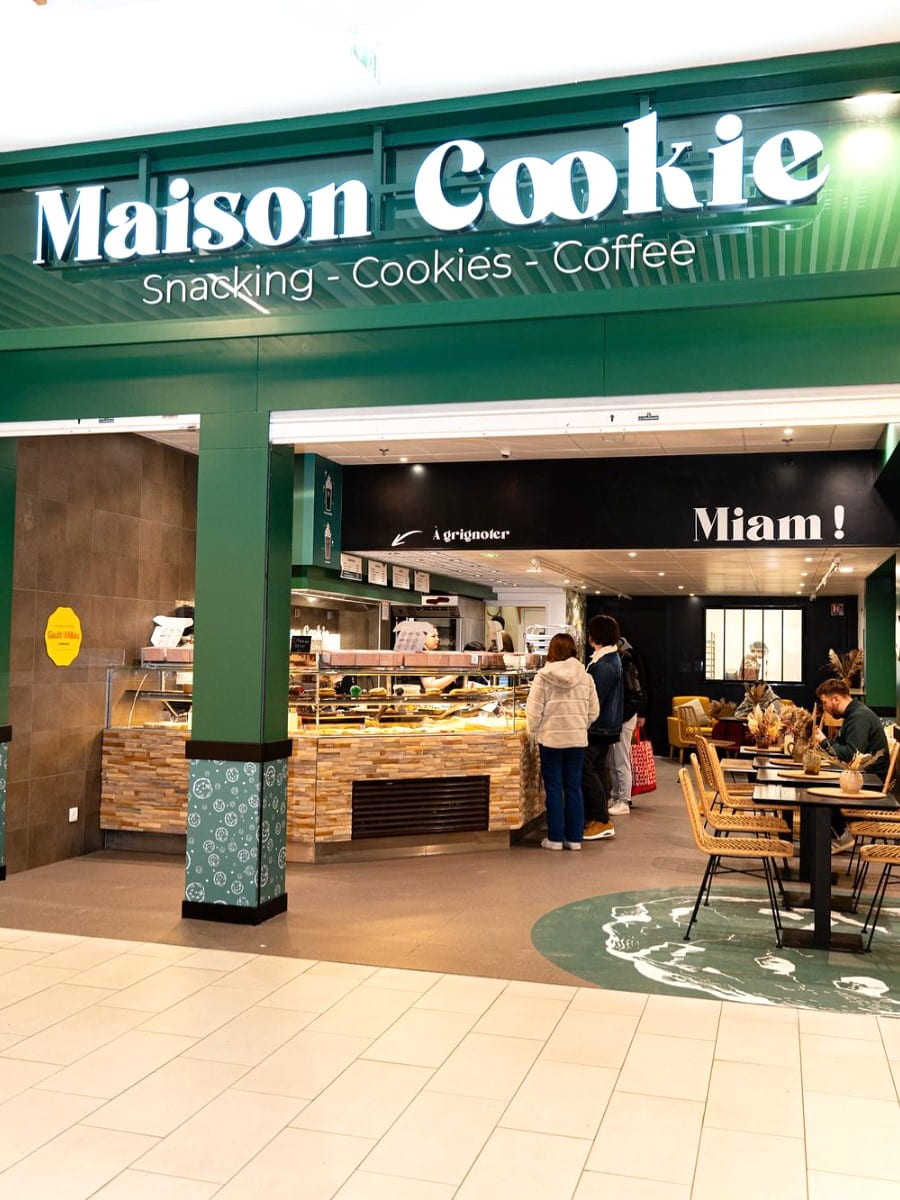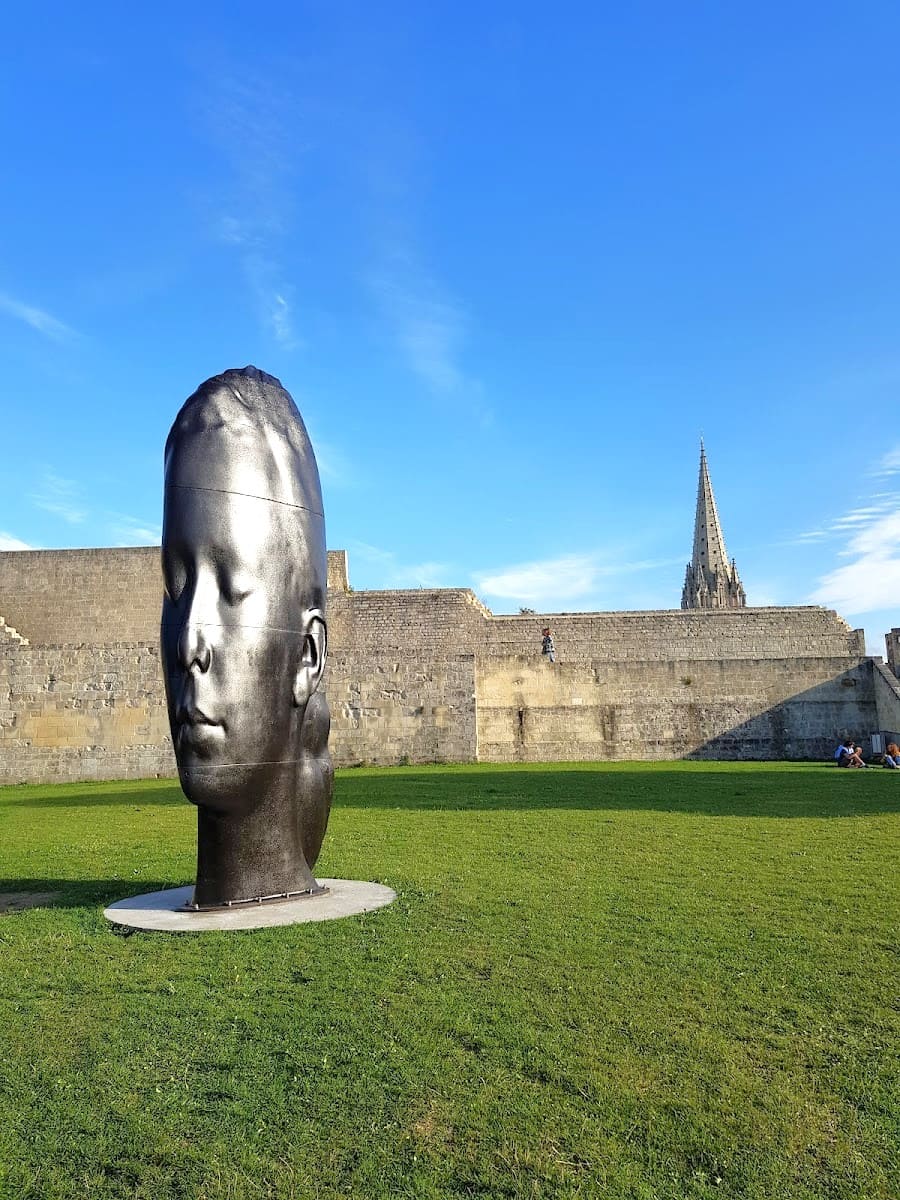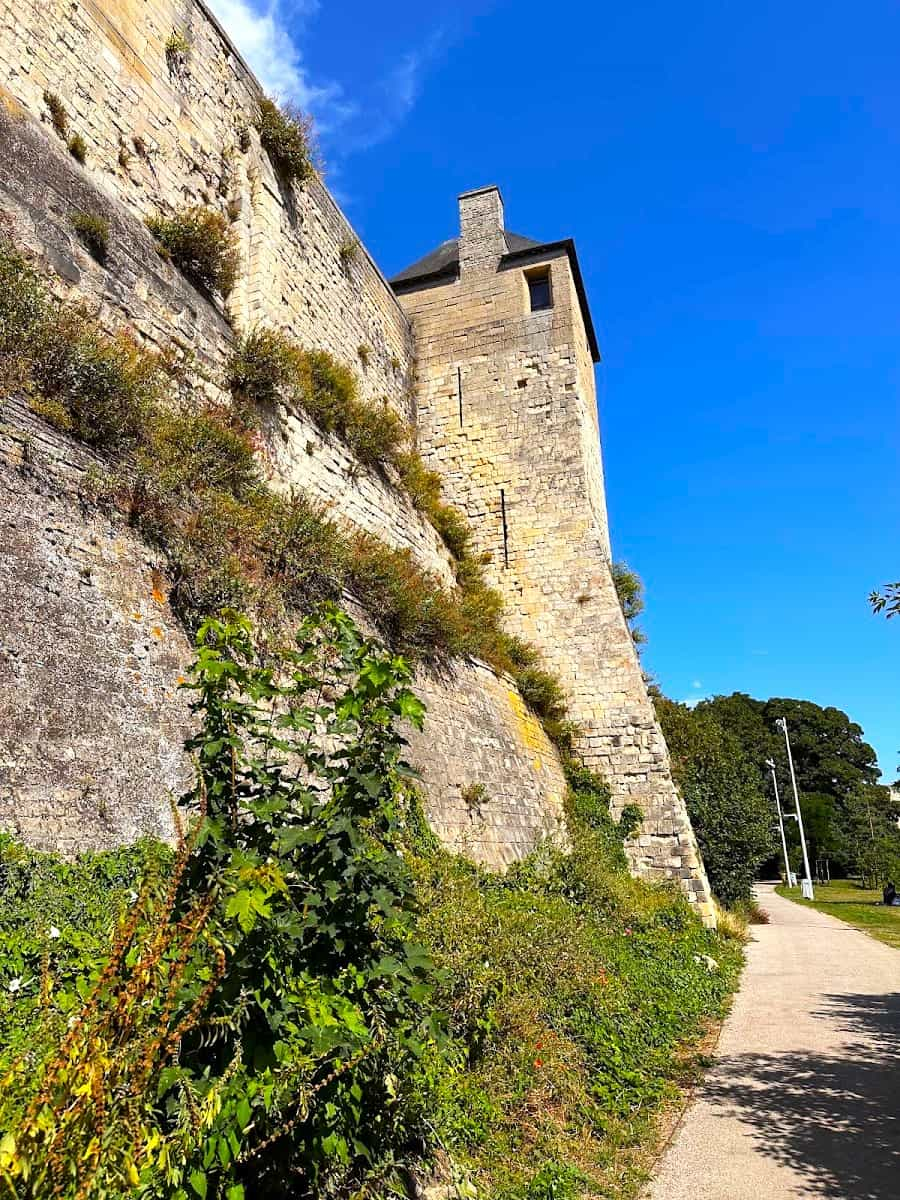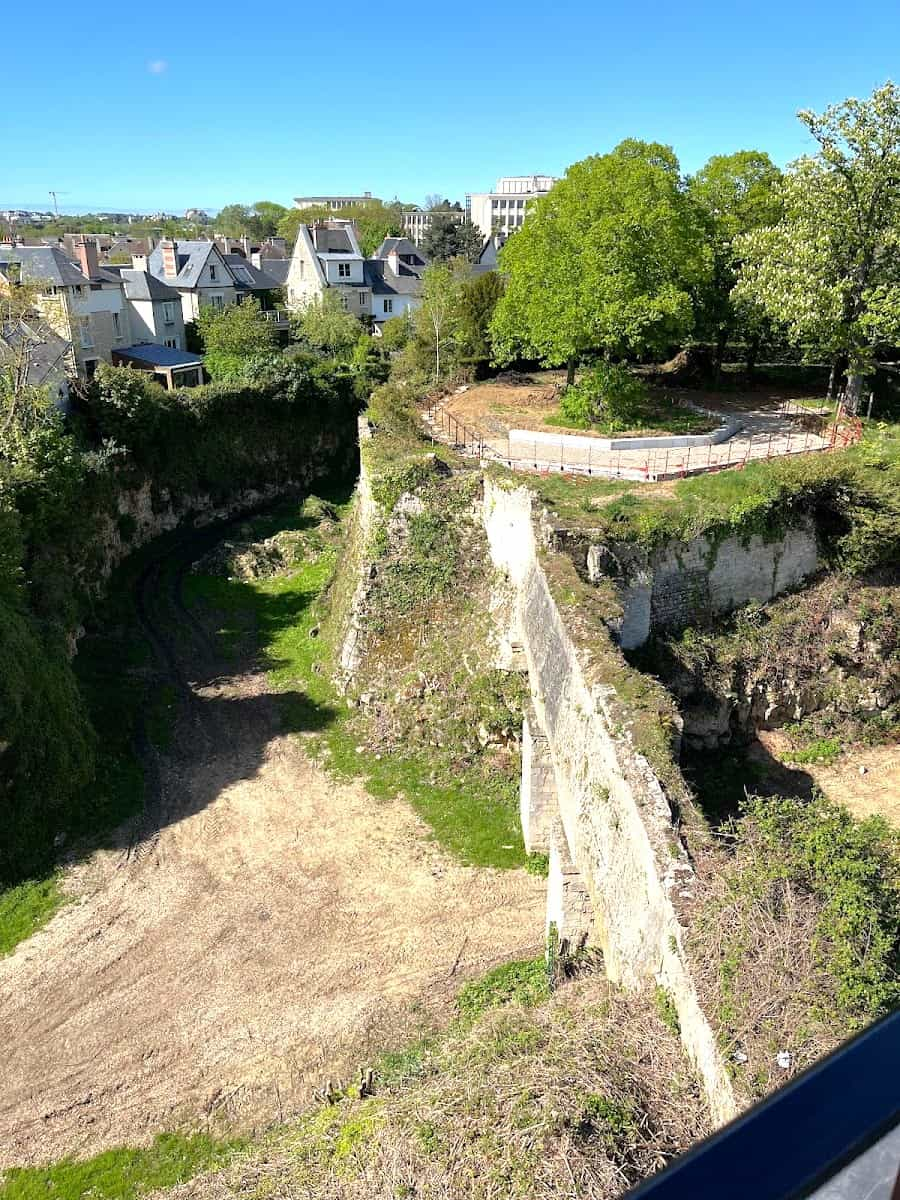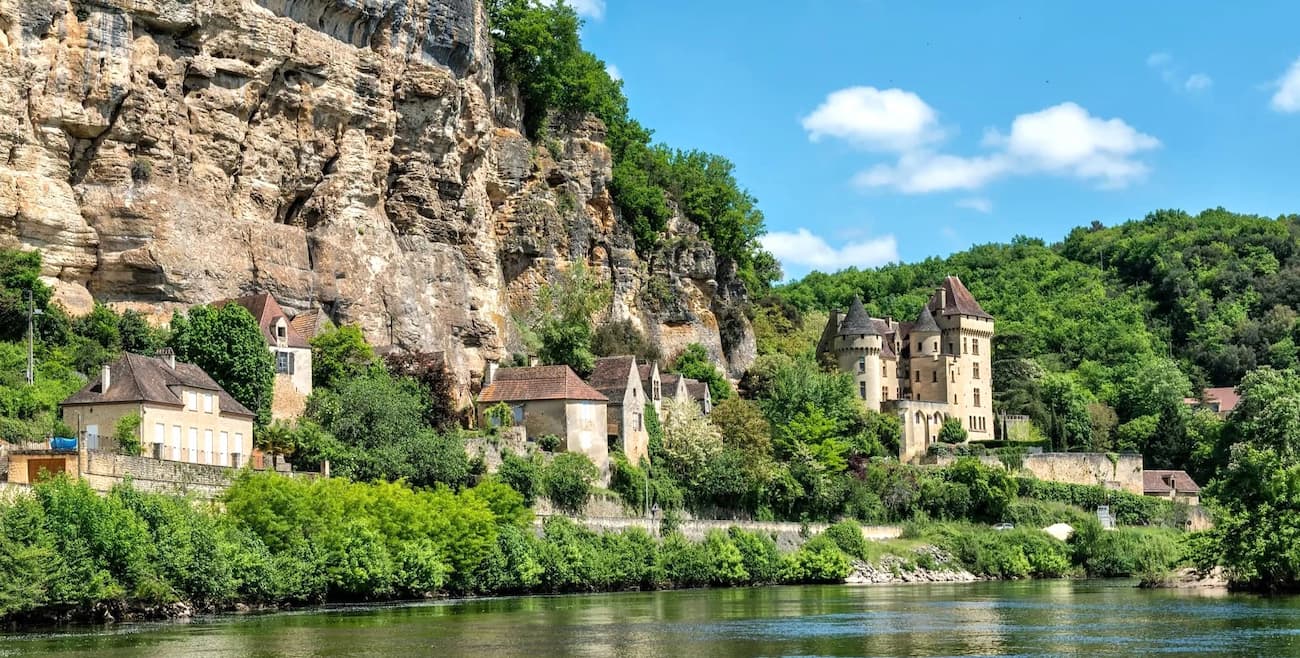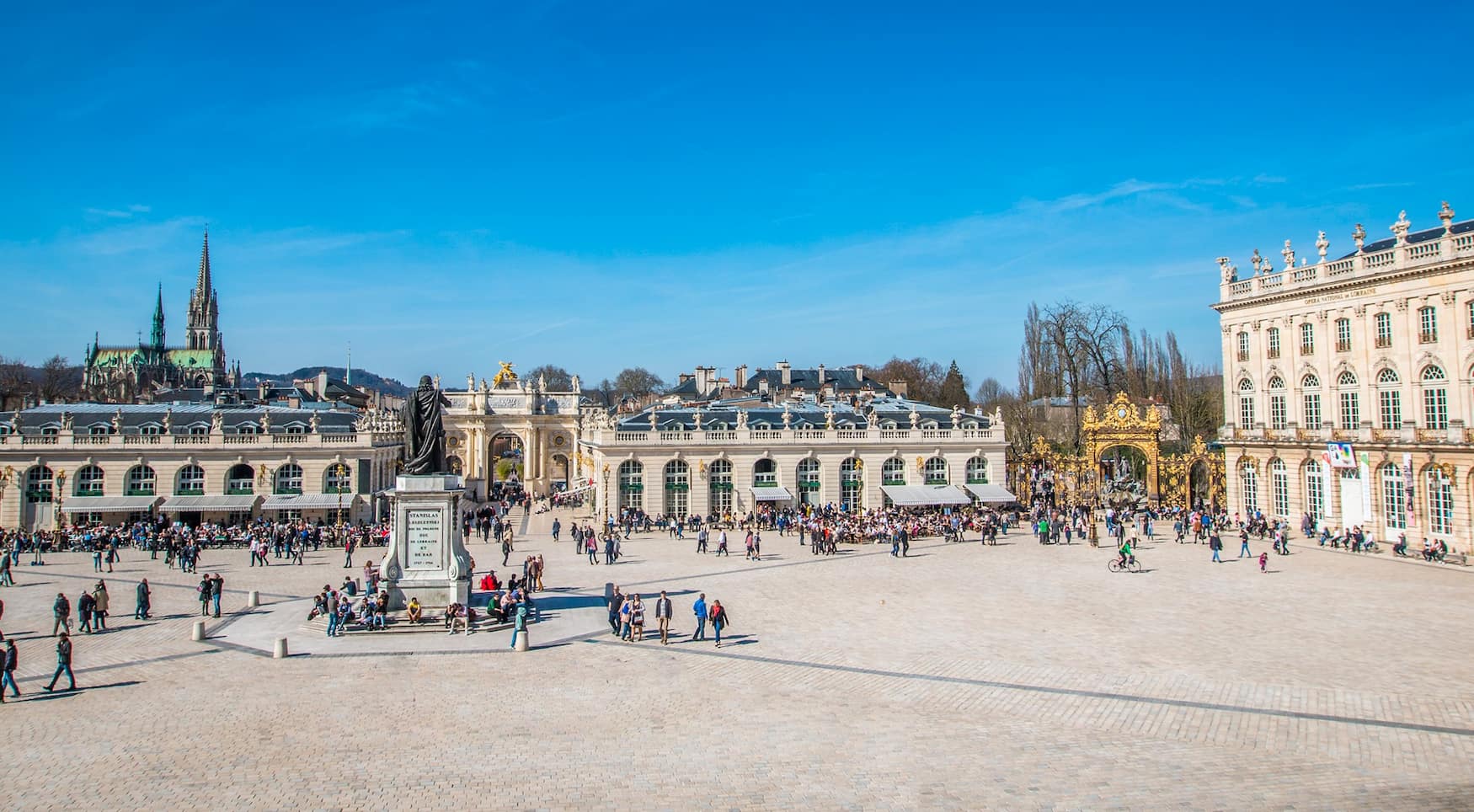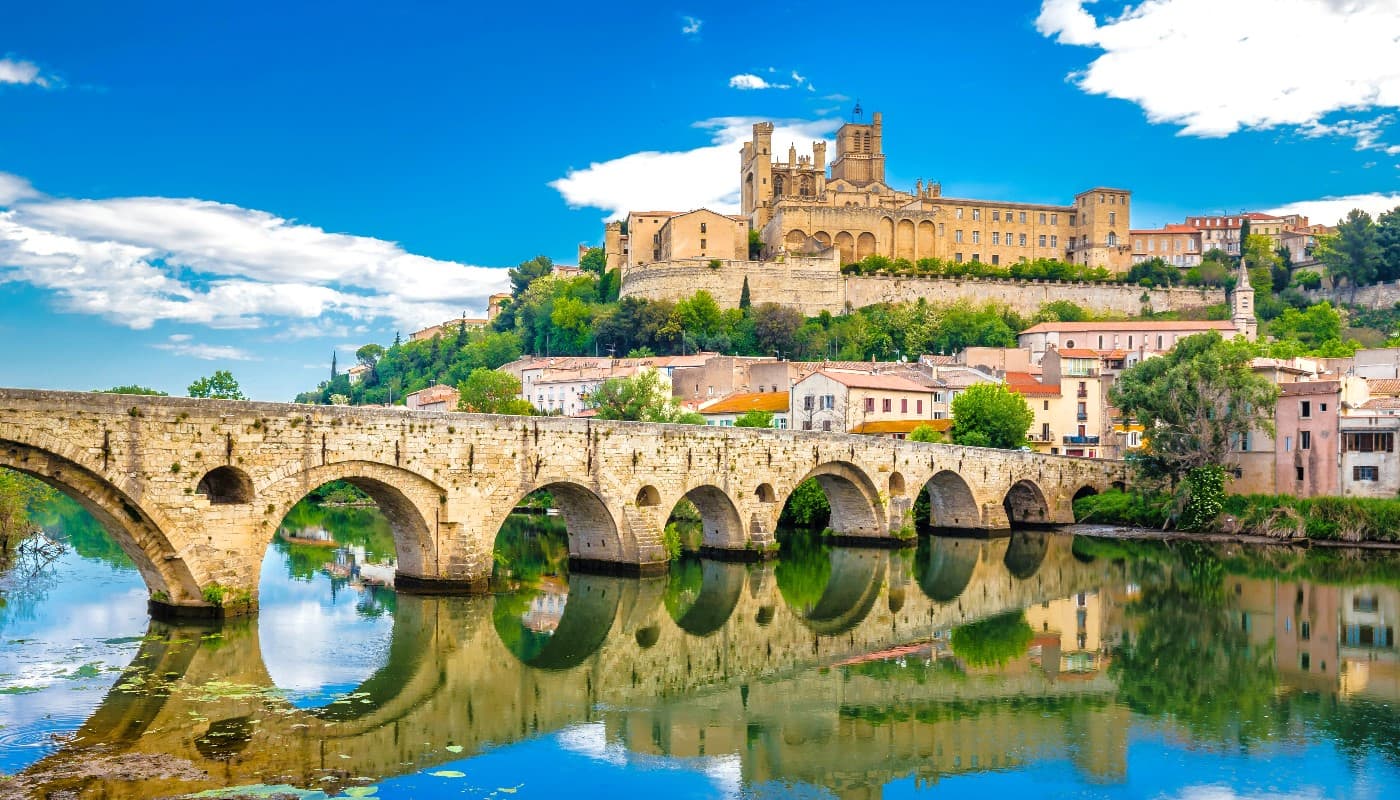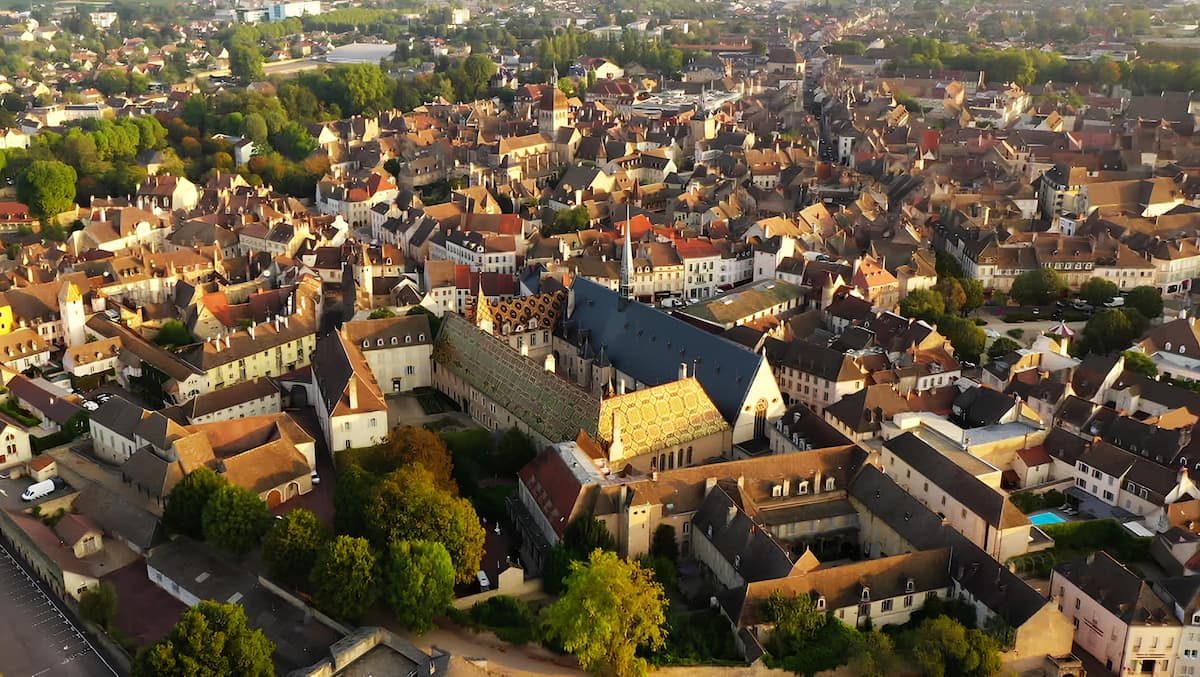Nestled in the heart of Normandy, Caen is a city where history comes alive at every corner. I fell in love with its charming streets and impressive stone buildings the moment I arrived, making it impossible not to share my discoveries with you.
If you’re planning a trip to northern France, this hidden gem deserves a spot on your itinerary. From magnificent abbeys built by William the Conqueror to moving World War II memorials, Caen offers experiences that will stay with you long after you’ve returned home.
🏠 Where to Stay in Caen
- 💎 Luxury Hotel: Mercure Caen Centre Port De Plaisance, Caen
- 🏨 4-Star: Best Western Plus Le Moderne, Caen
- 🛏️ 3-Star: Holiday Inn Express Caen Epron by IHG, Caen
- 💸 Cheap: Premiere Classe Caen Nord - Mémorial, Caen
- 🏢 Apartment: Appart'City Classic Caen, Caen
- 👨👩👧👦 For Families: Séjours & Affaires Caen Le Clos Beaumois, Caen
- 🏩 For Couples: Ibis Budget Caen Memorial, Caen
💁 Best Guided Tours
- Private Custom Tour with a Local Guide in Caen from € 90 (⭐4.8/5)
- Caen Private Walking Tour with A Professional Guide from € 85 (⭐4.9/5)
- Escape Game Outdoor The Walking Dead in Caen from € 25 (⭐4.7/5)
- Caen Scavenger Hunt and Sights Self-Guided Tour from € 15 (⭐4.6/5)
Best Things To Do in Caen, France
1. Caen Castle (Château de Caen)
Medieval marvel. Standing proudly in downtown Caen, the Château de Caen is one of Europe’s largest fortified medieval enclosures and was built around 1060 by William the Conqueror. I was immediately struck by its impressive stone walls and commanding presence over the city when I first visited. The castle has witnessed centuries of history, from royal celebrations to the ravages of World War II.
Historical layers. Walking through the striking barbican gates, I discovered a site that has served as William’s palace, a royal fortress, and even an infantry barracks. The restored ramparts offer breathtaking views of Caen, and I spent hours exploring the Hall of the Exchequer, the Church of St George, and the Governors’ Lodge. Each structure tells a different chapter of Normandy’s rich past.
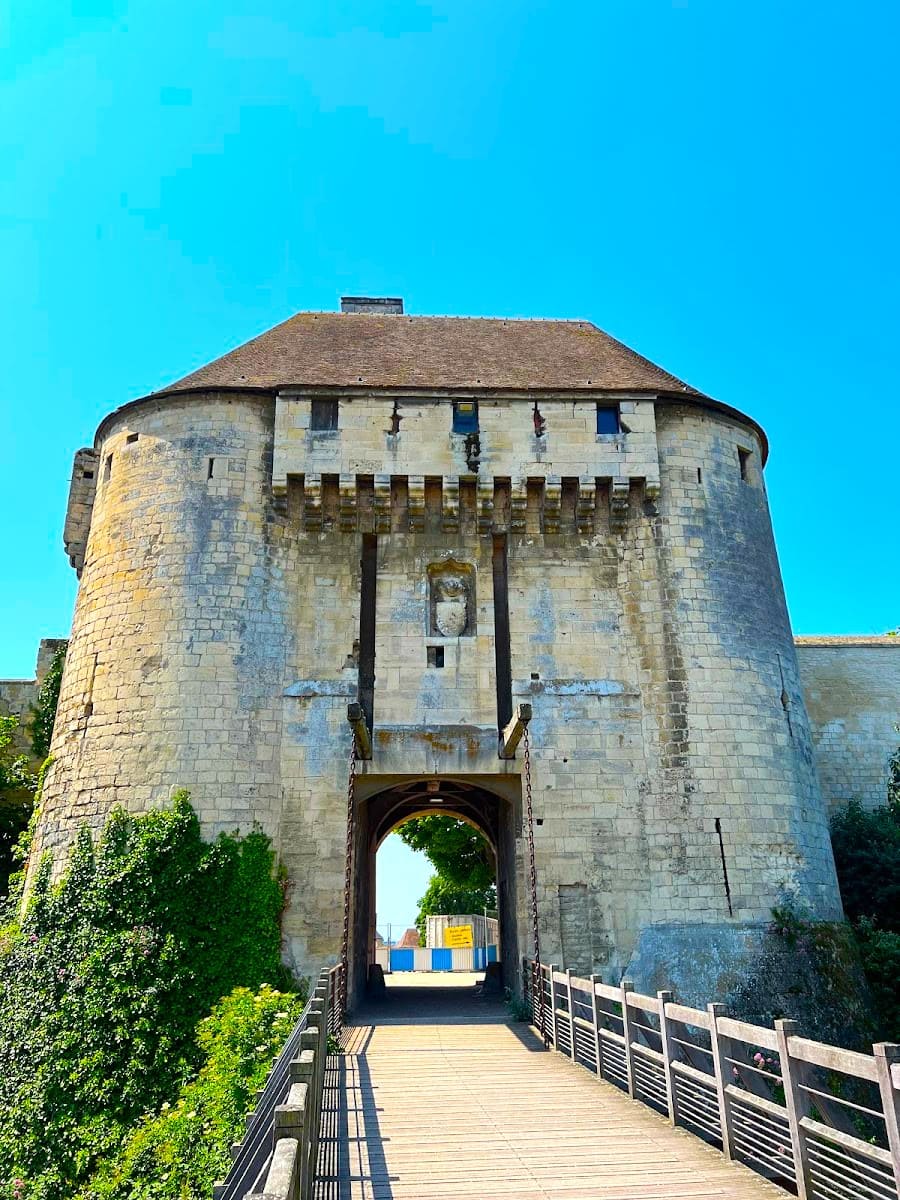
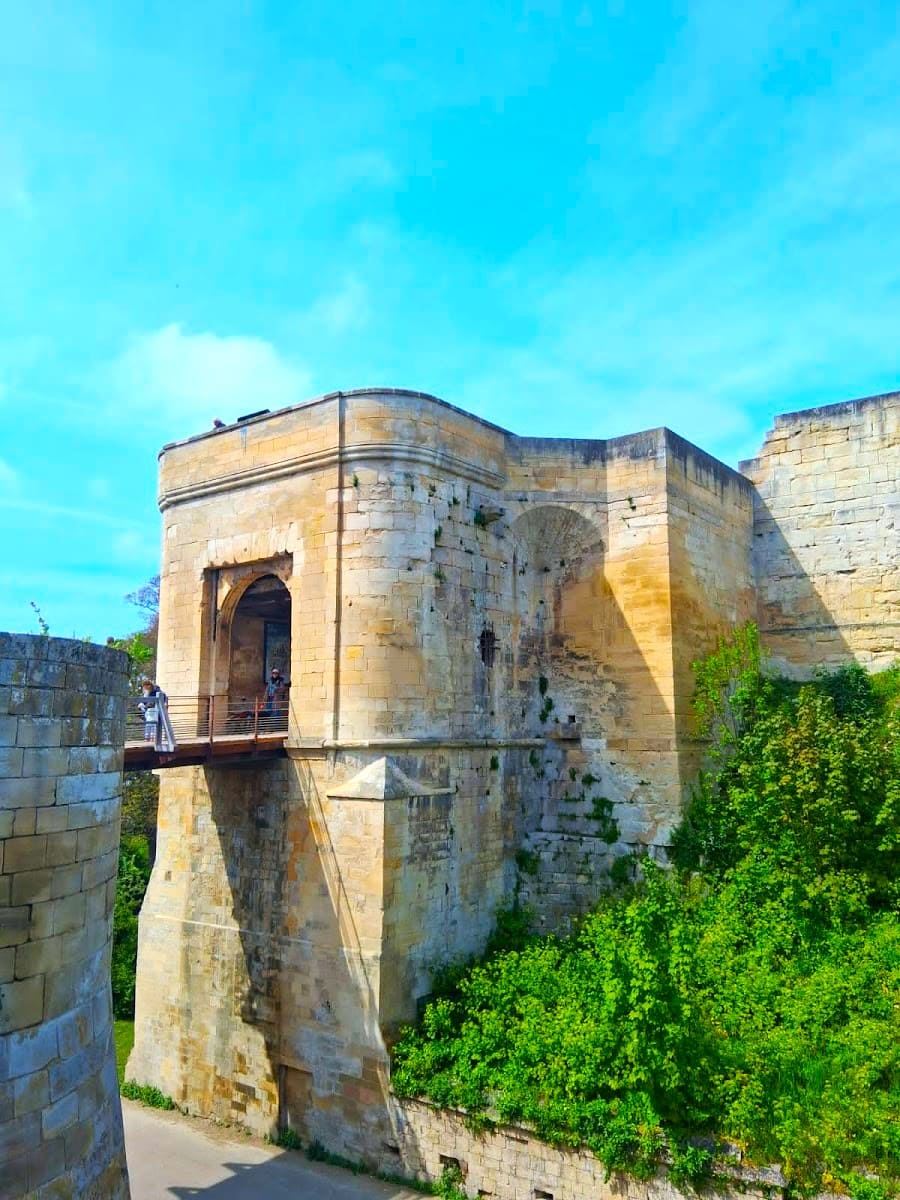
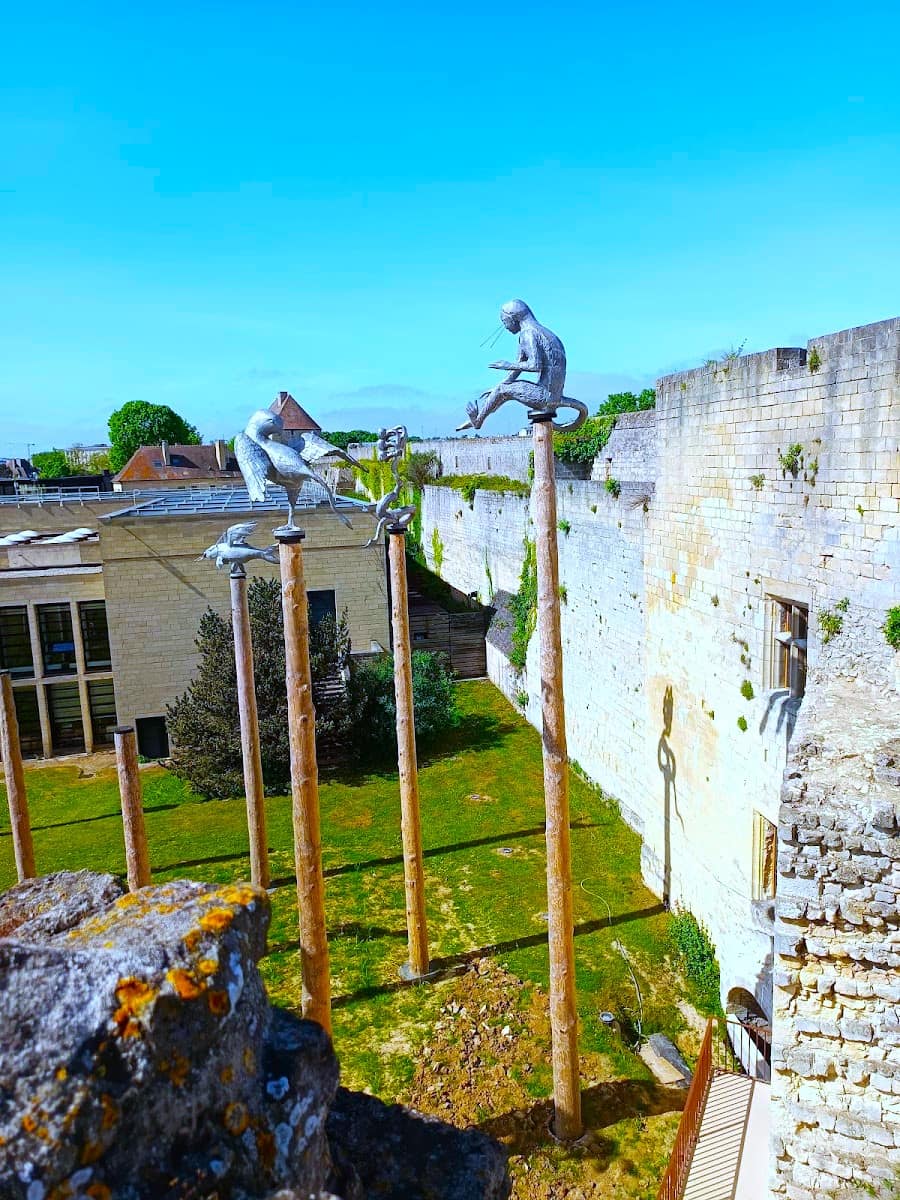
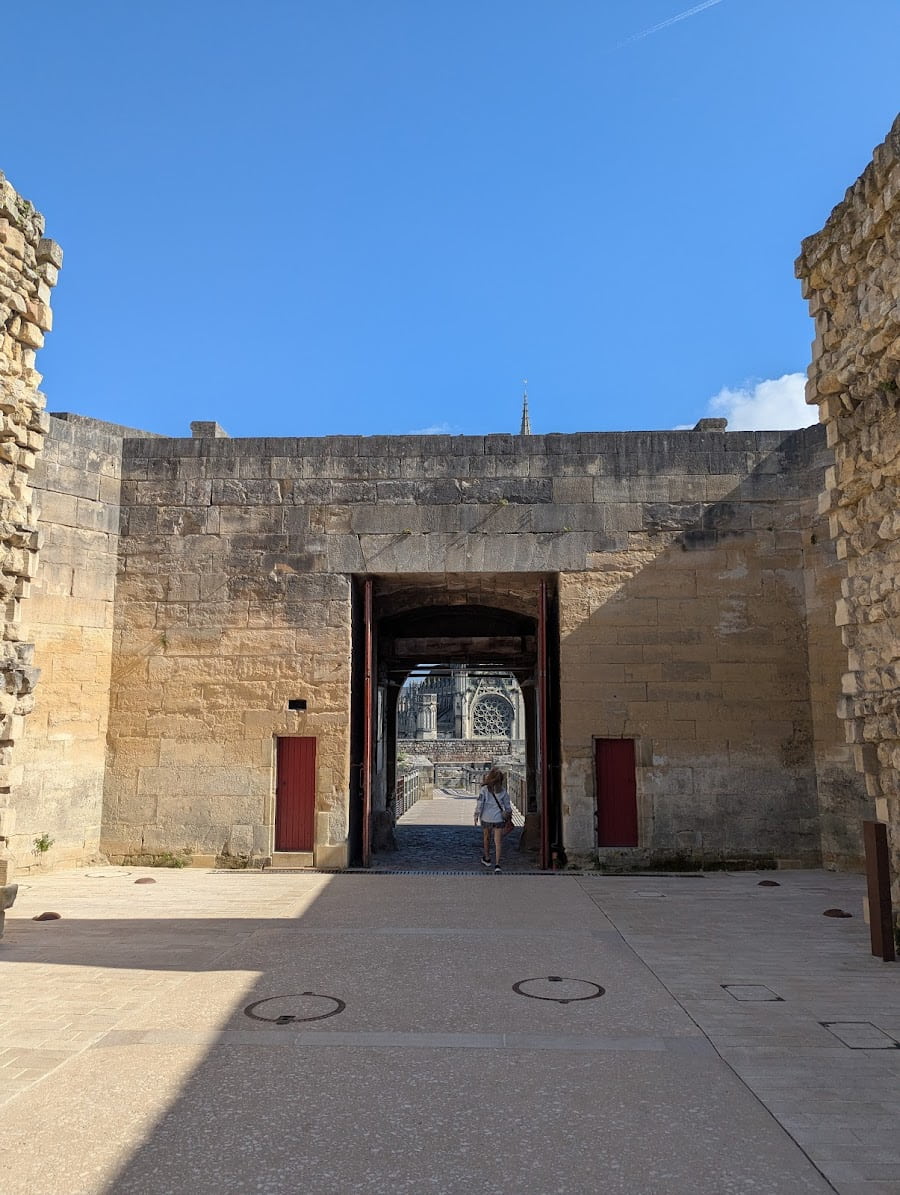
Cultural treasures. The castle enclosure now houses two fantastic museums. The Musée de Normandie showcases regional history, while the Musée des Beaux-Arts (Fine Arts Museum) opened in 1971 and displays impressive collections. I particularly enjoyed the 3D scale model in the Church of St George, which helped me visualize how the castle looked in its prime.
Practical details. The castle park is open daily from 7:30 AM to 10:30 PM with free admission, making it perfect for budget travelers. Museum access requires tickets, though, with prices as follows:
| Museum | Regular Price | Reduced Price |
|---|---|---|
| Normandy Museum (permanent collections) | 3.50€ | 2.50€ |
| Normandy Museum (with exhibitions) | 5.50€ | 3.50€ |
| Fine Arts Museum (permanent collections) | 6€ | 4€ |
| Fine Arts Museum (with exhibitions) | 8€ | 6€ |
Local tip. After exploring the castle, I recommend having lunch at Le Mancel restaurant located on the grounds. Open Wednesday to Saturday (9 AM-2 PM and 7 PM-10 PM) and Sunday (9 AM-2 PM), they offer a delicious three-course menu for around 30€. The tea room between 2 PM-7 PM is perfect for an afternoon break with views of the historic surroundings.
⭐ Best Activities
- Explore Caen in 60 Minutes with a Local – Discover the highlights of Caen with a local guide on this fast-paced, insightful one-hour walking tour.
2. Mémorial de Caen (Caen Memorial Museum)
WWII legacy. The Mémorial de Caen is unlike any war museum I’ve visited, offering a powerful and moving experience that tells the story of World War II, the D-Day landings, and the Battle of Normandy. Located on the northern outskirts of Caen, this modern museum opened in 1988 and has become an essential pilgrimage site for history enthusiasts and those seeking to understand Normandy’s pivotal role in WWII.
Immersive exhibits. Walking through the chronological galleries, I was struck by the thoughtful curation that balances historical artifacts with personal stories. The museum doesn’t shy away from difficult topics, presenting the rise of fascism, the Holocaust, and the Cold War with clarity and sensitivity. The D-Day film screening in the cinema is particularly moving.
Peace message. What sets this memorial apart is its dedication to peace and reconciliation. The gardens surrounding the museum include several monuments:
- The American Memorial Garden
- The British Memorial Garden
- The Canadian Memorial Garden
- The Peace Monument
- Nobel Peace Prize Winners’ Gallery
Visitor information. The museum is open daily from 9 AM to 7 PM (May to September) and 9:30 AM to 6 PM (October to April). Allow at least 3-4 hours for a proper visit.
| Ticket Type | Price |
|---|---|
| Adult | 19.80€ |
| Child (10-18) | 17.50€ |
| Family Pass (2 adults + children) | 51€ |
| D-Day Landing Beaches Guided Tour | 57€ per person |
Local insight. I recommend booking the combined ticket that includes a guided tour to the D-Day beaches. The museum’s café, Le Café du Mémorial, serves excellent Norman cuisine with daily specials around 15€. Their apple tart with Calvados cream is worth every calorie!
⭐ Best Activities
- Caen Memorial Museum: Entry Ticket – Dive into WWII history and the story of France at the Mémorial de Caen, with interactive exhibits and artifacts.
3. Abbaye aux Hommes (Men’s Abbey)
William’s legacy. The magnificent Abbaye aux Hommes (Men’s Abbey) stands as one of Caen’s most impressive monuments, built by William the Conqueror as penance for marrying his cousin Matilda against the Pope’s wishes. I was awestruck by its twin spires reaching 82 meters high and the harmonious blend of Romanesque and Gothic architecture that has influenced church design across Normandy.
Sacred space. Inside the abbey church, now known as Saint-Étienne, I found myself drawn to the simple yet elegant nave with its perfect proportions. The light filtering through the windows creates an atmosphere of tranquility that has welcomed worshippers for nearly a millennium. Most significantly, William the Conqueror’s tomb lies beneath the altar – though only a thigh bone remains after the grave was desecrated during the French Revolution.
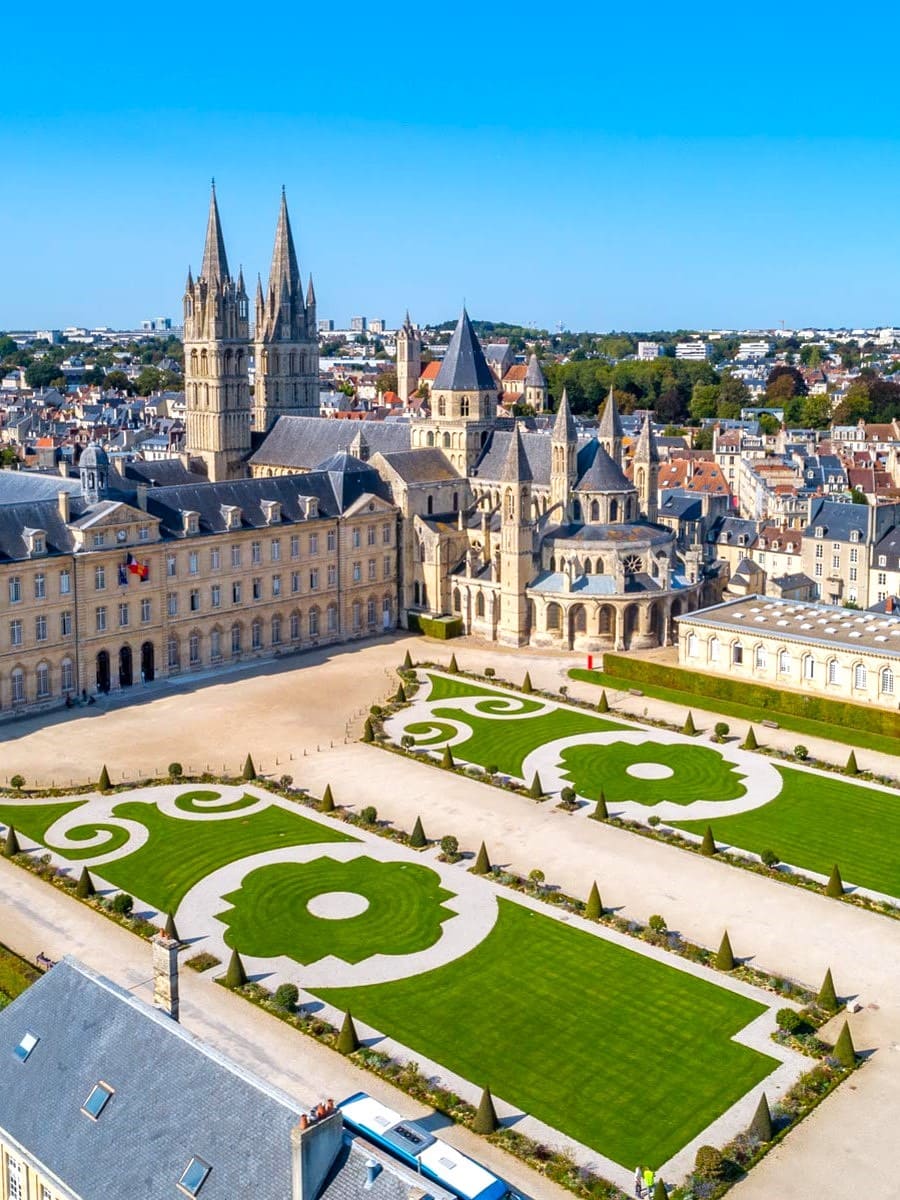
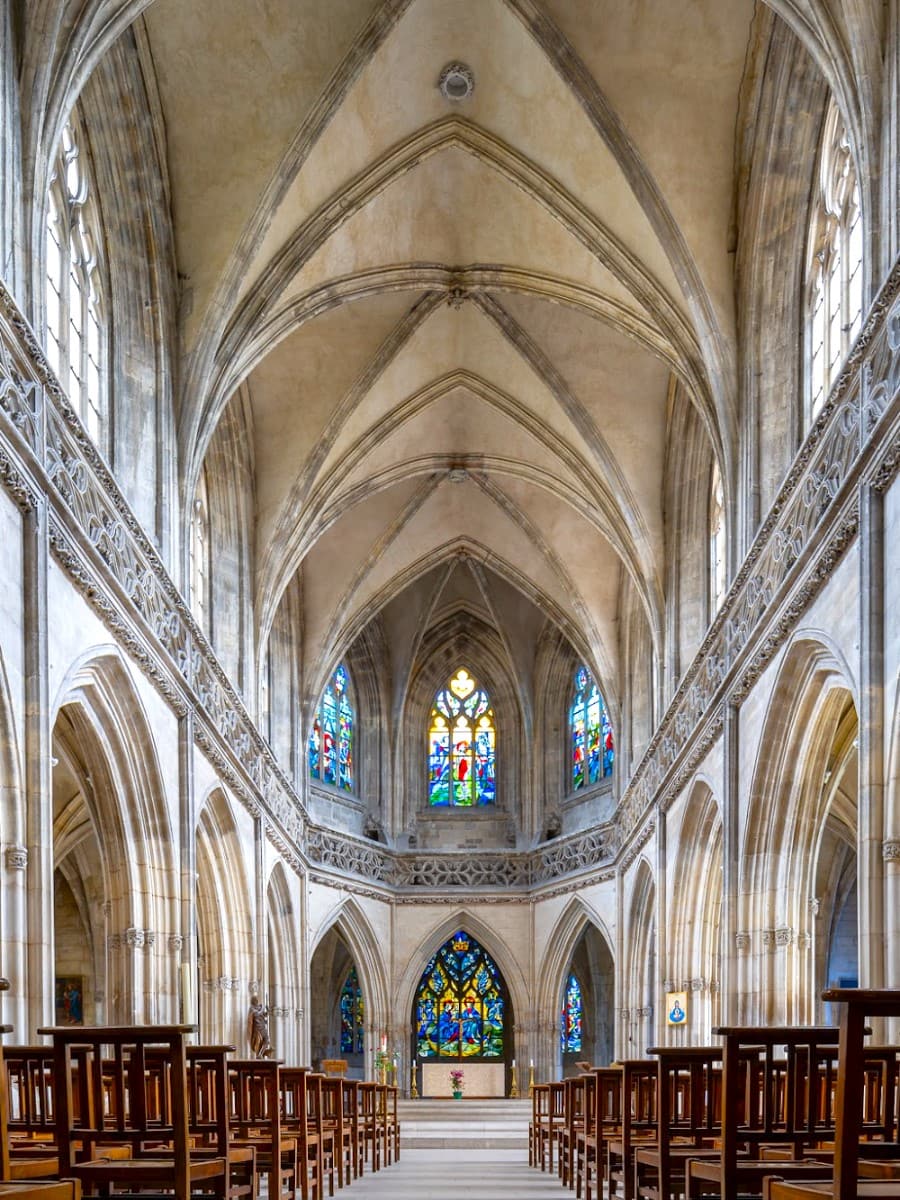
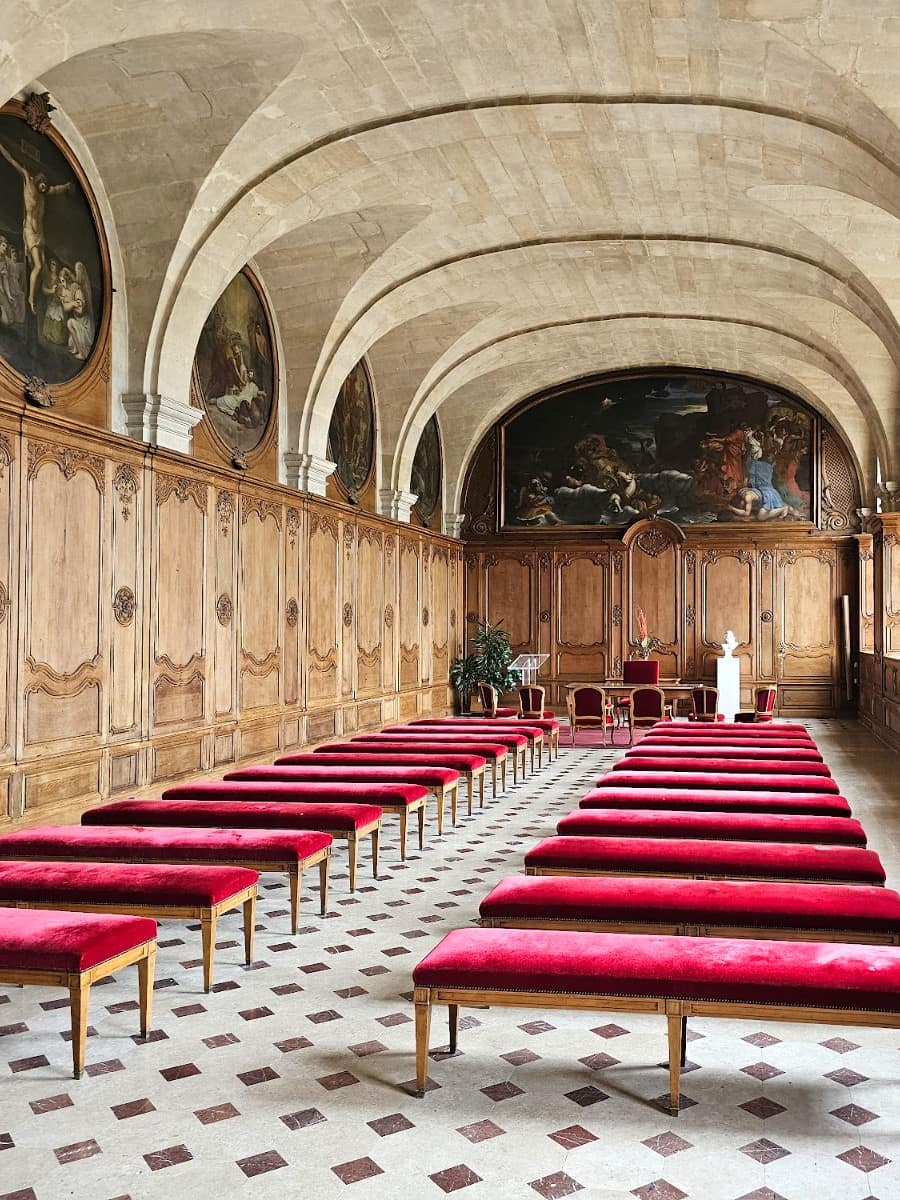
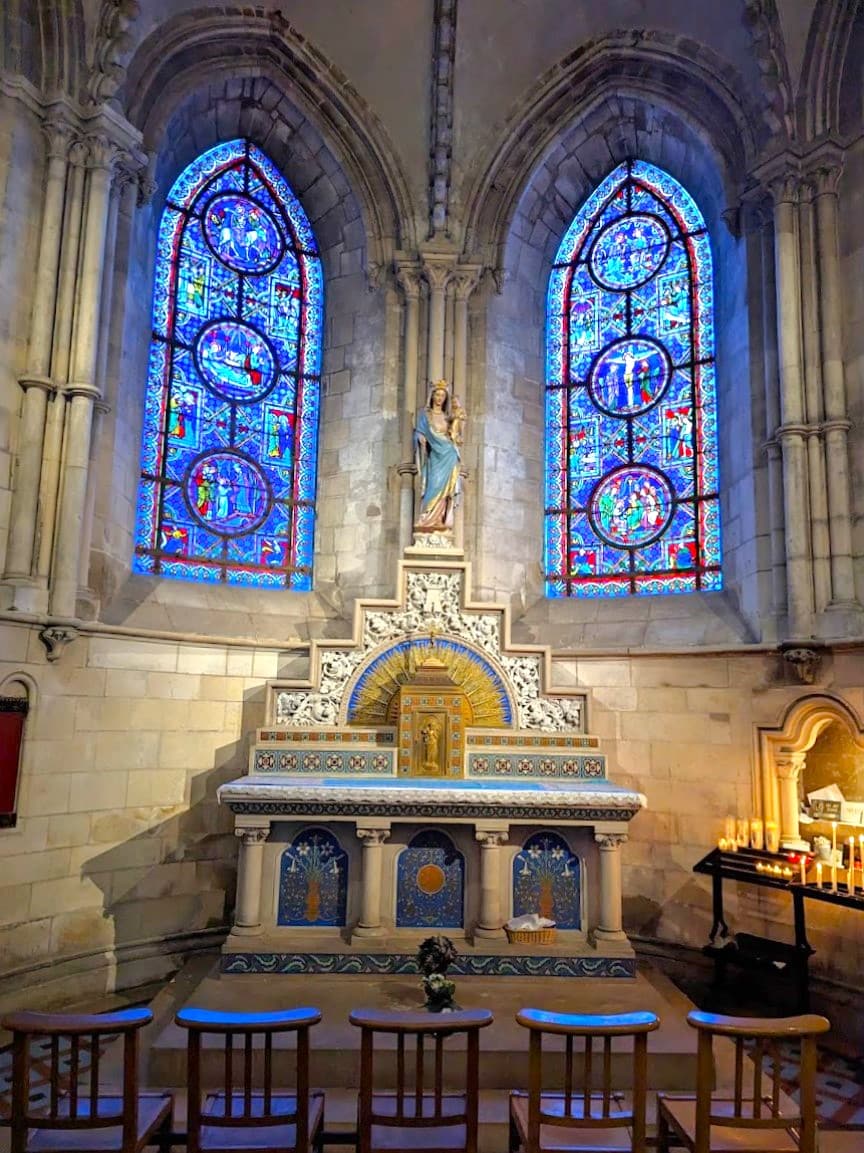
Monastic life. The abbey complex includes:
- The church (Saint-Étienne)
- The former monastery buildings
- The cloister
- The guards’ room
- The scriptorium
- The refectory
City hall transformation. What fascinated me most was how the monastery buildings have been repurposed as Caen’s City Hall (Hôtel de Ville) since the French Revolution. The guided tour (available in English) takes you through the former monastic spaces, revealing how medieval monks lived while explaining the building’s evolution over centuries.
| Tour Options | Duration | Price |
|---|---|---|
| Abbey Church Only (self-guided) | 30-45 minutes | Free |
| Complete Abbey Tour (guided) | 90 minutes | 6€ |
| Combined Abbey Tour (Men’s & Women’s) | 3 hours | 10€ |
Photography tip. The cloister garden is particularly beautiful in late afternoon light. I recommend visiting around 4 PM when the tour groups have thinned out and you can enjoy the peaceful atmosphere that once inspired medieval monks.
⭐ Best Activities
- Private Custom Tour with a Local Guide – Personalize your Caen adventure with a local guide who tailors the experience to your interests.
4. Abbaye aux Dames (Women’s Abbey)
Royal foundation. The Abbaye aux Dames (Women’s Abbey) was founded by Queen Matilda, wife of William the Conqueror, as a counterpart to her husband’s Men’s Abbey. I found this elegant complex on the eastern side of Caen to be less crowded but equally impressive. The Holy Trinity Church (La Trinité) at its heart features a distinctive flat-topped façade that contrasts beautifully with the Men’s Abbey’s pointed spires.
Queen’s resting place. Inside the church, I discovered Queen Matilda’s tomb in the choir – a simple yet dignified black marble slab that has survived centuries of turmoil. The Romanesque architecture creates a sense of solemn grandeur, with rounded arches and massive pillars supporting the ceiling. The crypt beneath the church contains some of the oldest frescos in Normandy.
Abbey features. The Women’s Abbey complex includes several notable elements:
- Holy Trinity Church (La Trinité)
- The chapter house
- The cloister (reconstructed)
- The abbess’s quarters
- The medicinal garden
- The convent buildings
Modern purpose. Today, the abbey buildings house the Regional Council of Normandy. I was surprised to learn that the former dormitories for nuns have been transformed into meeting rooms where regional politics now unfold. The contrast between medieval spirituality and modern governance creates a fascinating juxtaposition.
| Visiting Hours | Days | Entrance Fee |
|---|---|---|
| Church | Daily 8 AM-6 PM | Free |
| Abbey Buildings (guided tour) | Tuesday-Sunday, 2 PM & 4 PM | 4€ |
| Gardens | Daily 8 AM-7 PM | Free |
Hidden gem. Don’t miss the medicinal garden behind the abbey, recreated based on medieval monastic traditions. I spent a peaceful half-hour identifying herbs that monks and nuns once used for healing. The lavender and rosemary were particularly fragrant when I visited in early summer.
⭐ Best Activities
- Private Tour to Discover the Treasures of Caen – Uncover the city’s best-kept secrets and historical highlights on this private guided tour.
5. Caen Marina
Waterfront revival. Caen’s marina, located in the Bassin Saint-Pierre, represents the city’s successful urban renewal. I spent a delightful afternoon watching sailboats and yachts bob gently in the water while enjoying the contemporary architecture that has transformed this former industrial area. The marina connects to the sea via a canal, making Caen an unexpected port city despite being 15 kilometers inland.
Leisure hub. The area surrounding the marina has become Caen’s modern entertainment district, with restaurants, bars, and shops creating a lively atmosphere. I found the contrast between the medieval city center and this contemporary waterfront particularly striking – it’s like experiencing two different cities in one visit.
Marina attractions. During my exploration, I discovered several points of interest:
- Quai Vendeuvre (main promenade)
- Waterfront restaurants and cafés
- Pedestrian bridge
- Yacht harbor
- Bibliothèque Alexis de Tocqueville (striking modern library)
- Thursday market (local produce and crafts)
Dining options. The marina area offers some of Caen’s most pleasant outdoor dining, perfect for people-watching on warm evenings.
| Restaurant | Specialty | Price Range |
|---|---|---|
| Le Quai des Brumes | Seafood | 25-40€ |
| La Fabrique | Modern bistro | 20-35€ |
| Le Café Mancel | French cuisine | 30-45€ |
| Le Carlotta | Italian | 15-30€ |
Evening recommendation. I suggest timing your visit for sunset, when the fading light creates magical reflections on the water. The Thursday evening market (4 PM-8 PM, April-October) offers local products, street food, and live music – a perfect way to experience local life while enjoying the marina views.
⭐ Best Activities
- Best of Caen: Private Walking Tour with a Local – Stroll through Caen’s historic center and learn its stories with a knowledgeable local guide.
6. Musée des Beaux-Arts de Caen (Fine Arts Museum)
Artistic treasure. Located within the Château de Caen, the Musée des Beaux-Arts houses one of Normandy’s finest art collections. I was pleasantly surprised by the museum’s breadth, spanning from the Renaissance to contemporary art. The building itself, constructed in 1971, offers a striking contrast to the medieval castle walls surrounding it.
Masterpiece collection. Walking through the chronologically arranged galleries, I encountered works by Perugino, Rubens, Veronese, and an impressive collection of 17th-century French paintings. The museum’s strength lies in its European paintings from the 16th to 20th centuries, with particular emphasis on Italian, Flemish, and French schools.
Notable collections. The museum is organized into several distinct sections:
- Renaissance masterpieces
- 17th-century Dutch and Flemish paintings
- French art from Louis XIV to Napoleon
- 19th-century Impressionist works
- Modern and contemporary art
- Print and drawing cabinet
Practical details. The museum offers a peaceful retreat from the bustle of tourism, with spacious galleries that allow contemplative viewing of the artworks.
| Opening Hours | Days | Admission |
|---|---|---|
| 9:30 AM – 6 PM | Monday, Wednesday-Friday | 6€ (permanent collection) |
| 11 AM – 6 PM | Weekends and holidays | 8€ (with temporary exhibitions) |
| Closed | Tuesdays | Free first Sunday of month |
Insider advice. Don’t miss the print room on the upper floor, which houses a remarkable collection of engravings and drawings. I recommend asking at the front desk about the current rotation, as these delicate works are displayed on a changing basis to protect them from light damage.
7. Musée de Normandie (Normandy Museum)
Regional heritage. The Musée de Normandie, nestled within the Château de Caen, offers a fascinating journey through the region’s rich history and cultural identity. I found this museum particularly enlightening for understanding Normandy beyond the well-known WWII narratives. From prehistoric times to the industrial era, the exhibits paint a comprehensive picture of Norman life through the centuries.
Ethnographic focus. What impressed me most was the museum’s collection of traditional costumes, furniture, and agricultural tools that illustrate daily life in rural Normandy. The displays of lace-making implements, cider presses, and fishing equipment provide insight into the crafts and industries that shaped the region’s economy and culture.
Museum highlights. The collection is organized chronologically and thematically:
- Prehistoric and Gallo-Roman artifacts
- Viking and Norman conquest exhibits
- Medieval crafts and trades
- Traditional Norman furniture and costumes
- Rural life and agricultural practices
- Industrial development
Visitor information. The museum offers an intimate experience with informative displays that appeal to history enthusiasts and casual visitors alike.
| Ticket Options | Adult Price | Reduced Price |
|---|---|---|
| Normandy Museum only | 3.50€ | 2.50€ |
| Combined ticket with Fine Arts Museum | 8€ | 5€ |
| Annual Pass (all Caen museums) | 20€ | 15€ |
Cultural insight. I particularly enjoyed the section on Norman influence abroad, which traces how Norman culture spread to England, Sicily, and even as far as the Middle East during the Crusades. The museum shop offers excellent books on regional history and high-quality reproductions of Norman artifacts that make meaningful souvenirs.
⭐ Best Activities
- Discover Caen Like Never Before: Guided Tours of History and Secrets – Explore the hidden corners and fascinating history of Caen on a guided walking tour.
8. Caen Botanical Garden (Jardin des Plantes)
Green sanctuary. Located in the heart of Caen’s town center, the Jardin des Plantes is a genuine plant museum that offered me a peaceful escape from city explorations. Walking through the verdant alleyways, I was amazed to discover that this 3.5-hectare garden houses over 8,000 different plant species, making it a true botanical treasure in Normandy.
Diverse collections. The garden is cleverly divided into two main sections that showcase an impressive variety of flora. In the lower section, I found myself wandering through native Normandy plants (about 1,000 species), a fascinating medicinal garden with 600 healing plants, and meticulously arranged horticultural collections featuring 700 varieties of cultivated plants.
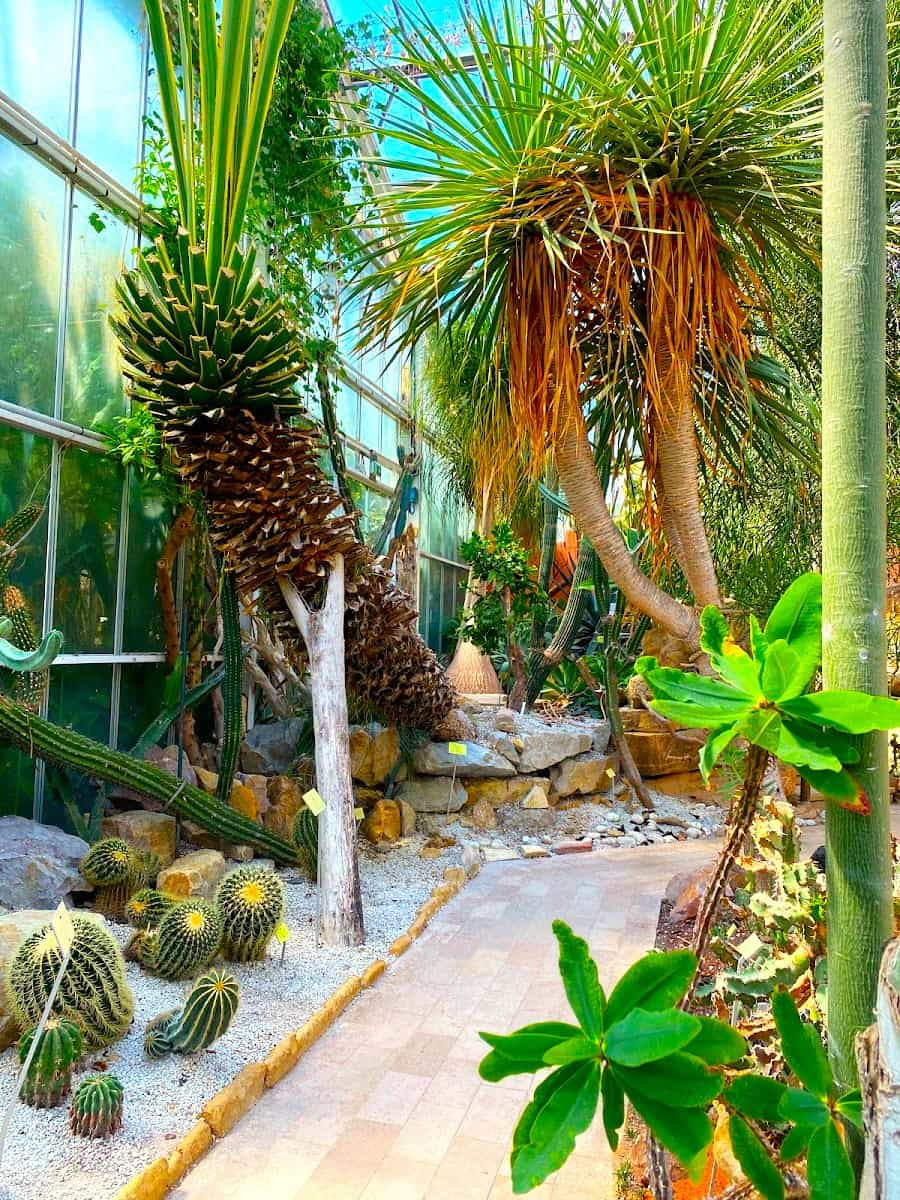
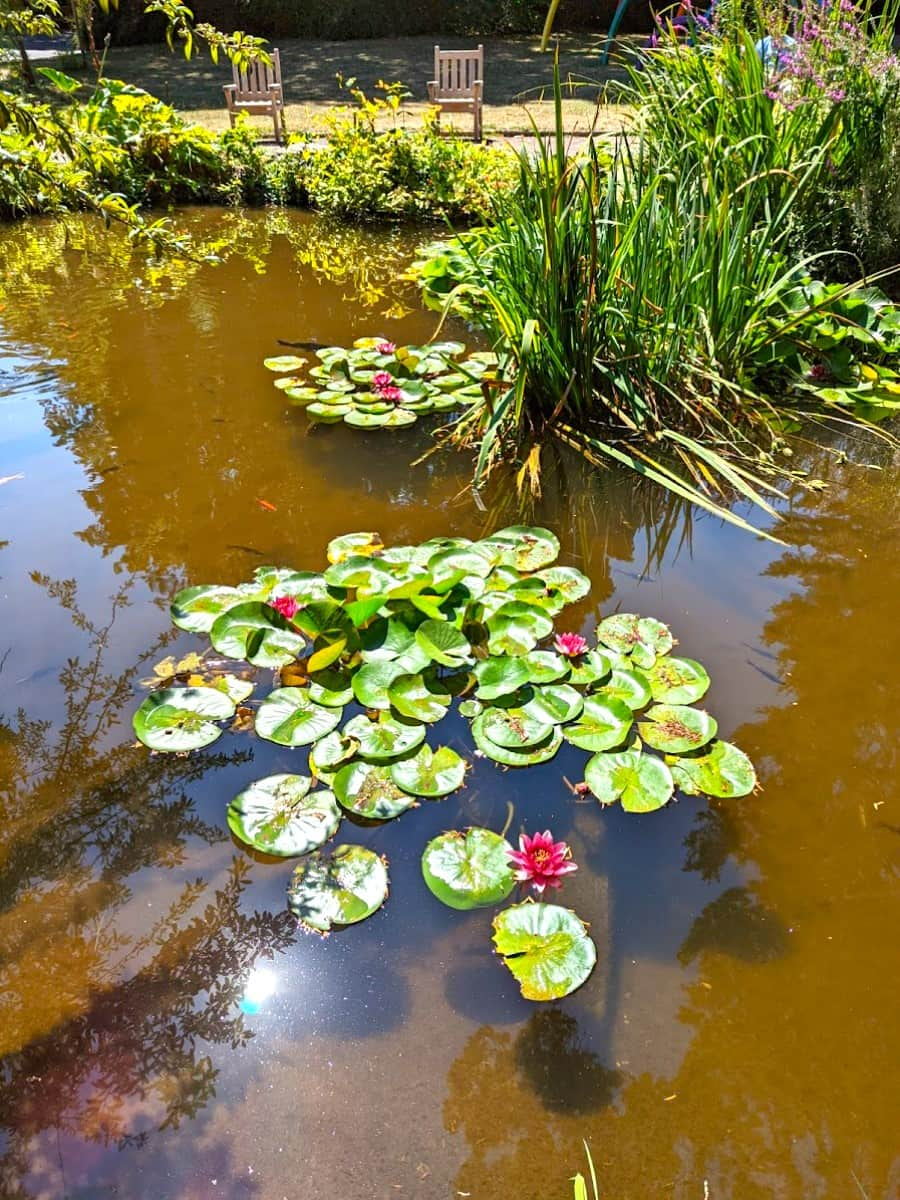
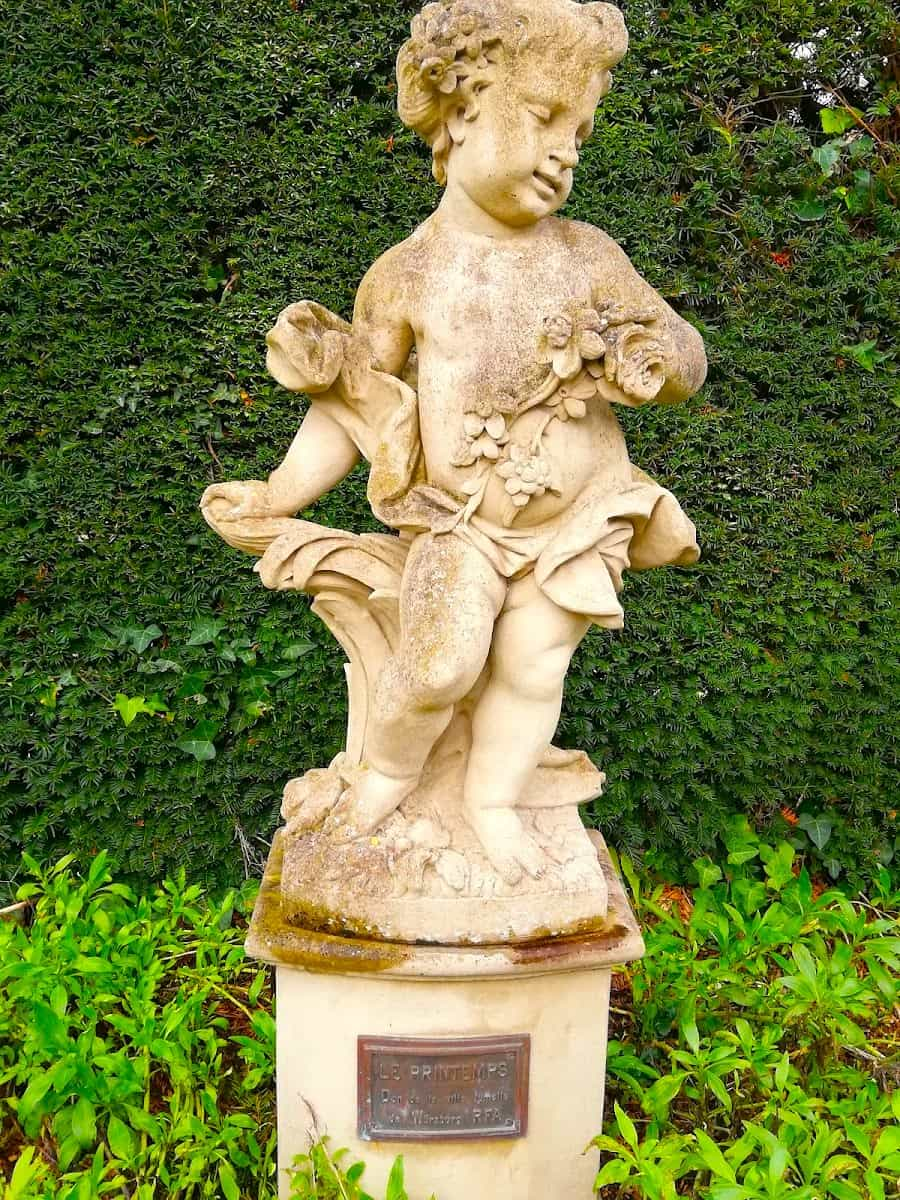
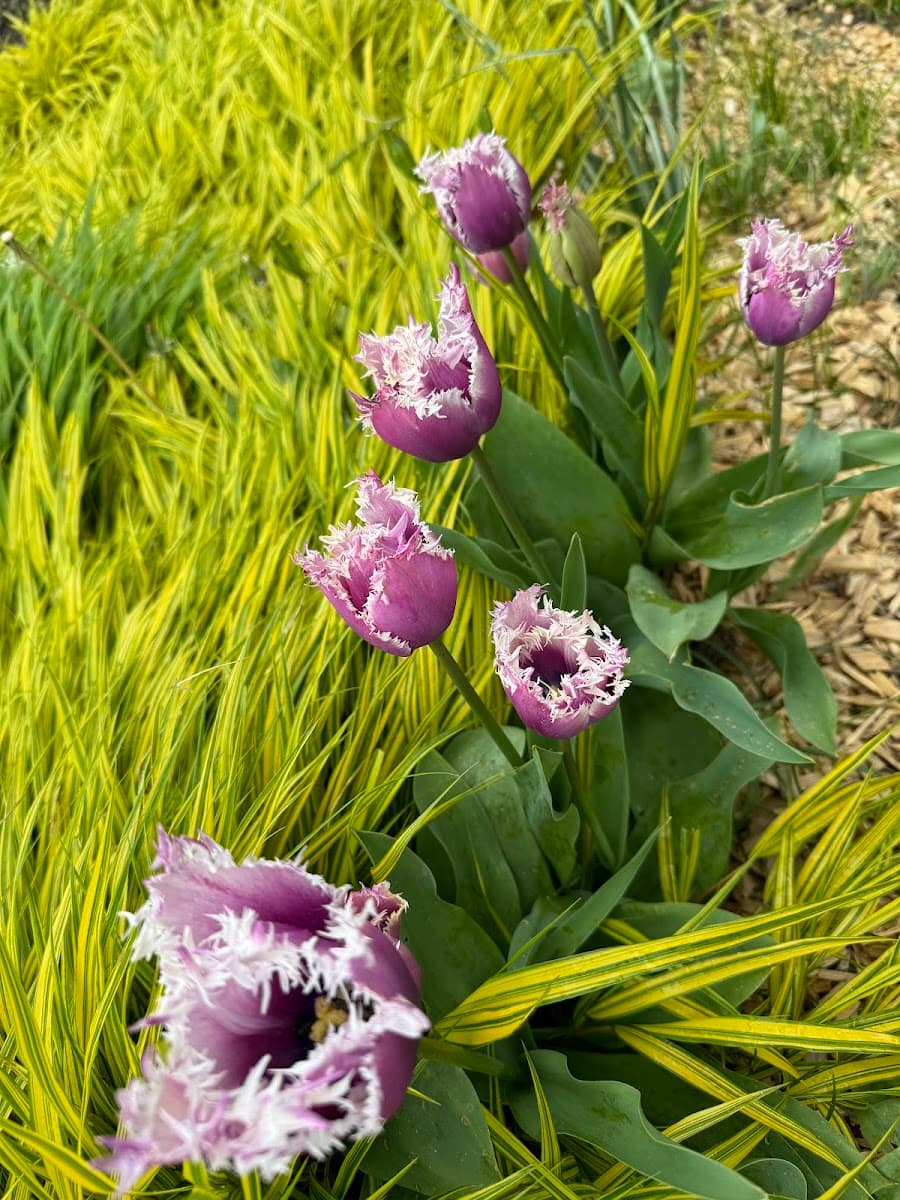
Exotic discoveries. The greenhouse experience was particularly memorable, with exotic species thriving in a carefully maintained environment. Open daily from 1 PM to 5 PM, these greenhouses house approximately 1,500 non-native plants that transport visitors to distant climates. I spent nearly an hour photographing unusual tropical specimens I’d never seen before.
Family-friendly features. The garden offers several amenities that make it perfect for visitors of all ages:
- Play areas for children with outdoor games
- Picnic tables in shaded spots
- Educational activities and workshops
- Bicycle parking facilities
- Accessible toilets including children’s facilities
Expert advice. What sets this garden apart is the availability of Caen’s municipal gardeners who offer professional guidance Monday to Friday (except holidays) from 8 AM to 12 noon and 1:30 PM to 5 PM. I took advantage of this service to ask about some unusual plants I’d spotted, receiving friendly and knowledgeable answers about their origins and care requirements.
| Visitor Information | Details |
|---|---|
| Entrance Fee | Free |
| Opening Hours (Garden) | Monday-Friday from 8 AM, Weekends from 10 AM (closing times vary seasonally) |
| Greenhouse Hours | Daily 1 PM-5 PM |
| Recommended Visit Duration | 1.5-2 hours |
| Location | 5 Place Blot, 14000 Caen (15-minute walk from city center) |
⭐ Best Activities
- Caen Private Walking Custom Tour with a Local Guide – Create your own itinerary and see Caen your way with a private guide.
9. Parc Michel d’Ornano
Elegant landscape. The Parc Michel d’Ornano, formerly known as the Abbaye aux Dames park, captivated me with its formal French-style design inspired by the legendary garden architect André Le Nôtre. Inaugurated in September 1992, this magnificent 5-hectare green space offers wide lawns and beautiful avenues of lime trees that create a sense of grandeur and harmony.
Historical connection. Named after Michel d’Ornano, who served as President of the Lower Normandy Regional Council from 1983 to 1986, the park sits adjacent to the Abbaye aux Dames (Women’s Abbey). I found the juxtaposition of the formal gardens against the historic abbey buildings particularly striking, creating a perfect backdrop for photos that capture Caen’s blend of history and natural beauty.
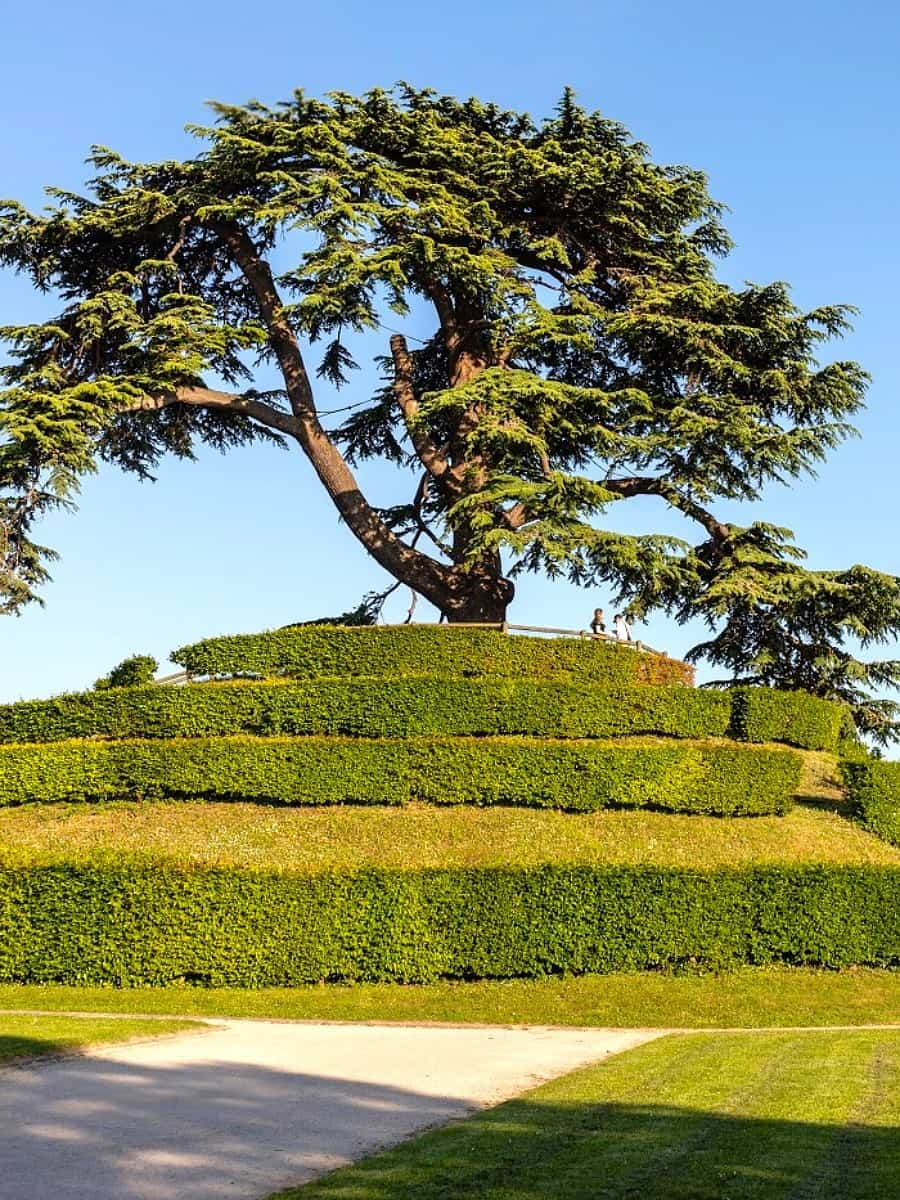
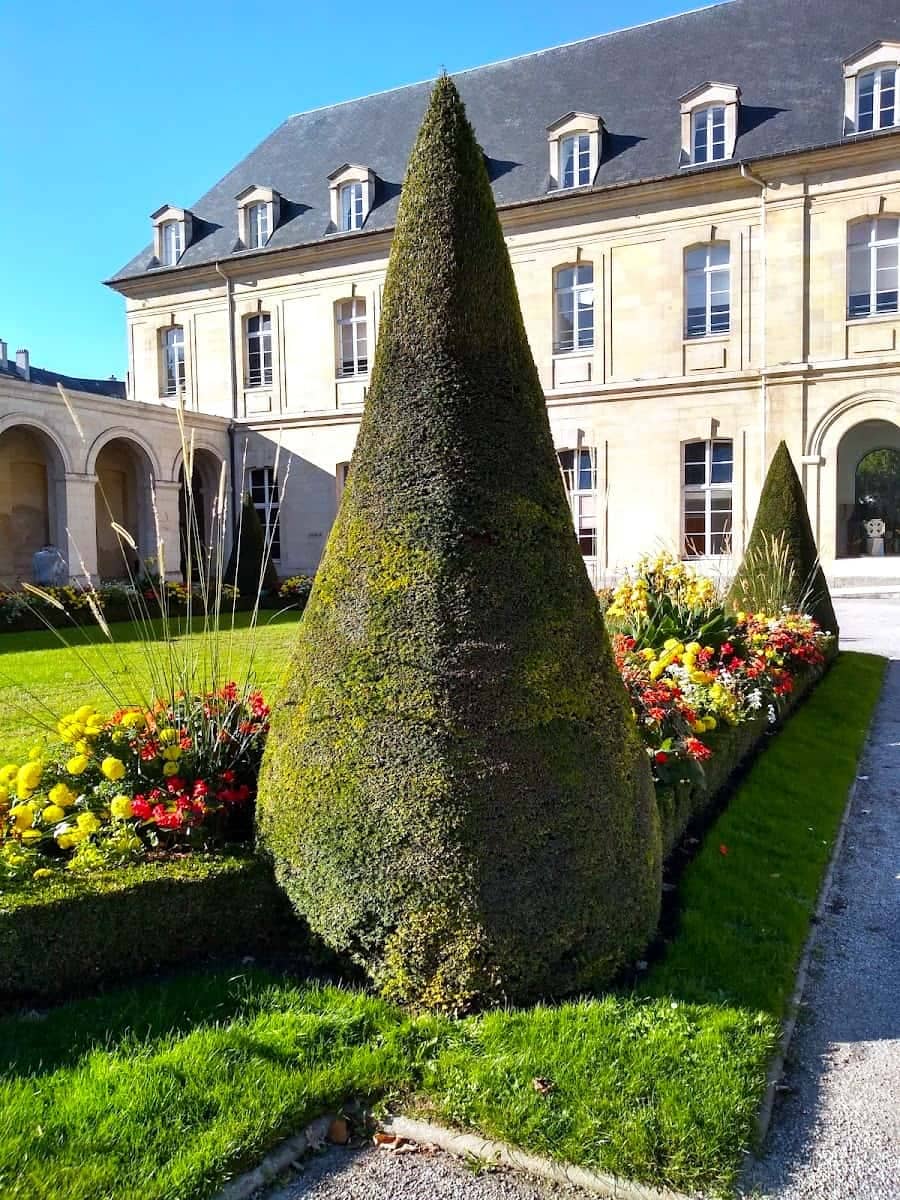
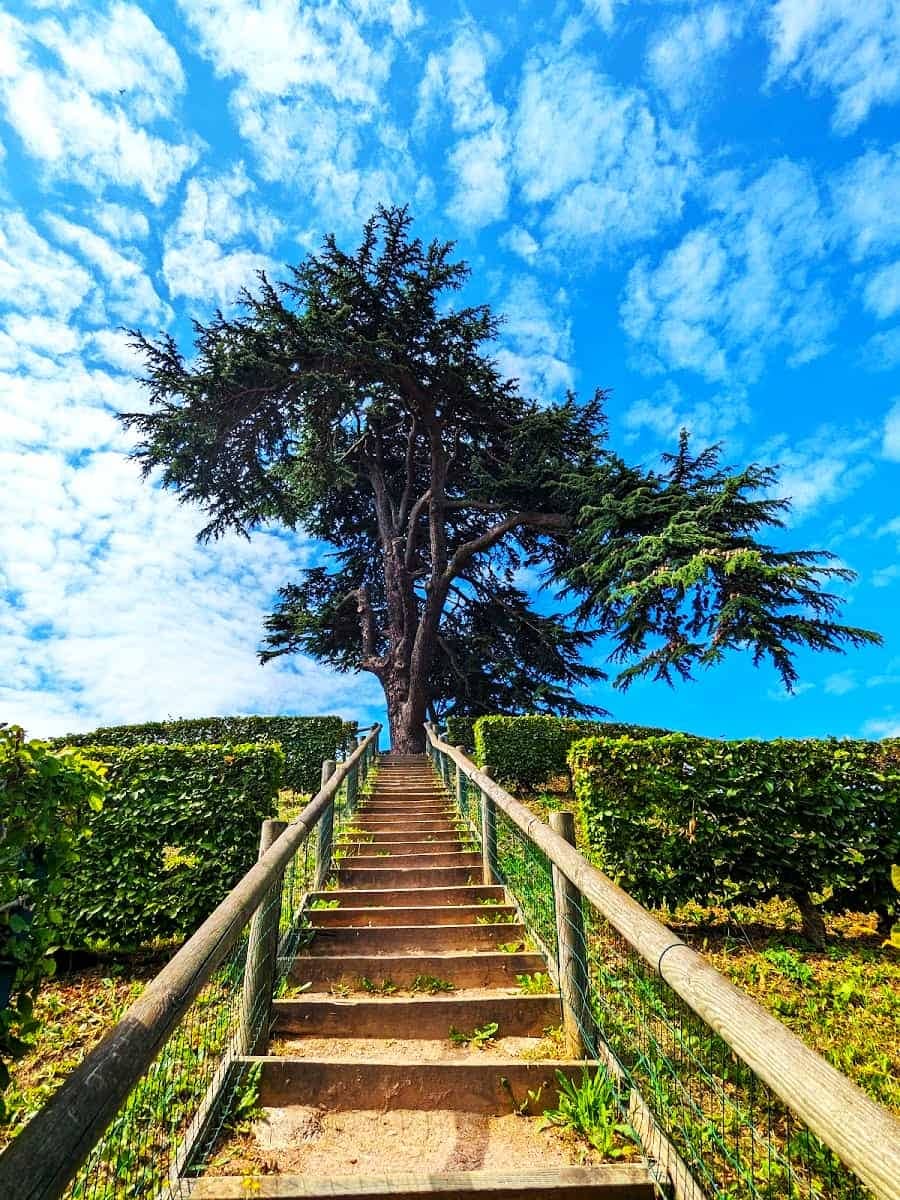
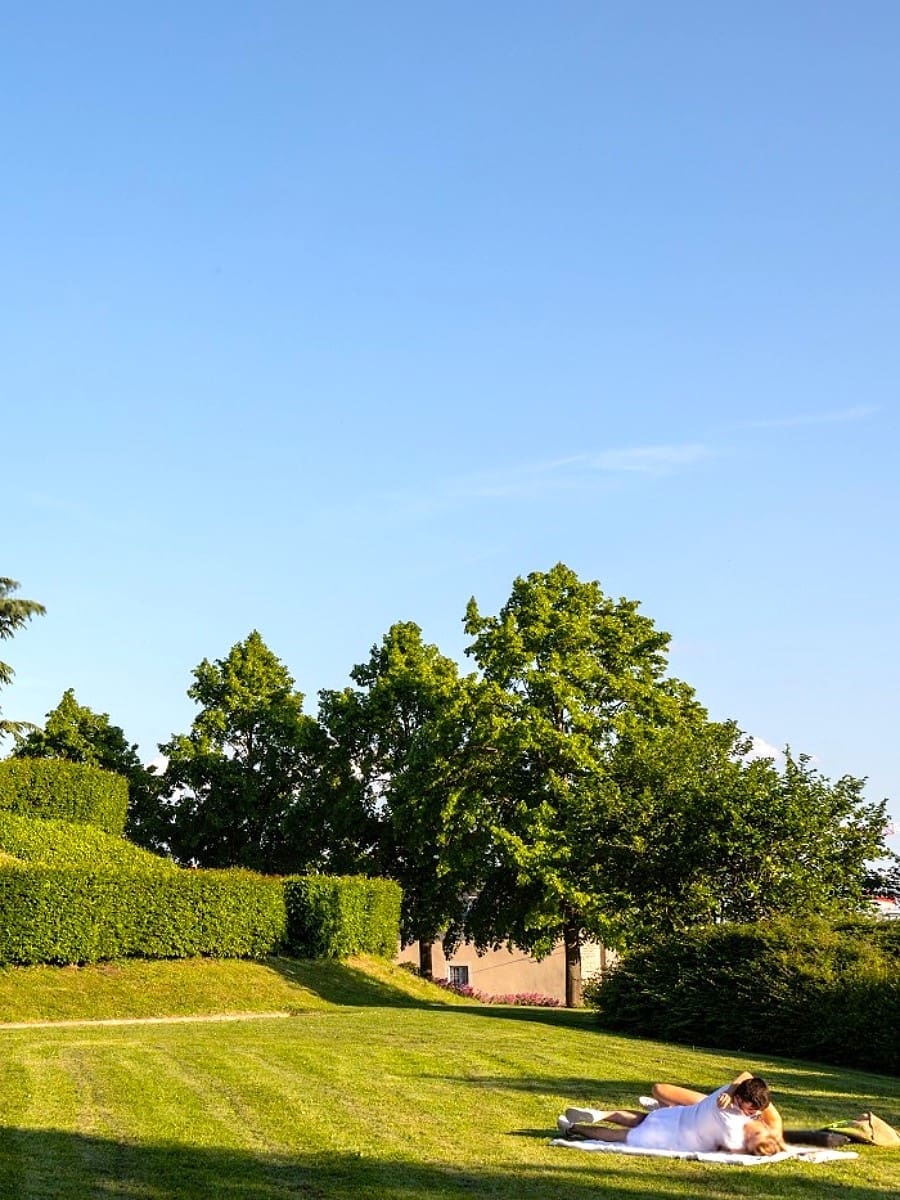
Panoramic views. The park’s elevated position provides an unspoilt view over Caen that took my breath away. I spent nearly an hour sitting beneath the magnificent Lebanon cedar that was planted in 1849, enjoying the panoramic vista of the city spreading out below. The remarkable trees throughout the park include several specimens that garden enthusiasts will appreciate for their size and age.
Visitor amenities. I appreciated the thoughtful facilities that made my visit comfortable and enjoyable. The park includes outdoor games for children, a designated picnic area perfect for a light lunch, clean toilets, and bicycle parking for those exploring Caen on two wheels. The play area is particularly well-designed, making this an excellent stop for families needing a break from sightseeing.
| Visitor Information | Details |
|---|---|
| Entrance Fee | Free |
| Spring/Summer Hours (Apr-Oct) | Daily 8 AM-8 PM |
| Fall/Winter Hours (Nov-Dec) | Daily 8 AM-6:30 PM |
| Facilities | Outdoor games, picnic area, toilets, bicycle parking |
| Location | Adjacent to Abbaye aux Dames |
⭐ Best Activities
- Caen Like a Local: Customized Guided Walking Tour – Experience Caen through the eyes of a local on this fully customized walking tour.
10. St Peter’s Catholic Church (Église Saint-Pierre)
Medieval masterpiece. Standing proudly in the center of Caen on Place Saint-Pierre, the Church of Saint-Pierre is often mistakenly called “the cathedral” by tourists due to its impressive size and central location. When I first entered, I was struck by the soaring ceilings and the beautiful interplay of light through the windows, creating an atmosphere of reverence and historical significance.
Architectural evolution. Construction of this magnificent building took place between the early 13th and 16th centuries, resulting in a fascinating blend of architectural styles. I was particularly impressed by the eastern apse built by Hector Sohier between 1518 and 1545, which beautifully showcases the transition from Gothic to Renaissance architecture both inside and out.
Historical significance. During the Middle Ages, Saint-Pierre hosted the main public ceremonies of Caen. Walking through the church, I couldn’t help but imagine the Te Deum sung here when Henri IV abjured the Protestant religion, ending the religious wars in the presence of the city’s civil and religious representatives. The sense of history is palpable in every stone.
| Visitor Information | Details |
|---|---|
| Entrance Fee | Free |
| Opening Hours | Monday-Saturday 8:30 AM-7 PM, Sunday until 6 PM |
| Location | 110 Rue Saint-Jean, Caen |
| Historical Status | Classified as a historical monument since 1840 |
| Architecture Style | Gothic to Renaissance transition |
⭐ Best Tours
- Caen Private Walking Tour – Enjoy a private, in-depth exploration of Caen’s main sights and stories.
- e-Scavenger Hunt: Explore Caen at Your Own Pace – Solve clues and discover Caen’s highlights on this self-guided scavenger hunt.
Things to Do in Caen with Kids
1. Colline aux Oiseaux (Animal Park and Playground)
Green oasis. The Colline aux Oiseaux (Bird Hill) surprised me with its 17 hectares of beautifully landscaped gardens, playgrounds, and animal enclosures just 10 minutes from downtown Caen. Created on a former landfill site and opened in 1994, this park has been transformed into a family paradise with free admission – a perfect escape when traveling with children who need to burn off energy.
Garden wonderland. I was charmed by the variety of themed gardens, including a stunning rose garden with over 15,000 roses representing 100 different varieties. The carefully maintained topiary garden features whimsical animal shapes that delighted the children I saw visiting. The sensory garden, with plants selected for touch and smell, offers an educational experience disguised as fun.
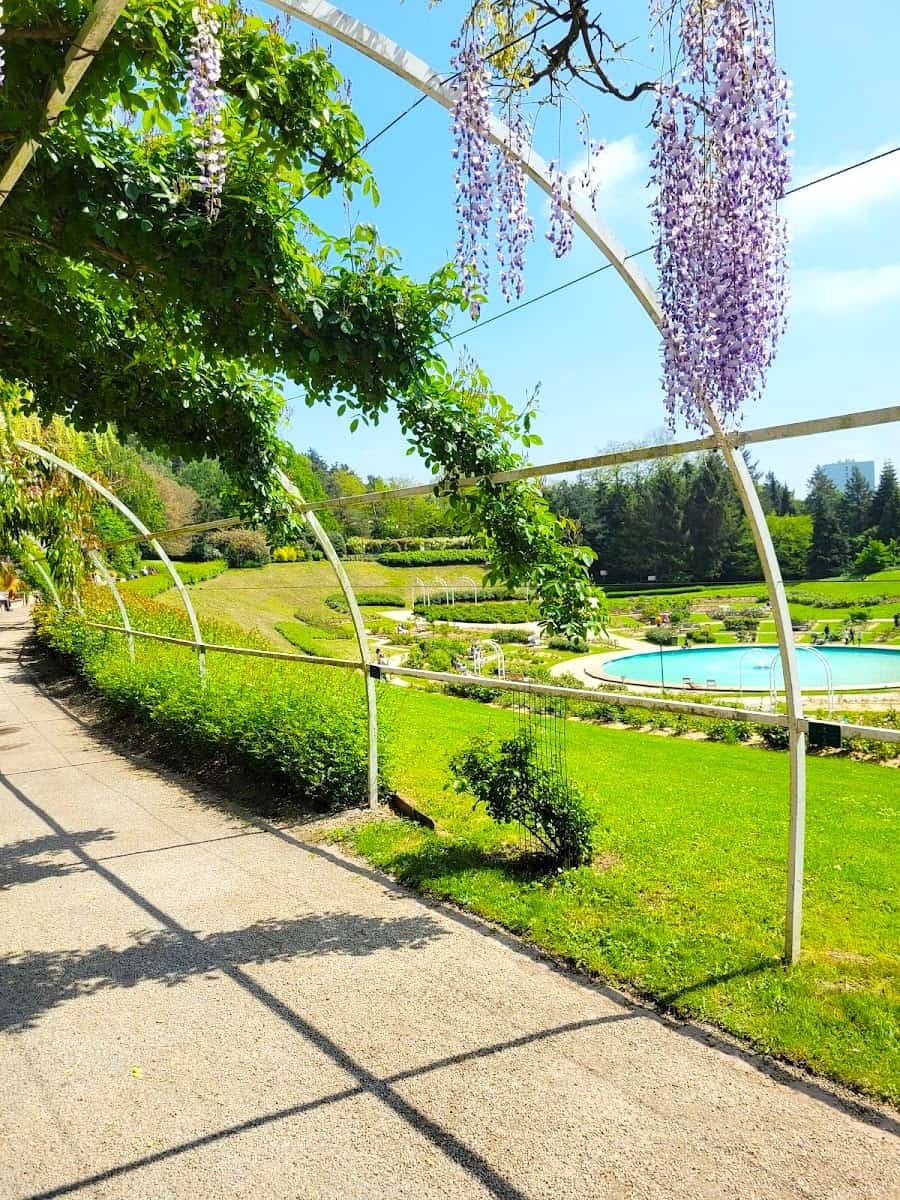


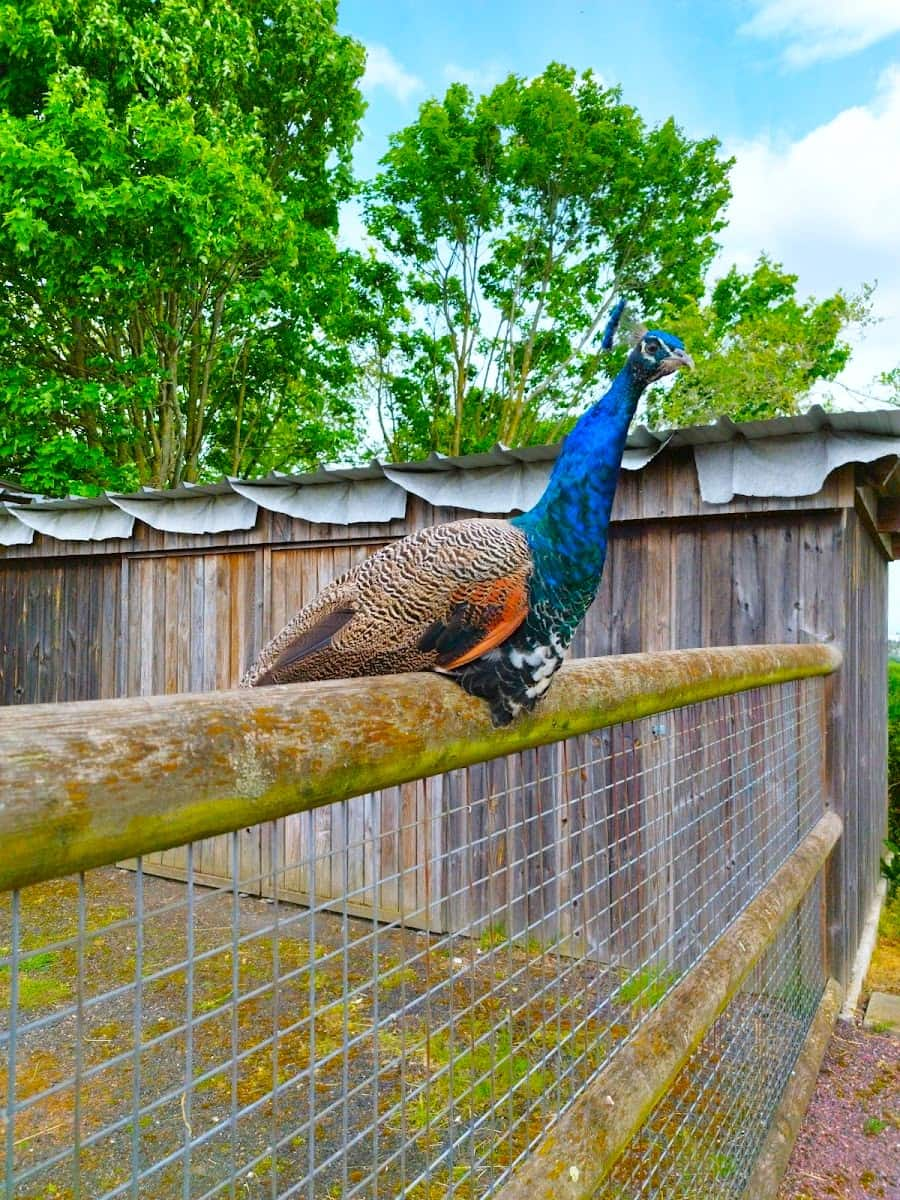
Kid-friendly attractions. The park offers numerous activities specifically designed for families:
- Mini-farm with goats, sheep, and chickens
- Playground with climbing structures
- Miniature Normandy village
- Maze garden
- Duck pond with feeding area
- Picnic spots with tables
Seasonal beauty. The park changes dramatically with the seasons, offering different experiences throughout the year.
| Season | Special Features | Best Time to Visit |
|---|---|---|
| Spring | Cherry blossoms, tulips | April-May |
| Summer | Rose garden in full bloom | June-August |
| Autumn | Fall foliage, chrysanthemums | September-October |
| Winter | Winter garden, evergreen structures | December-February |
Practical advice. I recommend bringing a picnic to enjoy in the designated areas – there’s only a small snack bar open during summer months. The park is open daily from 8 AM until sunset (hours vary seasonally), and parking is free. Visit on weekday mornings to avoid weekend crowds.
⭐ Best Activities
- Caen Private Custom Tour with a Local Guide – Design your perfect Caen experience with a local expert.
2. Local Chocolate Shops and Bakeries
Sweet adventures. Exploring Caen’s chocolate shops and bakeries became an unexpected highlight of my trip with my niece and nephew. Norman pastry traditions feature butter-rich treats that showcase local products like apples, caramel, and dairy. I discovered that visiting these sweet spots creates delicious memories while providing shelter during occasional Normandy rain showers.
Chocolate treasures. Caen boasts several artisanal chocolatiers creating handmade confections that rival anything I’ve tasted in Paris. At Léonard Chocolatier on Rue Saint-Pierre, we watched through a glass partition as chocolatiers transformed liquid chocolate into artistic bonbons. The children were mesmerized by the process and thrilled when offered samples of chocolate-covered caramels.
Must-try treats. During our sweet tour of Caen, we sampled several local specialties:
- Teurgoule (rice pudding with cinnamon)
- Fallue (brioche-like sweet bread)
- Sablés normands (butter cookies)
- Apple tarts with Calvados cream
- Chocolate seashells filled with caramel
- Salted butter caramels
Bakery workshop. For a hands-on experience, I booked a kid-friendly baking class at La Maison du Biscuit, where the children learned to make traditional Norman cookies.
| Shop | Specialty | Kid-Friendly Feature |
|---|---|---|
| Léonard Chocolatier | Artisanal chocolates | Viewing window to watch production |
| Les Gourmandises de Lily | Macarons | Colorful displays and mini-sized treats |
| La Maison du Biscuit | Traditional cookies | Children’s baking workshops (25€) |
| Boulangerie Lamoureux | Apple pastries | “Mini-gourmand” children’s selection |
Sweet souvenir. The beautifully packaged treats from these shops make perfect gifts to bring home. I recommend the signature “pavés de Caen” – chocolate squares filled with apple-caramel that represent the stone buildings of the city. They’re available in child-friendly packaging at most chocolate shops in the city center.
⭐ Best Activities
- Caen 2-Hour Private Guided City Tour – Get to know Caen’s history and culture on this focused, private two-hour tour.
Free Things to Do in Caen
1. Vaugueux District
Budget-friendly exploration. The Vaugueux district offers one of Caen’s most atmospheric experiences without spending a euro. I spent a delightful morning wandering through this medieval quarter, photographing the half-timbered houses and discovering hidden courtyards. The narrow cobblestone street rises steeply from Place Saint-Pierre toward the castle, creating perfect photo opportunities at every turn.
Historical immersion. What makes the Vaugueux special is how it preserves Caen’s pre-war character, having largely escaped the bombing that destroyed much of the city in 1944. I felt transported back in time while examining the architectural details – stone carvings, ancient doorways, and leaning facades that have witnessed centuries of Norman history.
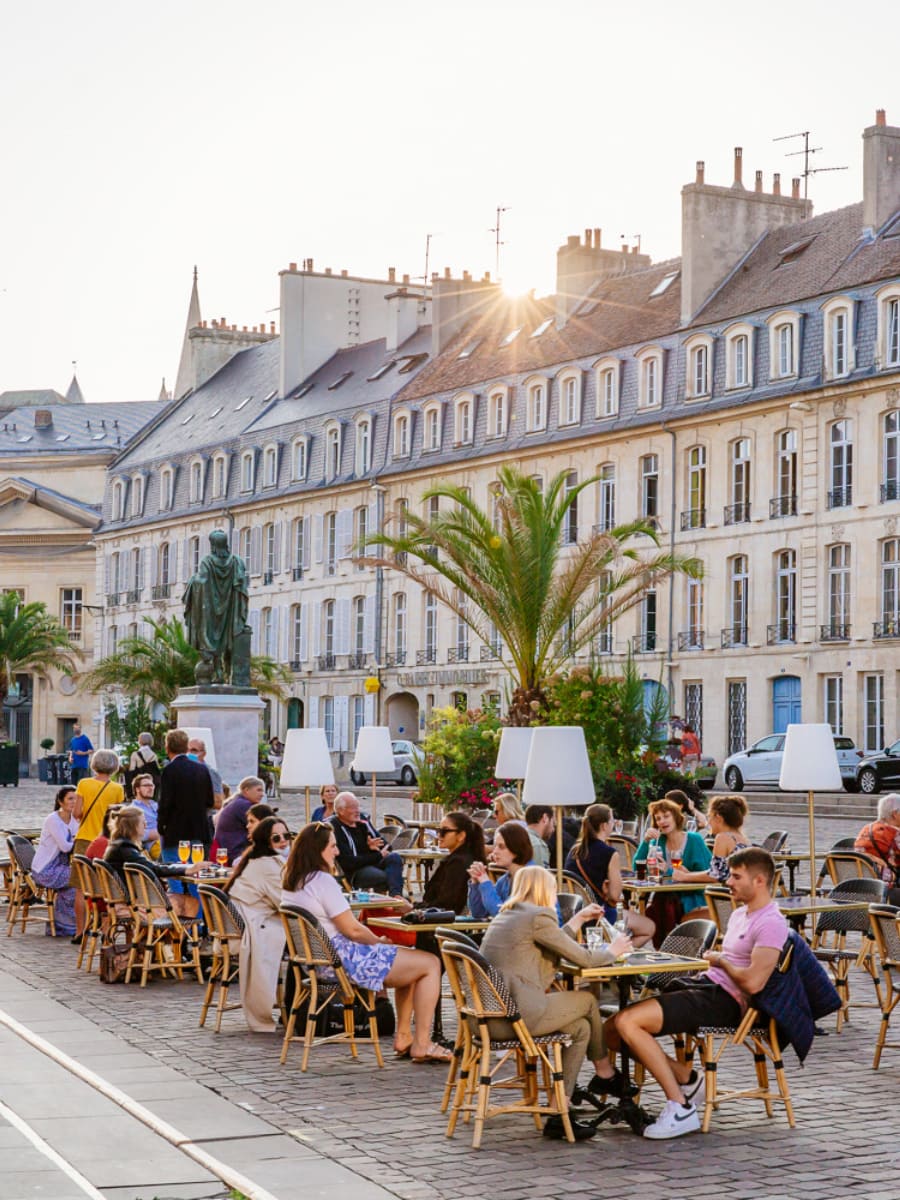
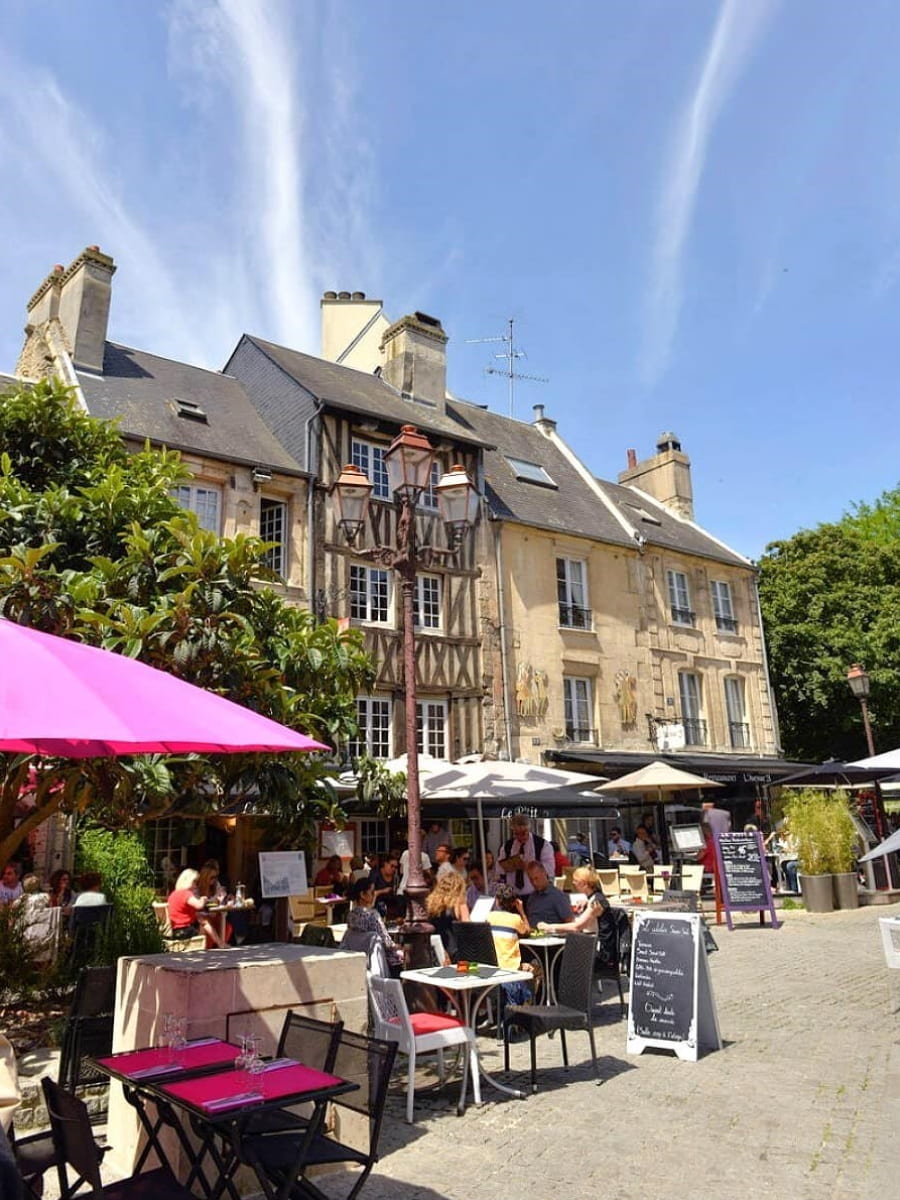
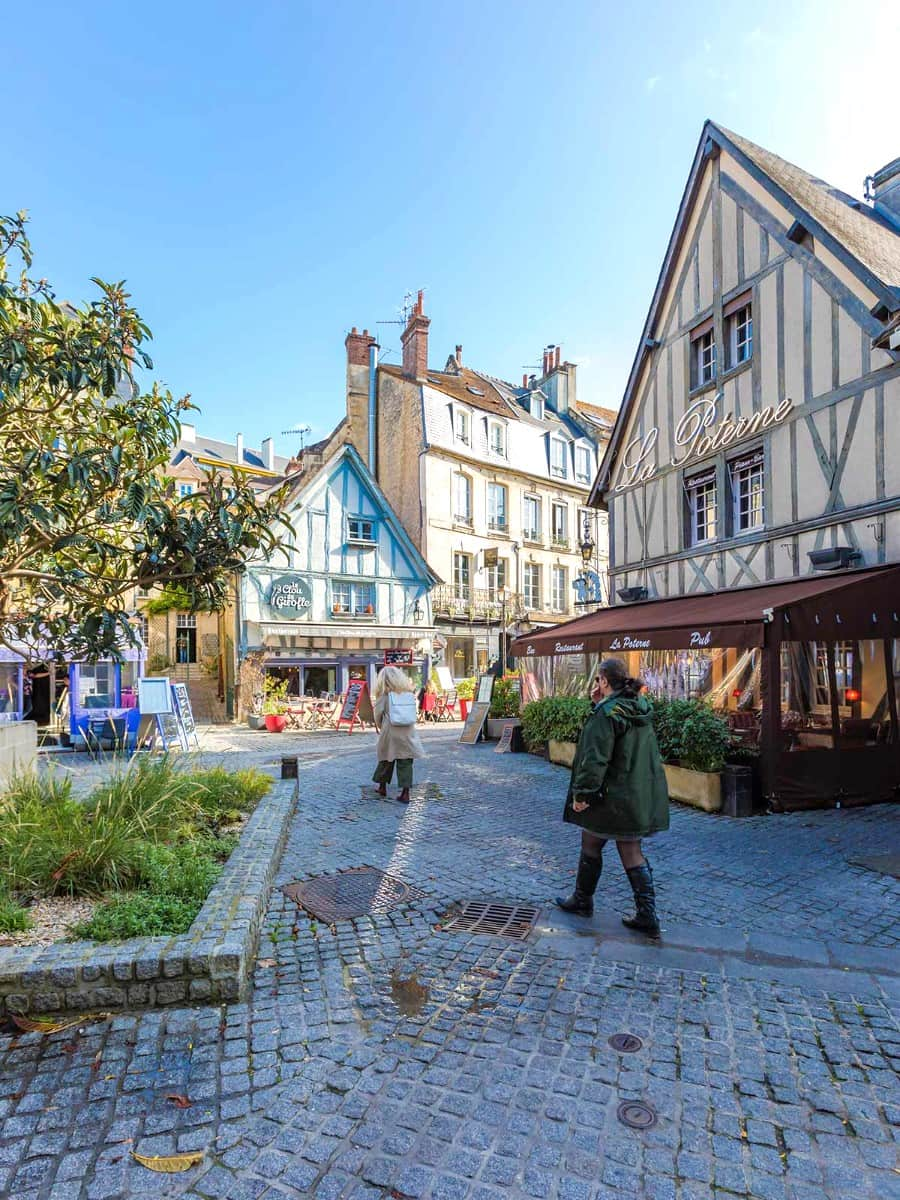

Free activities. Beyond simply wandering, the district offers several no-cost experiences:
- Architectural photography
- Street musicians (especially weekends)
- Window shopping at boutiques
- People-watching from public benches
- Historical information panels
- Seasonal decorations (flowers in summer, lights in winter)
Self-guided walking route. I created my own free tour following this path:
| Starting Point | Landmarks | Ending Point |
|---|---|---|
| Place Saint-Pierre | Saint-Pierre Church → Rue du Vaugueux → Medieval houses → Hidden courtyard at #23 | Place du Vaugueux |
Money-saving tip. While restaurants in the Vaugueux can be pricey, I discovered that many offer “happy hour” specials from 5-7 PM with reduced prices on drinks and small plates. This allowed me to experience the district’s culinary scene without the expense of a full dinner. La Cave du Vaugueux offers wine tastings with complimentary nibbles during these hours.
2. Caen Castle Grounds (outside areas)
Free fortress exploration. The exterior grounds of Caen Castle offer an impressive free attraction that I explored thoroughly without spending anything. While the museums inside require tickets, the massive stone walls, ramparts, and gardens are completely free to visit and provide hours of exploration. I was amazed by the sheer scale of this medieval fortress built by William the Conqueror.
Panoramic views. Climbing the ramparts rewarded me with spectacular panoramas of Caen spreading out below. I could identify major landmarks like the two abbeys and the marina in the distance. The elevated position provides perfect photo opportunities, especially in the golden hour before sunset when the limestone buildings glow warmly in the fading light.
Free castle features. During my visit, I discovered several noteworthy areas with no admission charge:
- Rampart walkways
- Ducal palace ruins
- Castle gardens
- Saint George’s Church exterior
- Medieval gates and drawbridge
- Moat gardens
- Information panels with historical context
Seasonal events. The castle grounds host various free events throughout the year.
| Season | Free Activities | Timing |
|---|---|---|
| Summer | Open-air cinema screenings | Friday evenings, July-August |
| Spring | Medieval craft demonstrations | Weekends in May |
| Autumn | Apple harvest festival | Second weekend in October |
| Winter | Christmas illuminations | December 1-January 6 |
Insider advice. I discovered that the castle grounds are much less crowded in the early morning (before 10 AM) and evening (after 6 PM) when the tour groups have departed. These quieter times allowed me to appreciate the historical atmosphere and take photos without crowds. The eastern ramparts offer the best views over the city at sunset.
Seasonal Activities in Caen
1. Christmas in Caen (Christmas Market, Festive Lights)
Winter wonderland. Caen transforms into a magical Christmas destination from late November through December, with the city center adorned in thousands of twinkling lights. I was charmed by the festive atmosphere that envelops the streets around Place Saint-Sauveur and the castle. The Norman weather may be chilly, but the warm glow of decorations and the scent of mulled cider create an inviting ambiance.
Christmas market delights. The Marché de Noël in Place Saint-Sauveur (November 25-December 31) became my daily stop for warming treats and artisanal gifts. Wooden chalets sell everything from handcrafted ornaments to regional specialties. I found the perfect gifts – hand-poured candles scented with apple and cinnamon, and beautiful ceramic mugs made by local artisans.
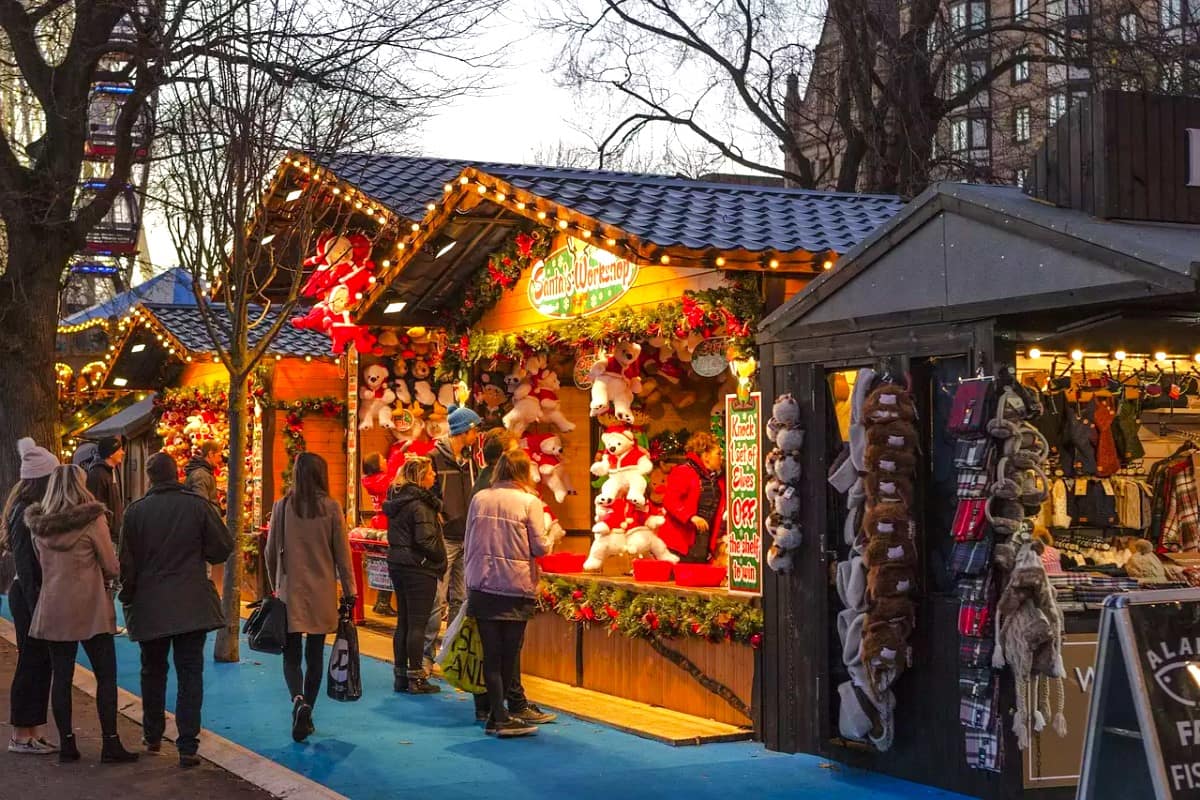
Festive activities. The Christmas season in Caen offers numerous special events:
- Ice skating rink in Place de la République (5€ for adults, 3€ for children)
- Christmas carol concerts at Abbaye aux Hommes (December 15-23)
- Living nativity scene at Saint-Pierre Church (weekends in December)
- Santa’s village for children in Jardin des Plantes
- Midnight Mass at the abbeys (December 24)
- New Year’s Eve fireworks at the marina
Seasonal specialties. The Christmas market offers traditional Norman holiday treats not found year-round.
| Christmas Treat | Description | Price |
|---|---|---|
| Vin chaud | Mulled wine with Norman spices | 3-4€ |
| Chocolat chaud | Thick hot chocolate | 3€ |
| Pain d’épices | Spiced honey bread | 4-8€ |
| Bûche de Noël | Traditional Christmas cake | 5-7€ per slice |
| Calvados-soaked fruits | Dried fruits in apple brandy | 8-12€ |
Practical tip. I found the market most magical after dark (around 5 PM) when the lights create a cozy atmosphere. However, for shopping, I recommend visiting in the morning when the stalls are less crowded and vendors have more time to explain their products. Many shops offer special holiday hours, staying open until 8 PM on Thursdays and Fridays in December.
2. Summer Festivals and Events (Music, Open-Air Cinema)
Festival season. Summer brings Caen to life with a vibrant calendar of cultural events and outdoor festivities. I discovered that June through September offers perfect weather for enjoying the city’s parks, plazas, and historic sites while experiencing special events that showcase Norman culture and international talent. The long daylight hours (until nearly 10 PM in June) create magical evenings for outdoor entertainment.
Musical highlights. The highlight of my summer visit was Beauregard Festival (first weekend of July), held in the park of Château de Beauregard just outside Caen. This four-day music festival attracts international acts across multiple genres. In the city itself, the free Eclat(s) de Rue street performance festival (July-August) transforms urban spaces into stages for acrobats, musicians, and theatrical performances.
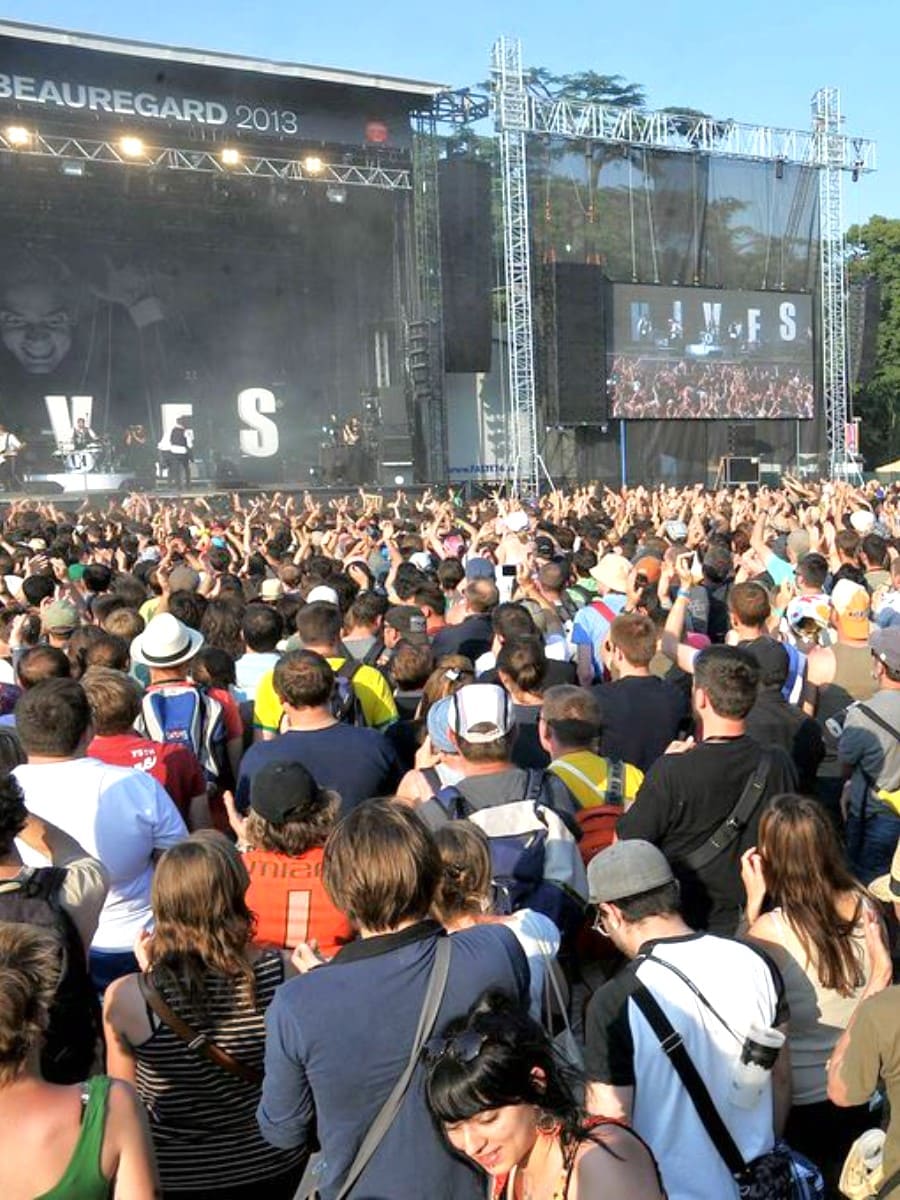
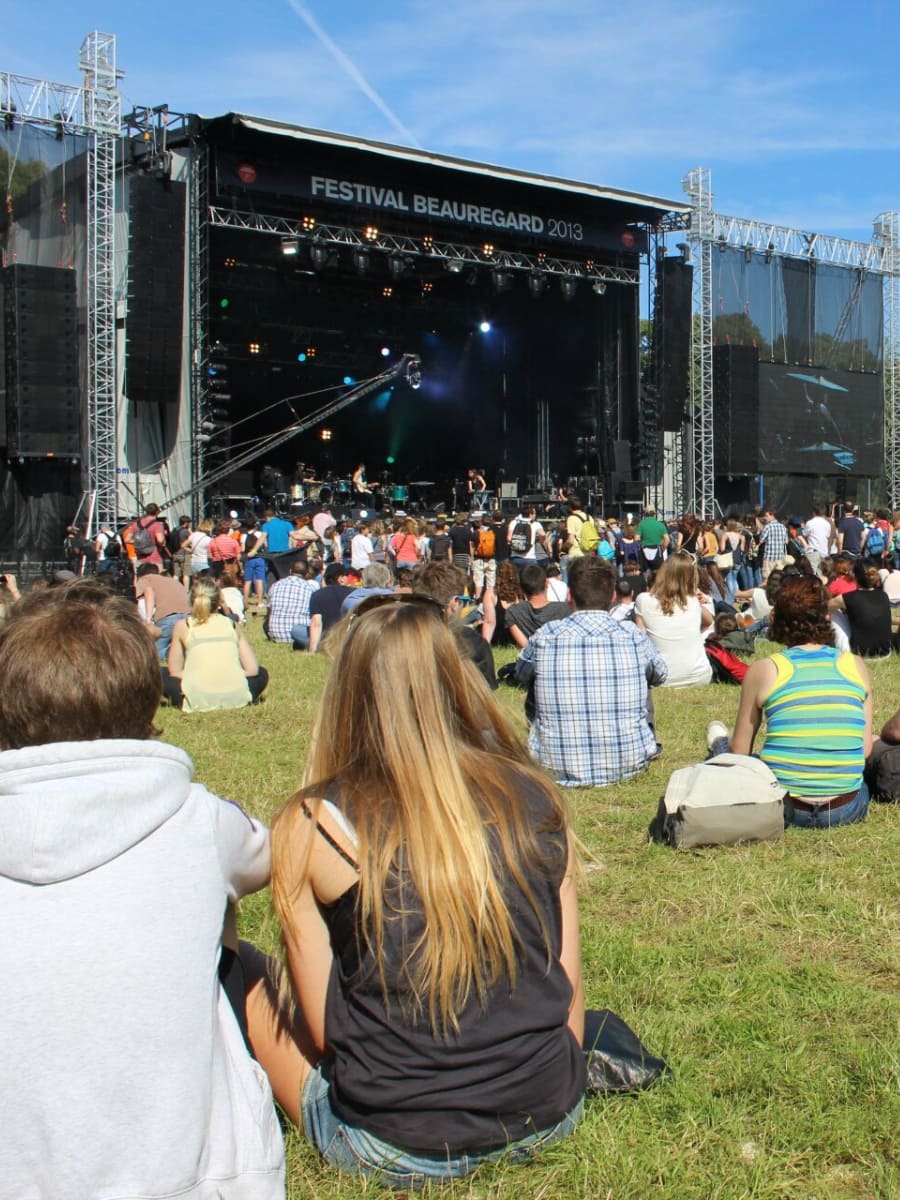
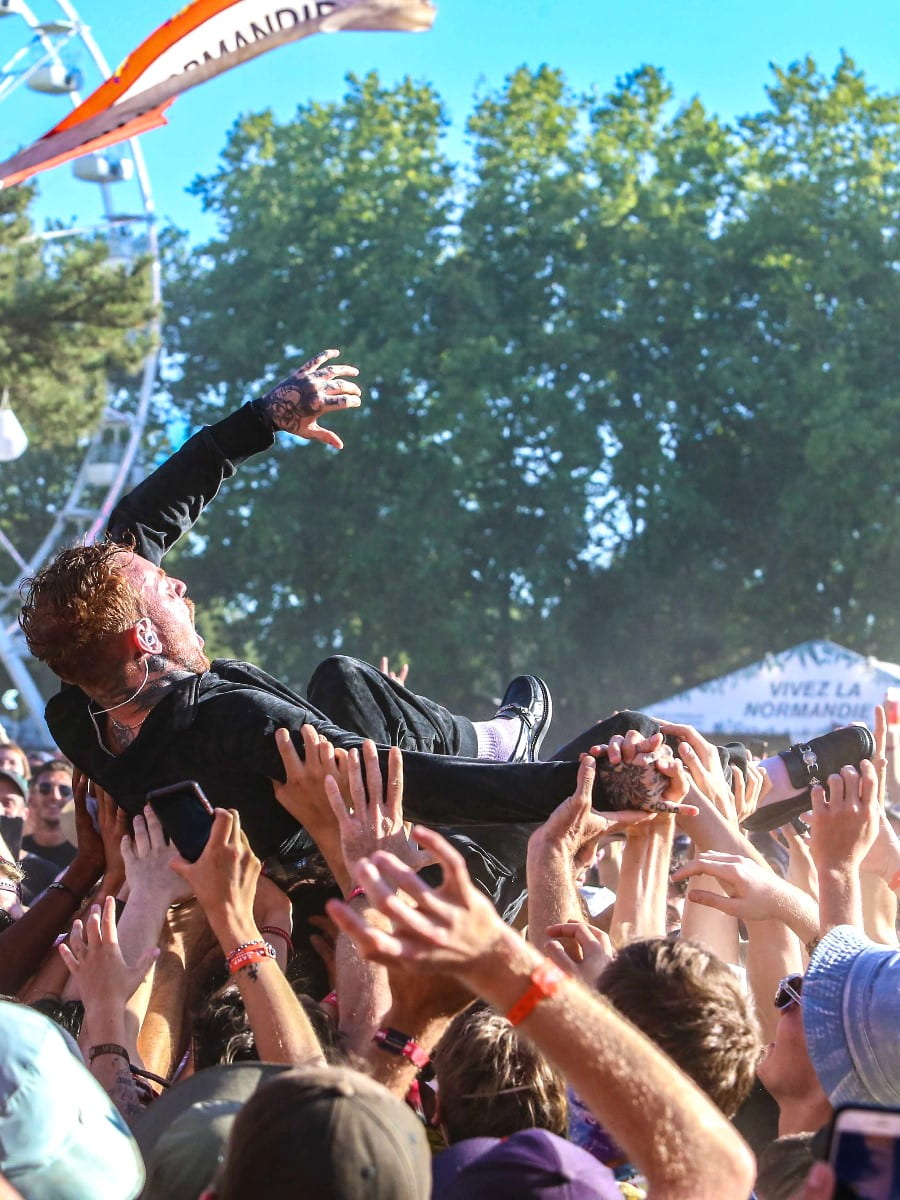
Summer event calendar. During the warmer months, Caen offers numerous special events:
- Fête de la Musique (June 21) – free concerts throughout the city
- Beauregard Festival (early July) – major music festival
- Eclat(s) de Rue (July-August) – street performance festival
- Open-air cinema at Château de Caen (Friday evenings, July-August)
- Medieval Fair at the castle (second weekend of August)
- Normandy Channel Race (sailing competition, mid-June)
Outdoor entertainment. Summer evenings offer perfect opportunities to enjoy Caen’s outdoor spaces.
| Event | Location | Cost | Dates |
|---|---|---|---|
| Open-air cinema | Castle grounds | Free | Friday evenings, July-August |
| Jazz concerts | Marina waterfront | Free | Thursday evenings, June-September |
| Night market | Place Saint-Sauveur | Free entry | First Saturday of month, June-September |
| Garden concerts | Jardin des Plantes | 5-10€ | Sunday afternoons, June-August |
Summer advice. I recommend bringing a light jacket even for summer evenings, as Normandy’s coastal influence can make nights cool. For popular events like the Beauregard Festival, book accommodations months in advance – I secured my tickets in February for the July festival and was glad I did as they sell out quickly.
3. Spring Blooms in Jardin des Plantes
Floral awakening. Spring transforms Caen’s Jardin des Plantes into a botanical paradise as thousands of bulbs and flowering trees burst into color from March through May. I timed my visit for mid-April and was rewarded with a spectacular display of tulips, daffodils, and cherry blossoms. This 3.5-hectare botanical garden, established in 1689, offers a peaceful retreat just minutes from the city center.
Garden highlights. What impressed me most was the garden’s diversity – formal French parterres transition into English-style landscapes, medicinal gardens, and exotic greenhouses. The systematic botanical collection contains over 8,000 plant species, making it both beautiful and educational. The Victorian-era greenhouses house tropical specimens that provide a warm escape on cooler spring days.
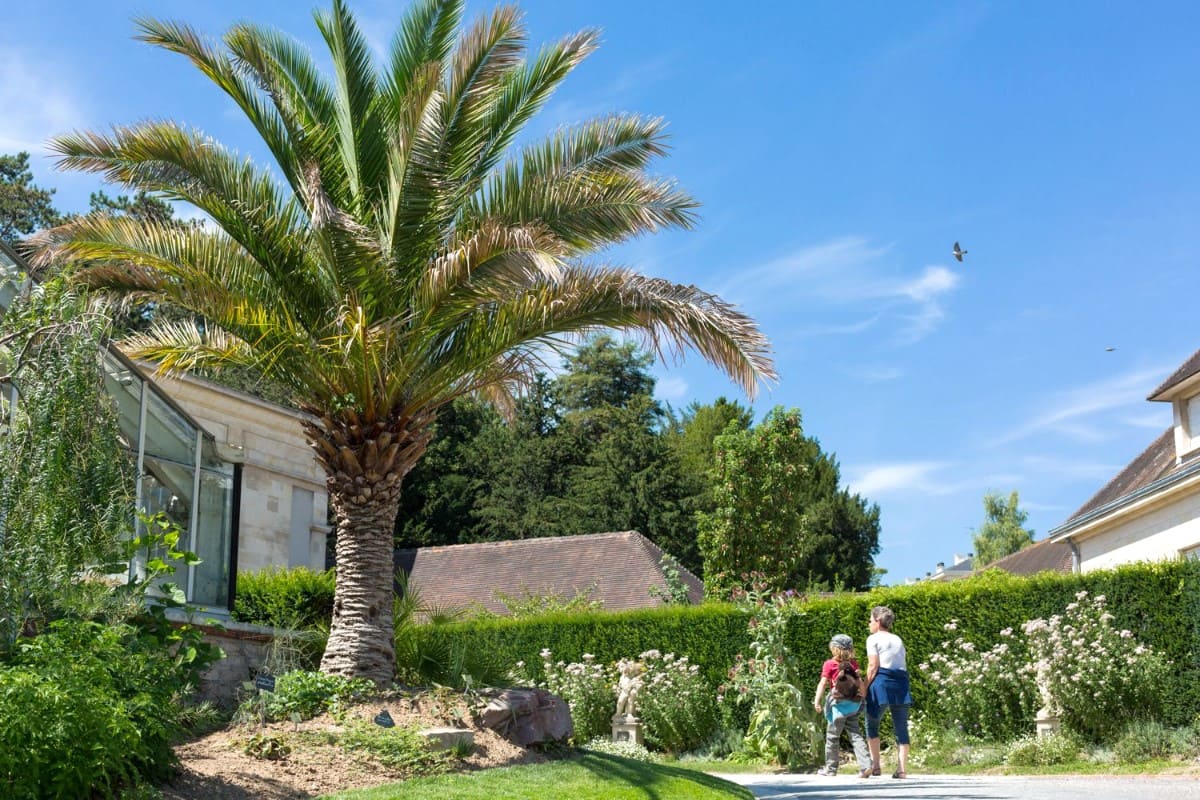
Spring flowering calendar. The garden’s blooms follow a predictable sequence:
- Early March: Snowdrops, crocuses, and hellebores
- Late March: Daffodils, early tulips, and magnolias
- April: Cherry blossoms, tulips at peak, and bluebells
- May: Wisteria, rhododendrons, and early roses
- Late May: Peonies, irises, and woodland flowers
Visitor information. The garden offers free admission and various amenities.
| Garden Section | Special Features | Best Viewing Time |
|---|---|---|
| Systematic Collection | Labeled plant families | Morning light |
| Alpine Garden | Rock garden with mountain species | Midday |
| Medicinal Garden | Traditional healing plants | Guided tours Wednesdays at 2 PM |
| Greenhouses | Tropical and desert collections | Rainy days (open 2-5 PM) |
| Rose Garden | Historic and modern varieties | Late May onwards |
Photographer’s tip. I discovered that the morning light (8-10 AM) creates magical conditions for photography, especially in the systematic collection where dew still clings to the petals. The garden is less crowded on weekday mornings, allowing for uninterrupted nature photography. Don’t miss the view from the belvedere, which offers a panoramic perspective of the formal gardens.
4. Autumn Foliage Walks in City Parks
Golden season. Autumn paints Caen’s parks and gardens in spectacular shades of gold, amber, and crimson from late September through November. I found this season particularly magical for exploring the city’s green spaces, with fewer tourists and perfect temperatures for walking. The quality of light during autumn creates a photographer’s dream, especially in the golden hour before sunset.

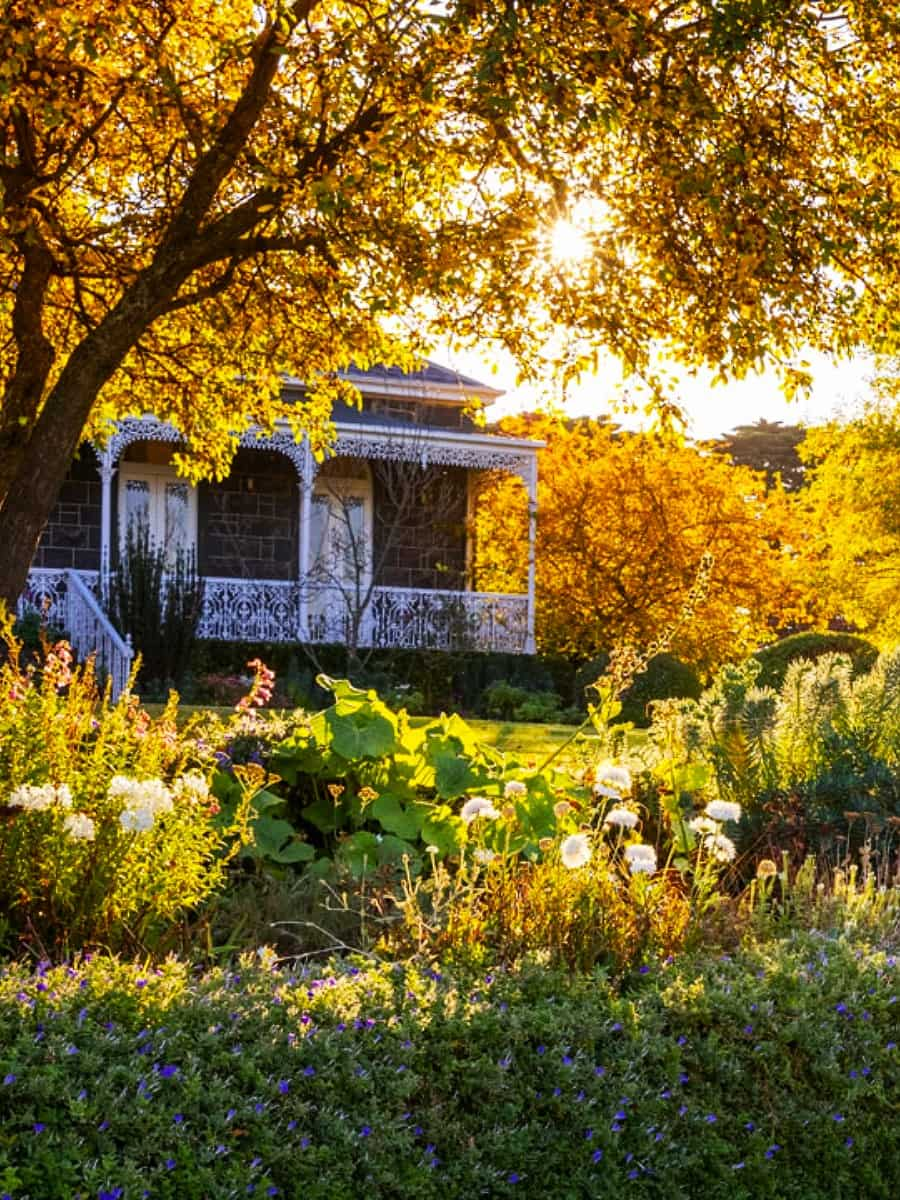
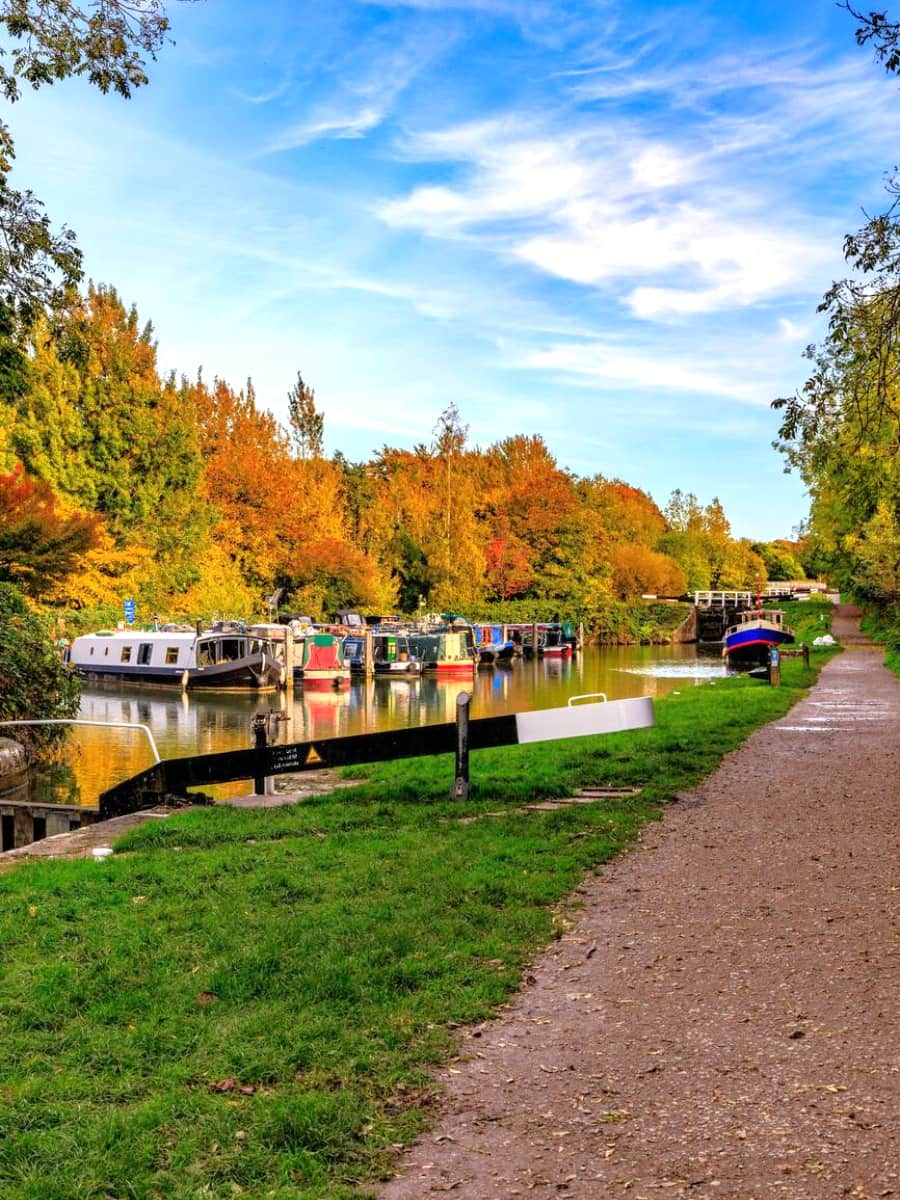
Foliage hotspots. While many visitors associate Normandy with spring blossoms, I discovered that autumn offers equally stunning landscapes. The Vallée des Jardins (Valley of Gardens) connecting the castle to the Orne River becomes a corridor of color as maples, chestnuts, and beeches change their leaves. The Japanese garden within Colline aux Oiseaux showcases particularly vibrant autumn colors.
Autumn walking routes. I created several self-guided walks to experience the best fall foliage:
- Castle ramparts to Abbaye aux Hommes (historic route with city views)
- Orne River path along the marina (waterside reflections of autumn trees)
- Colline aux Oiseaux complete circuit (diverse landscapes and viewpoints)
- Botanical garden to Prairie (natural meadow area with wild grasses)
- University campus arboretum (collection of rare specimen trees)
Seasonal activities. Autumn in Caen offers special experiences beyond leaf-peeping.
| Activity | Location | Timing | Cost |
|---|---|---|---|
| Apple harvest festival | Castle grounds | Second weekend in October | Free |
| Mushroom exhibition | Botanical garden | Late October | 3€ |
| Autumn produce market | Place Saint-Sauveur | Saturday mornings | Free entry |
| Photography workshop | Colline aux Oiseaux | First Sunday in November | 15€ |
Weather wisdom. I learned to always carry a light raincoat during autumn walks, as Normandy weather can change quickly. The morning mist rising from the Orne River creates atmospheric conditions for photography but can feel chilly. I found mid-afternoon (2-4 PM) offered the best combination of comfortable temperatures and beautiful light for autumn exploration.
Day Trip from Caen
1. D-Day Landing Beaches
Historic coastline. Just 30 minutes from Caen, the D-Day Landing Beaches offer a profound historical experience that I found both moving and educational. These stretches of sand along Normandy’s coast witnessed the largest seaborne invasion in history on June 6, 1944, when Allied forces began the liberation of Western Europe. Each beach has its own character and memorials that tell different aspects of the D-Day story.
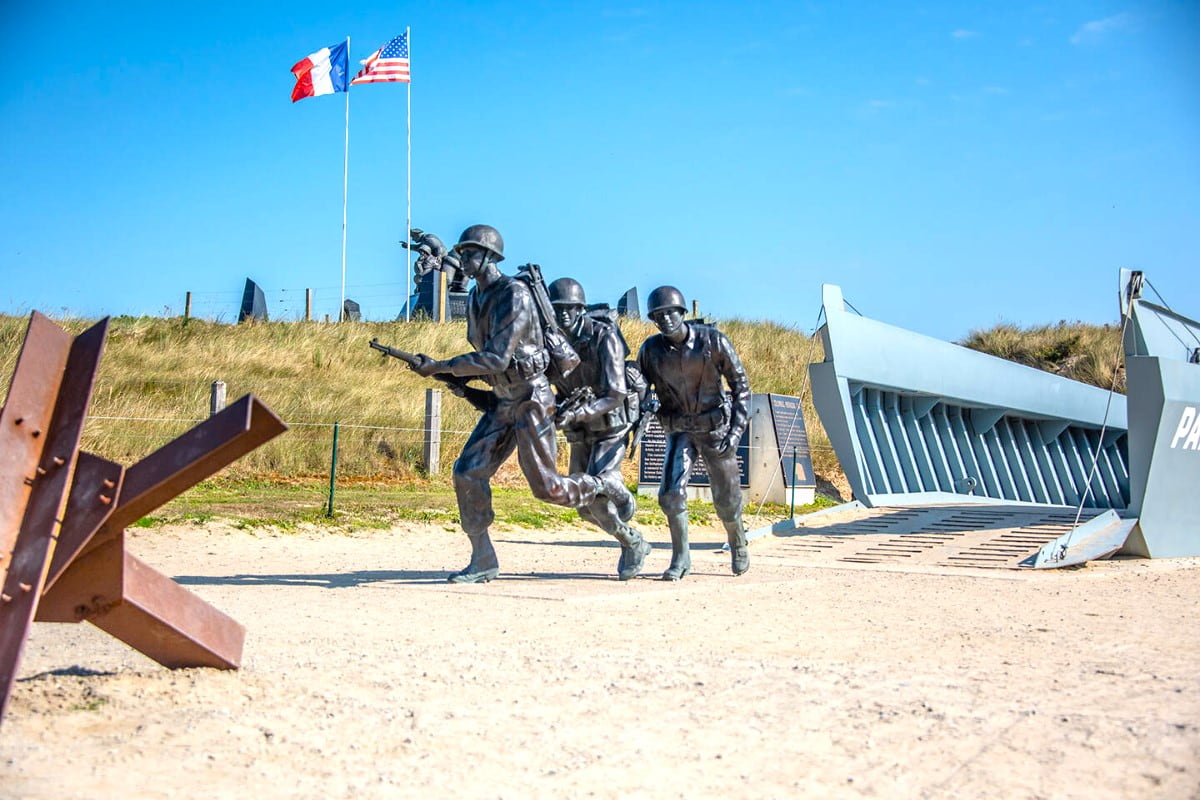
Beach sectors. The five main landing beaches stretch across 80 kilometers of coastline, each with distinct features and national memorials. I chose to focus on two beaches in a single day trip, finding this allowed enough time to properly experience the sites without rushing. Sword Beach, the closest to Caen, made a logical starting point.
Key D-Day sites. The landing area includes numerous museums and memorials:
- Omaha Beach and American Cemetery
- Utah Beach Museum
- Juno Beach Centre (Canadian)
- Gold Beach and Arromanches artificial harbor
- Sword Beach and British memorials
- Pointe du Hoc Ranger Monument
- German battery at Longues-sur-Mer
Transportation options. Several ways exist to visit the beaches from Caen.
| Transport Method | Cost | Duration | Advantages |
|---|---|---|---|
| Guided tour | 75-110€ | 8-9 hours | Historical context, no driving |
| Rental car | 40-60€/day + fuel | Self-paced | Flexibility, reach remote sites |
| Public bus | 5.60€ round-trip | Limited schedule | Budget-friendly, basic access |
| Private taxi | 150-200€ | 6-8 hours | Personalized, convenient |
Visitor advice. I recommend bringing layers even in summer, as the coastal winds can be strong and chilly. The American Cemetery closes at 5 PM (6 PM in summer), so plan accordingly. For a deeper understanding, I found the mobile app “D-Day 1944” invaluable – it provides historical context, maps, and audio commentary for major sites along the coast.
⭐ Best Tours
- Memorial de Caen Day Pass & D-Day Landing Beaches – Combine a visit to the Memorial de Caen with a tour of the historic landing beaches.
- Private Tour: Normandy Landing Beaches, Battlefields, and Cemeteries from Caen – Explore the most significant WWII sites with a private guide, including landing beaches and cemeteries.
2. Bayeux (Tapestry Museum)
Medieval gem. Just 30 minutes west of Caen by train, Bayeux charmed me with its remarkably preserved medieval center and world-famous tapestry. Unlike Caen, Bayeux escaped WWII bombing almost entirely, allowing its historic buildings to survive intact. The town’s narrow streets, half-timbered houses, and magnificent cathedral create an atmosphere that feels unchanged for centuries.
Tapestry treasure. The highlight of my visit was undoubtedly the Bayeux Tapestry, an astonishing 70-meter-long embroidered cloth depicting William the Conqueror’s invasion of England in 1066. Created in the 11th century, this UNESCO Memory of the World masterpiece tells its story through detailed scenes with Latin annotations. The museum provides excellent audio guides that explain each panel’s significance.
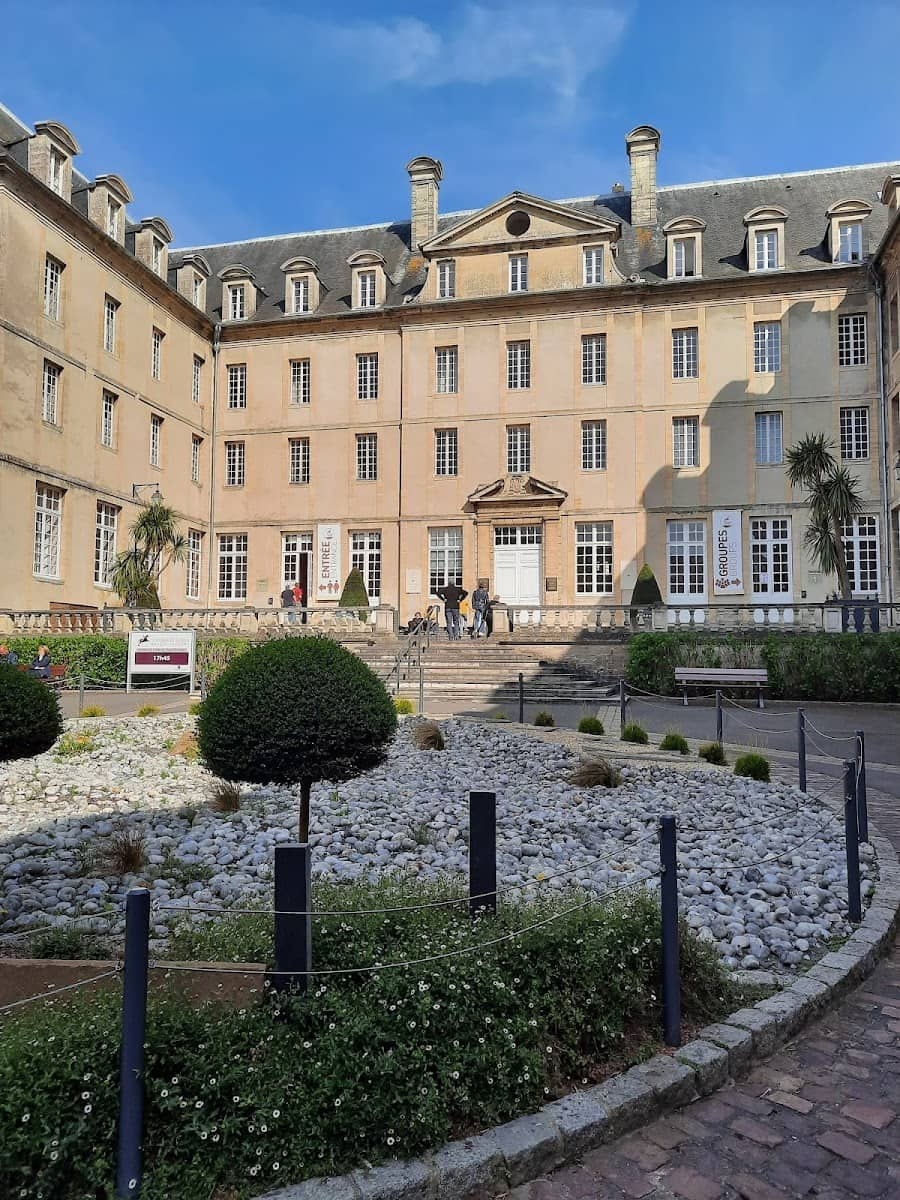
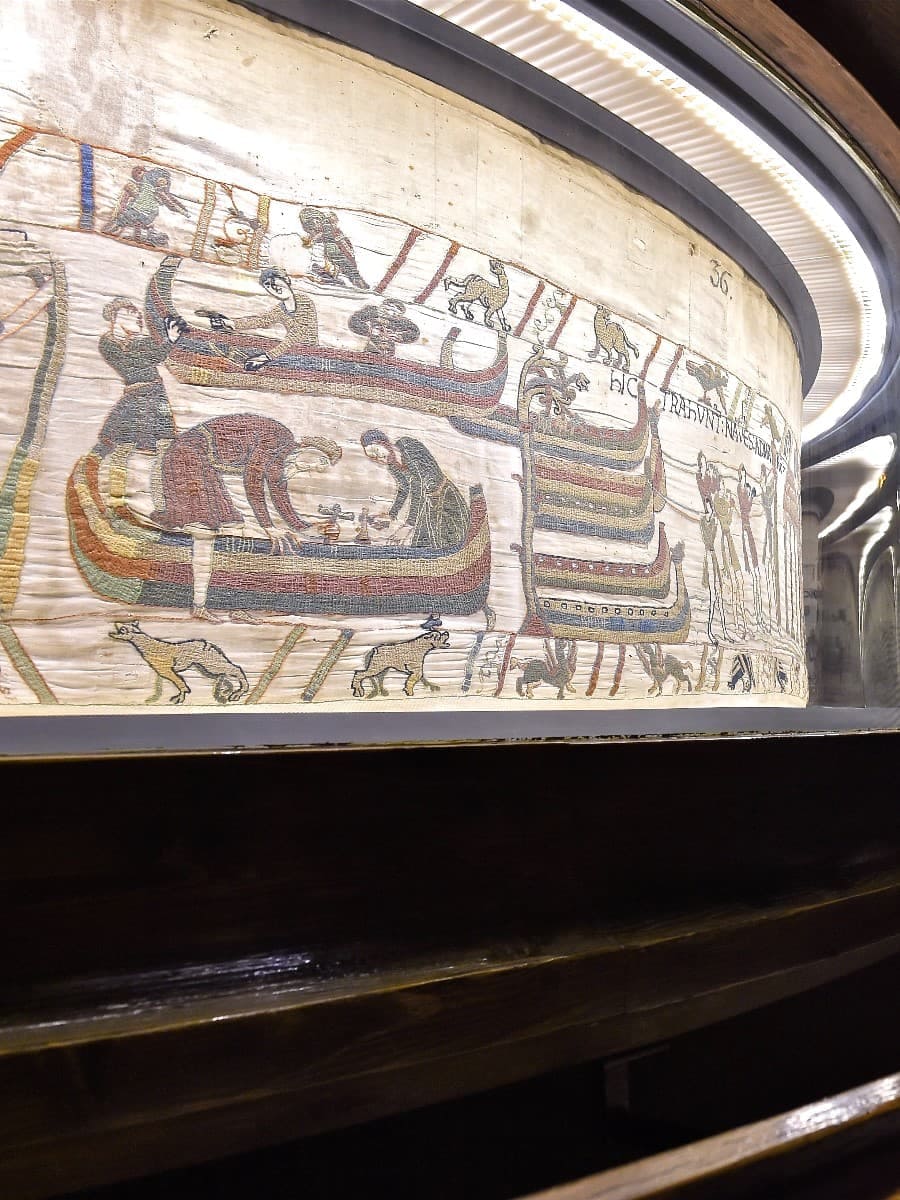

Highlights. Beyond the famous tapestry, I discovered several noteworthy attractions:
- Notre-Dame Cathedral (magnificent Gothic architecture)
- Old town center with medieval buildings
- MAHB (Museum of Art and History)
- Battle of Normandy Memorial Museum
- British Military Cemetery
- Water mills along the Aure River
- Saturday morning market in Place Saint-Patrice
| Transport | Travel Time | Cost | Frequency |
|---|---|---|---|
| Train | 22 minutes | 7.20€ one-way | Hourly |
| Bus (Bus Verts line 30) | 40 minutes | 2.30€ one-way | Every 2 hours |
| Rental car | 30 minutes | 40-60€/day + fuel | Self-paced |
| Guided tour | Full day | 85-120€ | Daily (includes other sites) |
⭐ Best Activities
- Caen: Guided Tour of Caen and Bayeux – Visit two historic cities in one day with a knowledgeable guide.
3. Cabourg (Seaside Town)
Belle Époque elegance. Just 25 kilometers northeast of Caen, Cabourg transported me to the glamorous era of 19th-century seaside resorts. This charming coastal town on the Côte Fleurie (Flowery Coast) features a magnificent 4-kilometer sandy beach lined with colorful beach cabins and the grand Grand Hôtel, immortalized by Marcel Proust in his novel “In Search of Lost Time” as Balbec.
Literary connections. Walking along Cabourg’s famous promenade Marcel Proust (the longest beachfront boardwalk in Europe), I felt connected to the Belle Époque period when the novelist found inspiration here. Proust’s regular room at the Grand Hôtel has been preserved as a small museum, offering insight into the writer’s connection to this elegant resort town.
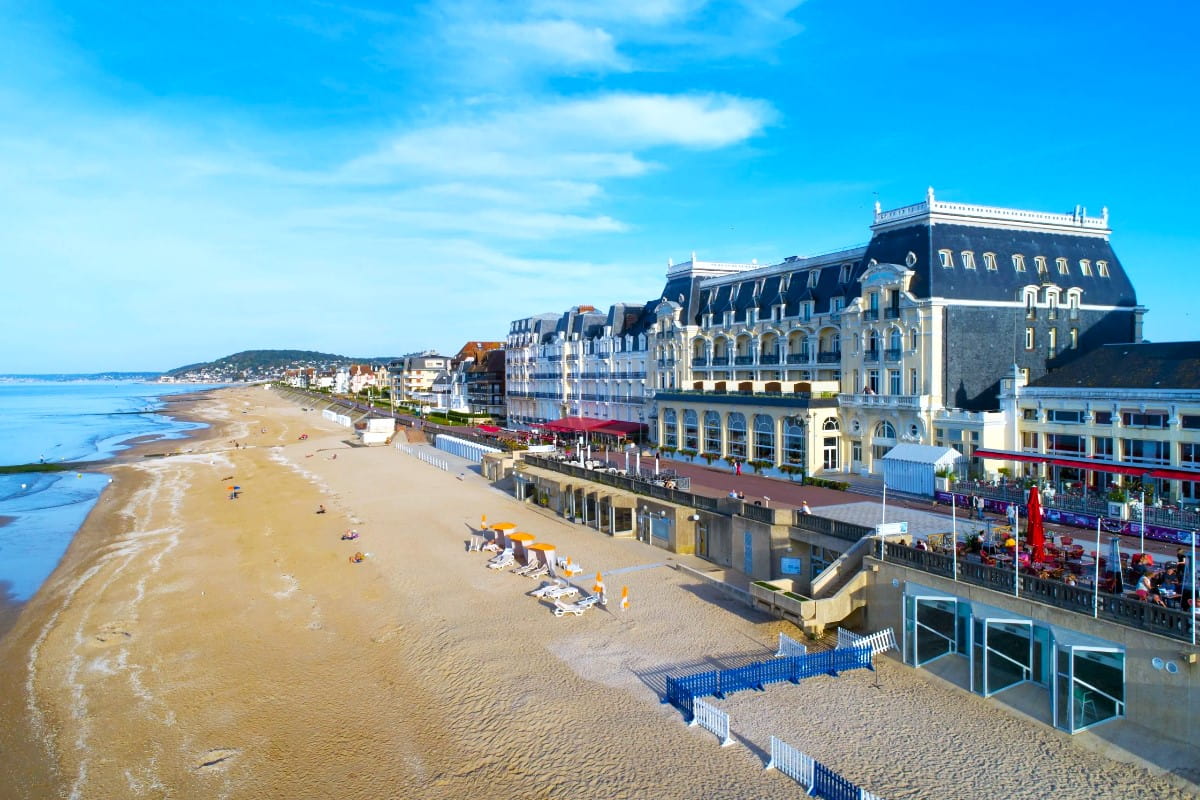
Cabourg attractions. During my day trip, I discovered several highlights:
- Grand beach with fine sand
- Casino gardens and Art Nouveau architecture
- Marcel Proust promenade
- Belle Époque villas
- Traditional market (Wednesdays and Sundays)
- Grand Hôtel (even if not staying, visit the lobby)
- Sailing club with rental options
Seasonal activities. Cabourg offers different experiences depending on when you visit.
| Season | Activities | Special Events |
|---|---|---|
| Summer | Swimming, sailing, beach clubs | Cabourg Film Festival (June) |
| Spring/Fall | Thalassotherapy, beach walks | Romantic Film Festival (September) |
| Winter | Casino gaming, spa treatments | Christmas illuminations (December) |
Travel logistics. I found several convenient ways to reach Cabourg from Caen.
- Bus: Bus Verts line 20, 45 minutes, 2.30€ one-way
- Train: To Dives-Cabourg station (5 km from center) + taxi, 35 minutes, 8.50€ one-way
- Car: 30 minutes via D513, free parking available at Avenue Charles de Gaulle
- Bicycle: 25 km via dedicated cycling path along the canal, rental in Caen from 15€/day
Culinary recommendation. Don’t leave without trying the fresh seafood at one of the beachfront restaurants. I enjoyed an excellent lunch at La Belle Époque (25-40€ per person), where the moules-frites (mussels with French fries) came with a spectacular sea view. For a budget option, the crêperie Le Petit Normand offers savory galettes from 8€.
⭐ Best Activities
- Karting Cabourg (Adults) – Race around the track in Cabourg, just a short trip from Caen.
4. Mont-Saint-Michel
Island marvel. Mont-Saint-Michel, rising dramatically from its bay about 130 kilometers west of Caen, provided the most unforgettable day trip of my Norman adventure. This UNESCO World Heritage site features a medieval abbey perched atop a rocky island, surrounded by one of the world’s most dramatic tidal systems. Despite being the region’s most famous attraction, I found the journey from Caen worthwhile for this architectural and natural wonder.
Abbey exploration. Climbing the winding streets to the abbey at the summit, I passed through layers of history – from the village gates to the Grand Rue lined with medieval houses, and finally to the magnificent Benedictine abbey itself. The abbey’s architecture spans centuries, with Romanesque and Gothic elements creating a harmonious whole. The cloister, with its elegant columns and garden, offers a peaceful contrast to the dramatic exterior.
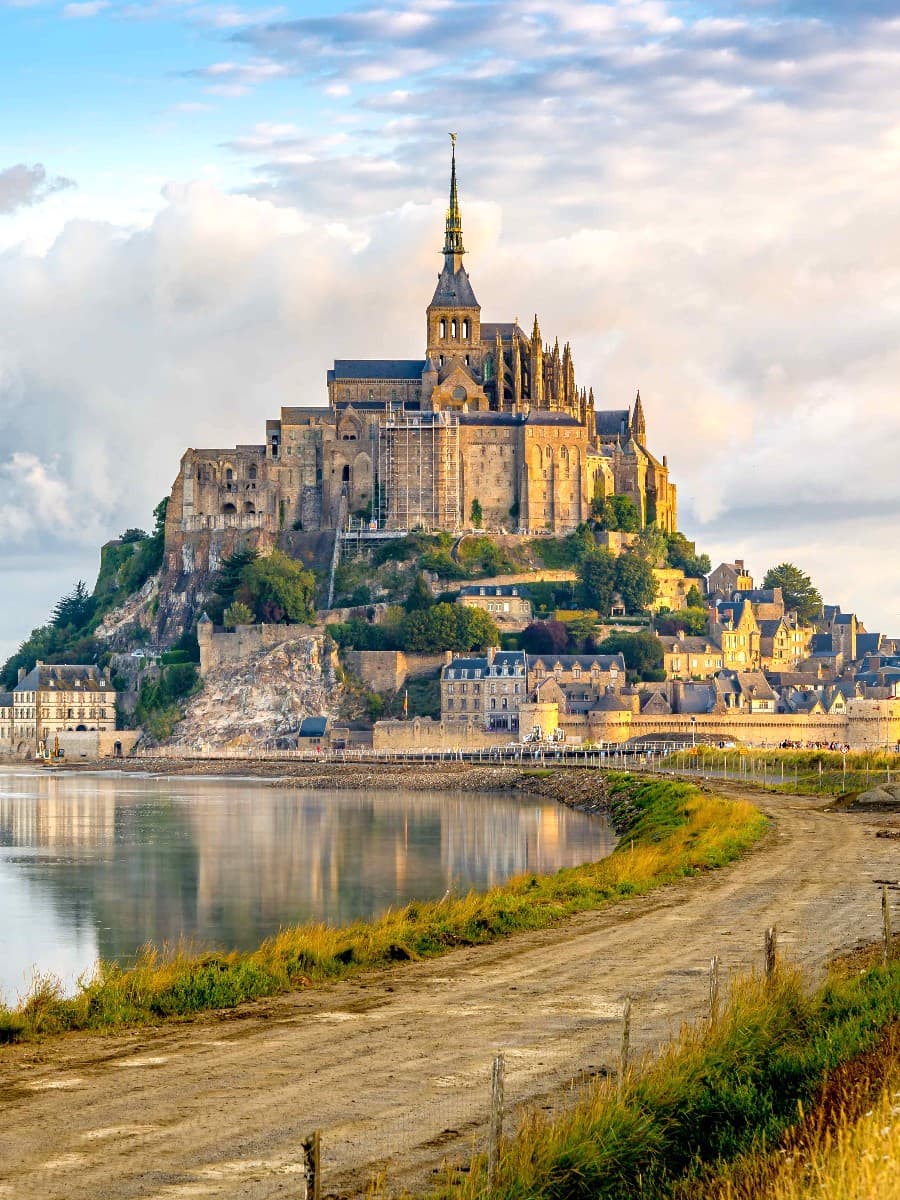
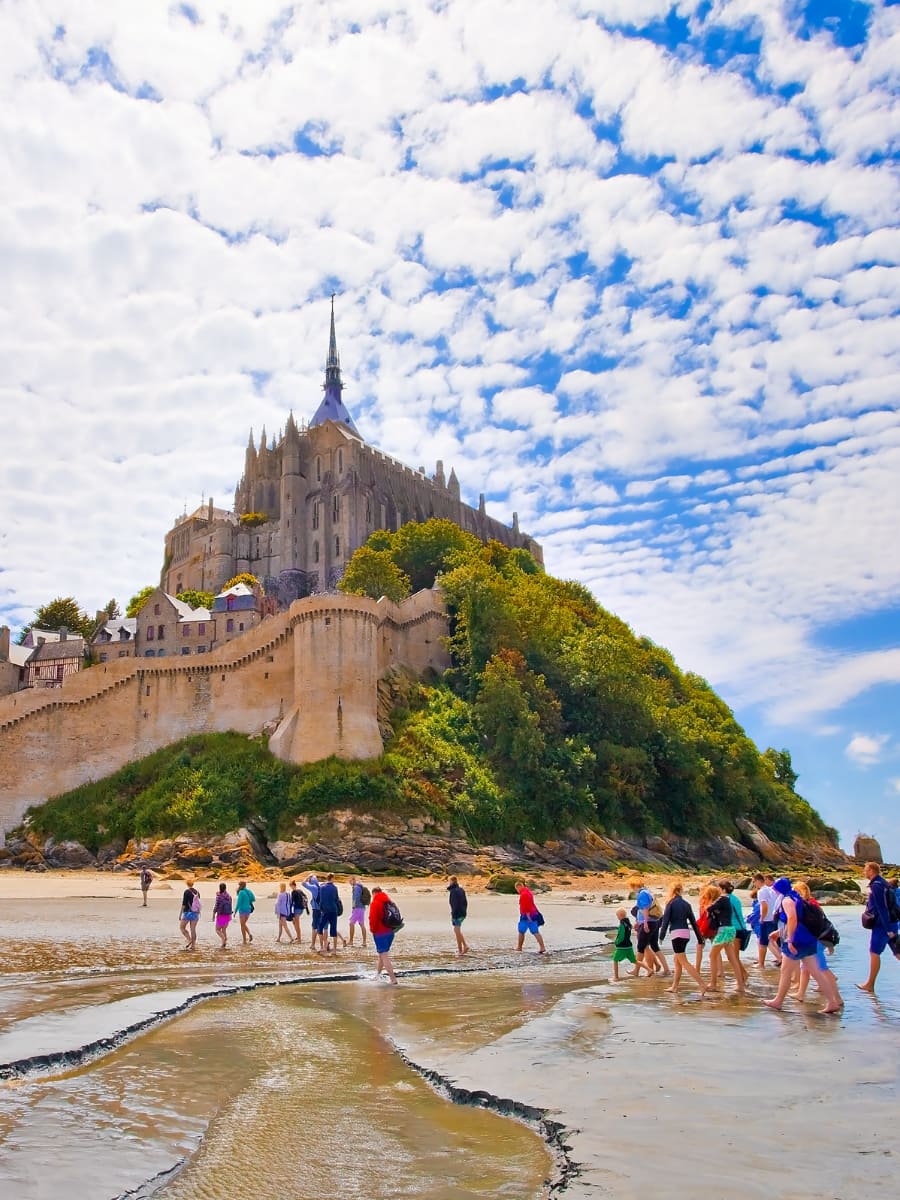
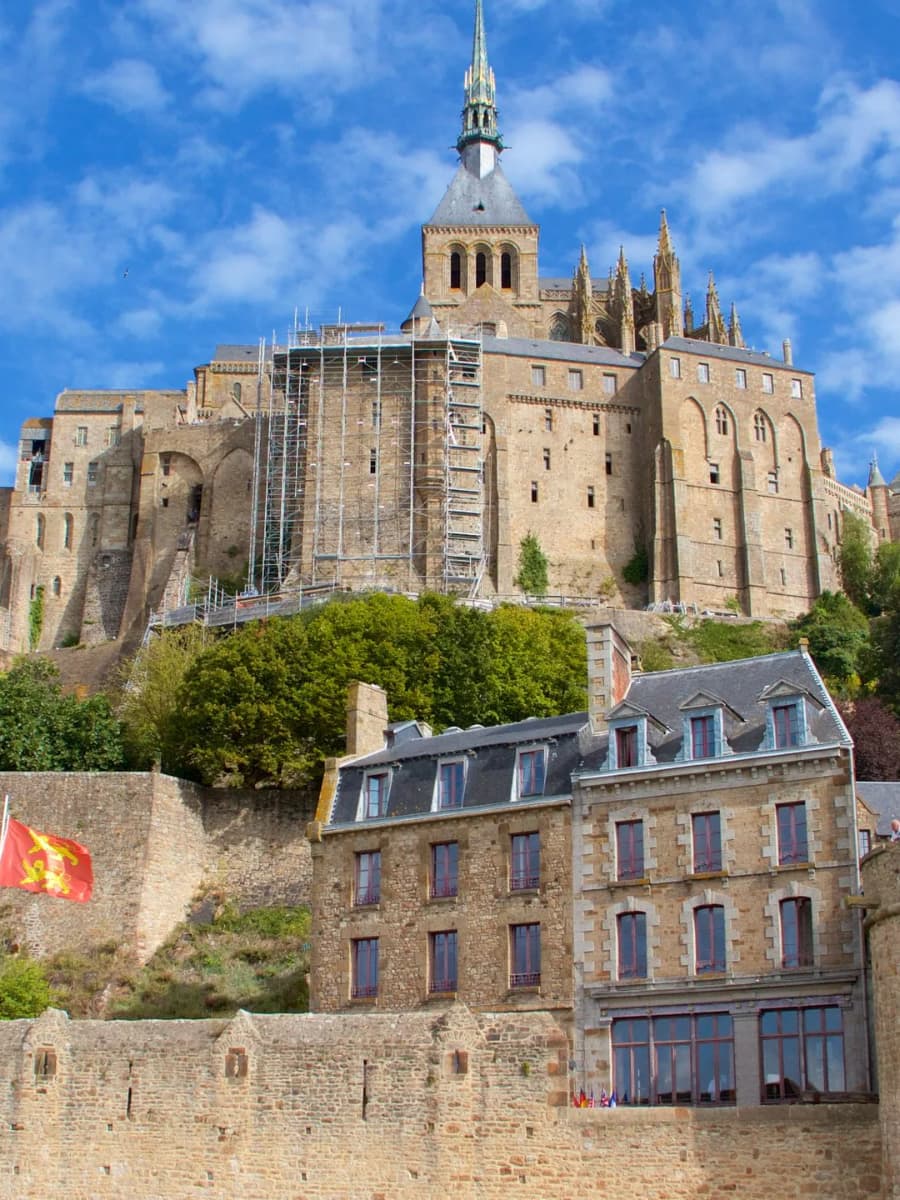
Mont-Saint-Michel highlights. During my visit, I discovered several must-see features:
- The Abbey (including the church, cloister, and great pilgrimage hall)
- Ramparts with panoramic views
- Grande Rue with shops and museums
- Parish church
- Maritime Museum
- Tidal flats (with guided walks at low tide)
- Bay views from the West Terrace
Tidal considerations. The dramatic tides that isolate the Mont create different experiences.
| Tide Status | Experience | Timing |
|---|---|---|
| High tide | Island completely surrounded by water | Check tide calendar |
| Rising/falling tide | Dramatic water movement | 2 hours before/after high tide |
| Low tide | Guided walks on exposed seabed | Only with certified guides (25€) |
Travel logistics. While Mont-Saint-Michel is the farthest day trip from Caen, several options make it accessible:
- Guided tour: Most convenient, 8-10 hours, 70-90€ including transportation and abbey entrance
- Rental car: 90-minute drive each way, parking at mainland lot (14.90€) + free shuttle
- Public transport: Train to Dol-de-Bretagne + bus connection, 2.5 hours each way, 30-40€ round trip
Timing advice. I arrived early (before 9 AM) to experience the Mont before the crowds and had lunch at La Mère Poulard (famous for its omelets, though at 35€ they’re more about tradition than value). By mid-afternoon, I explored the bay views from the less-crowded western side. If possible, check the tide tables when planning your visit – seeing the tide rush in (with speeds “as fast as a galloping horse”) is an unforgettable natural spectacle.
⭐ Best Activities
- Private Day Tour of Mont-Saint-Michel from Caen – Discover the iconic Mont-Saint-Michel on a private day trip from Caen.
FAQ
What are the top things to see in Caen?
Caen offers visitors numerous historical sites including the impressive Château de Caen, one of Europe’s largest medieval enclosures built around 1060 by William the Conqueror. Other must-see attractions include the two grand churches founded by William and his wife Matilda of Flanders, along with the beautifully reconstructed city center featuring a mix of traditional Norman buildings and modern architecture.
How was Caen founded by William the Conqueror?
Around 1060, William the Conqueror, Duke of Normandy and King of England, began construction of the Château de Caen which became the center of his ducal court. Caen succeeded Bayeux as the capital of Lower Normandy, complementing Rouen as the second ducal capital.
What makes Caen the city of William the Conqueror?
Caen is known as William the Conqueror’s hometown because he established it as a strategic center during the Middle Ages and constructed its most famous monuments. The Duke of Normandy built the massive castle, founded two grand churches, and developed Caen into an important Norman city that still bears his architectural legacy today.
How can visitors get to Caen from Paris?
Visitors can reach Caen from Paris by train in just 2 hours 4 minutes from Paris St Lazare station, with tickets costing between €40-90. Alternative options include taking a direct bus from Paris Bercy Seine (3h 40m), using a rideshare service (2h 58m), or driving the 233.8 km distance (approximately 2h 18m).
What connects Caen to Ouistreham and the sea?
The Canal de Caen à la Mer (Caen Canal) connects the Port of Caen to Ouistreham and the English Channel, running parallel to the Orne River for 14 kilometers. Construction of this important waterway began in 1837 and was completed in 1857, creating a vital link between the city and the sea.
Is Caen ideally located for exploring Normandy?
Caen is perfectly positioned just 15 km inland from the northwestern coast of France, making it an excellent base for exploring the region. The city is situated only 10 minutes from the beaches, close to the bustling resorts of Deauville and Cabourg, and provides easy access to Norman Switzerland and the Pays d’Auge.
How can travelers reach Le Havre and Rouen from Caen?
Travelers can reach Rouen from Caen in about 1h 40m by bus or train, while Le Havre is accessible in approximately 1h 35m by direct bus. Both cities can also be reached by rideshare services (the cheapest option) or by driving, with Rouen being 127.3 km away and Le Havre 87.2 km from Caen.
What is special about Caen stone in the city’s buildings?
Caen stone, first used by the Romans in the 1st century, became the signature building material for the city’s most important structures built in the 11th century. This distinctive limestone was used in the construction of William the Conqueror’s projects including the austere Norman Romanesque Church of Saint-Étienne and the Church of La Trinité, giving Caen its characteristic appearance.
What can visitors see in the center of Caen?
In the heart of Caen, visitors will find the impressive castle, medieval streets with half-timbered houses, and the Avenue du 6 Juin, a true emblem of the city’s post-WWII reconstruction. The city center blends historical elements like the Place de la Resistance with its six Marine Tours in Pierre de Caen with modern urban planning and architecture.
Why is La Colline aux Oiseaux worth a visit?
La Colline aux Oiseaux (Bird Hill) is worth visiting as it offers 17 hectares of beautifully landscaped gardens located in the heart of Caen, just minutes from downtown. This green oasis features themed gardens including a stunning rose garden with over 15,000 roses, a mini-farm with animals, playgrounds, and a miniature Normandy village that’s perfect for families.
